Dihydroindolizinone Derivative
Kiho; Toshihiro ; et al.
U.S. patent application number 16/960308 was filed with the patent office on 2021-02-25 for dihydroindolizinone derivative. This patent application is currently assigned to DAIICHI SANKYO COMPANY, LIMITED. The applicant listed for this patent is DAIICHI SANKYO COMPANY, LIMITED. Invention is credited to Toshihiro Kiho, Satoshi Komoriya, Taisaku Tanaka, Tatsuya Yano.
| Application Number | 20210053965 16/960308 |
| Document ID | / |
| Family ID | 1000005236792 |
| Filed Date | 2021-02-25 |
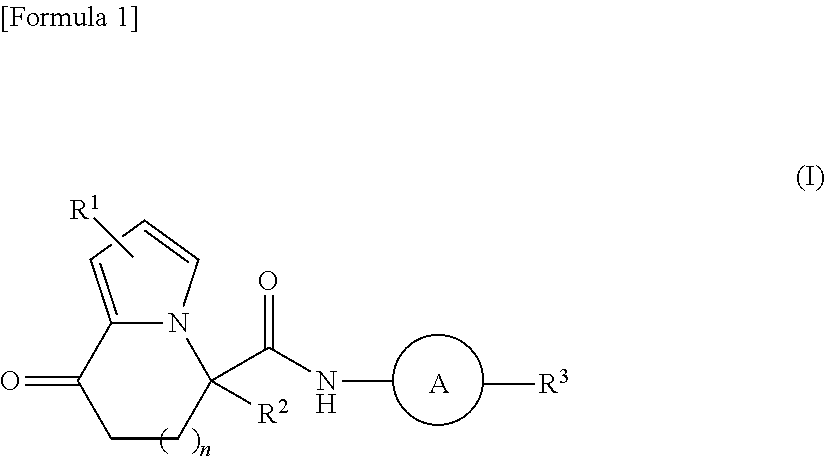
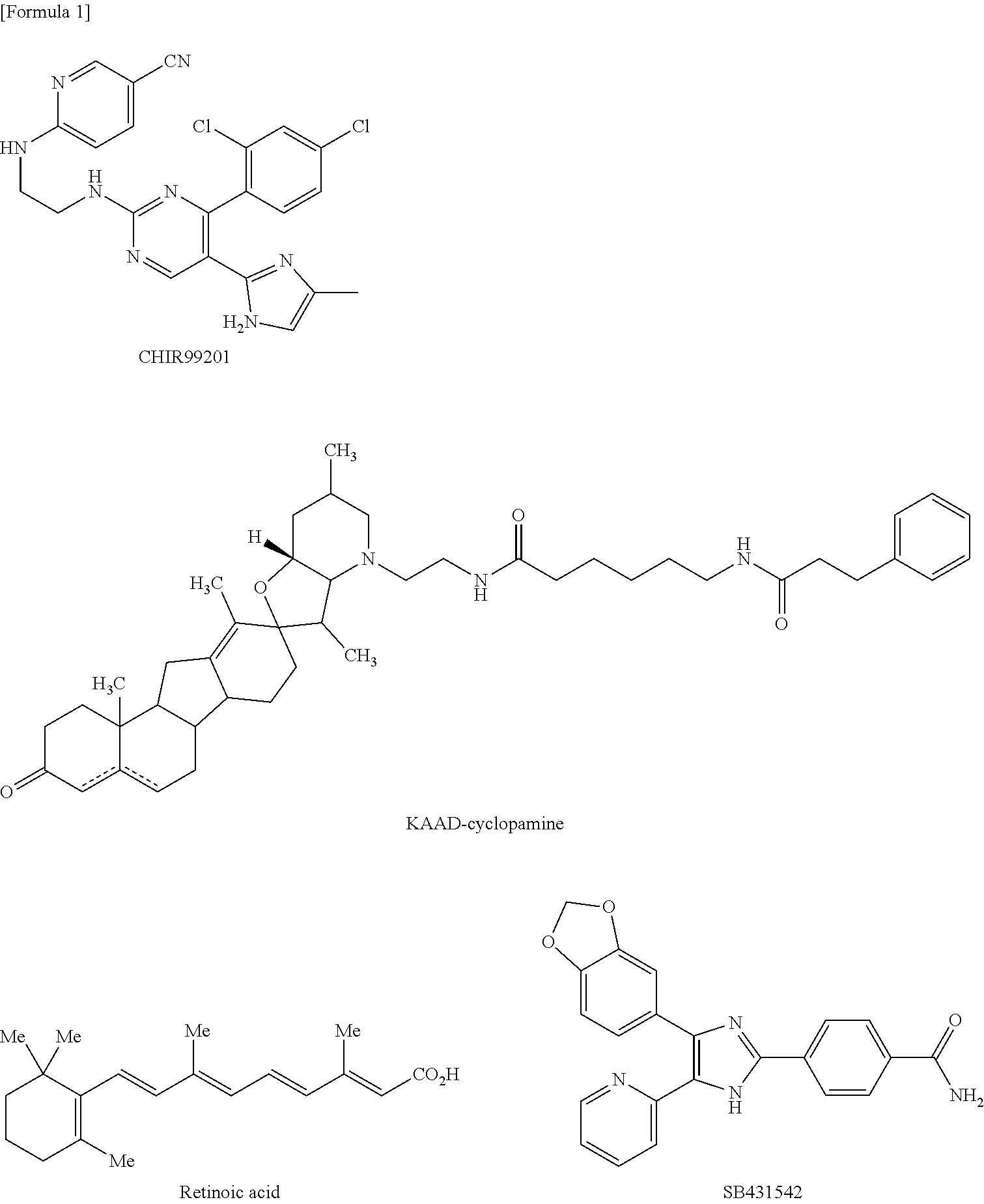



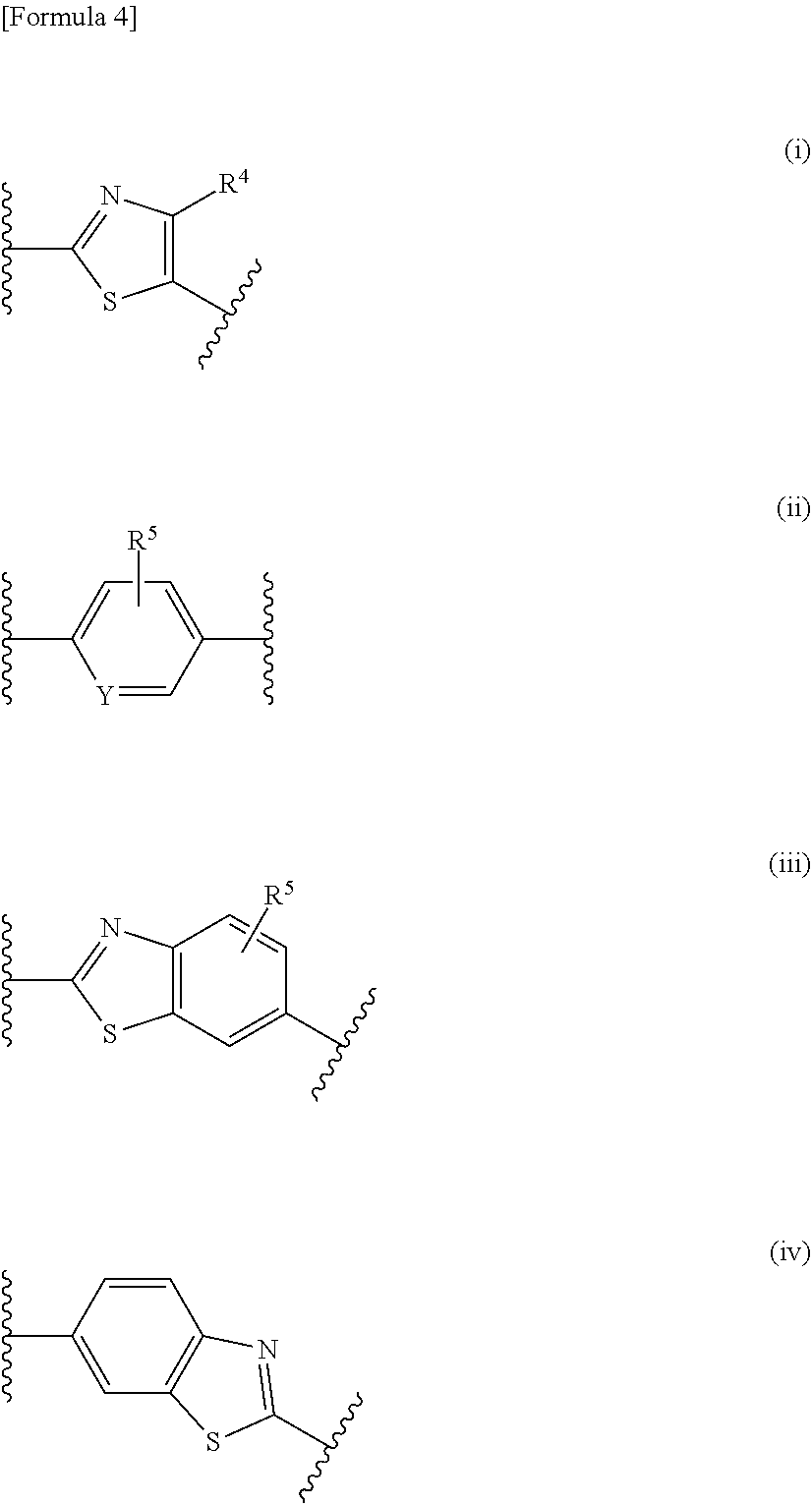


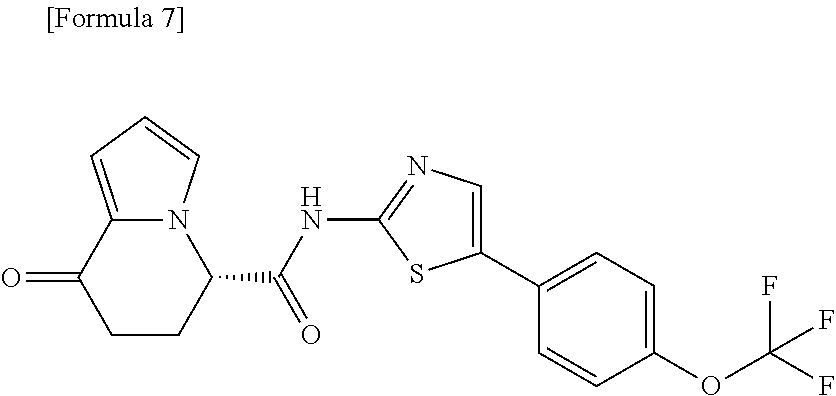



View All Diagrams
| United States Patent Application | 20210053965 |
| Kind Code | A1 |
| Kiho; Toshihiro ; et al. | February 25, 2021 |
DIHYDROINDOLIZINONE DERIVATIVE
Abstract
It is an object of the present invention to provide a new compound capable of efficiently inducing differentiation from pluripotent stem cells into insulin-producing cells. The object of the present invention is achieved by a compound represented by formula (I): ##STR00001## wherein R.sup.1, R.sup.2, R.sup.3, n and A have the same meanings as defined in the description, respectively, or a salt thereof.
| Inventors: | Kiho; Toshihiro; (Chuo-ku, JP) ; Yano; Tatsuya; (Chuo-ku, JP) ; Komoriya; Satoshi; (Chuo-ku, JP) ; Tanaka; Taisaku; (Chuo-ku, JP) | ||||||||||
| Applicant: |
|
||||||||||
|---|---|---|---|---|---|---|---|---|---|---|---|
| Assignee: | DAIICHI SANKYO COMPANY,
LIMITED Chuo-ku, Tokyo JP |
||||||||||
| Family ID: | 1000005236792 | ||||||||||
| Appl. No.: | 16/960308 | ||||||||||
| Filed: | January 18, 2019 | ||||||||||
| PCT Filed: | January 18, 2019 | ||||||||||
| PCT NO: | PCT/JP2019/001364 | ||||||||||
| 371 Date: | July 6, 2020 |
| Current U.S. Class: | 1/1 |
| Current CPC Class: | A61P 3/10 20180101; C07D 471/04 20130101; C12N 2501/73 20130101; C12N 5/0676 20130101; C07D 487/04 20130101; C12N 2501/999 20130101 |
| International Class: | C07D 471/04 20060101 C07D471/04; C07D 487/04 20060101 C07D487/04; A61P 3/10 20060101 A61P003/10; C12N 5/071 20060101 C12N005/071 |
Foreign Application Data
| Date | Code | Application Number |
|---|---|---|
| Jan 18, 2018 | JP | 2018-006269 |
Claims
1. A compound represented by formula (I): ##STR00176## wherein each substituent is defined as follows: R.sup.1 represents a hydrogen atom, a halogen atom, or a C1-C6 alkyl group; R.sup.2 represents a hydrogen atom or a C1-C6 alkyl group; R.sup.3 represents an aryl group optionally substituted with one to four substituents independently selected from a substituent group .alpha., a C5-C10 cycloalkenyl group optionally substituted with one to four substituents independently selected from the substituent group .alpha., or a heterocyclyl group optionally substituted with one to four substituents independently selected from the substituent group .alpha.; the substituent group .alpha. includes a halogen atom, a cyano group, a carboxy group, a C1-C6 alkyl group, a C1-C6 alkoxy group, a halogeno-C1-C6 alkyl group, a halogeno-C1-C6 alkoxy group, a hydroxy C1-C6 alkyl group, a C1-C6 alkoxy C1-C6 alkoxy group, a (C1-C6 alkyl)carbonyl group, a (C1-C6 alkoxy)carbonyl group, a (C1-C6 alkoxy)carbonyloxy group, a phenyl C1-C6 alkoxy group, a non-aromatic heterocyclyl group, a carbamoyl group optionally substituted with one or two C1-C6 alkyl groups, a C1-C6 alkoxy group substituted by a carbamoyl group optionally substituted with one or two C1-C6 alkyl groups, a sulfamoyl group substituted with one or two C1-C6 alkyl groups, a phenoxy group optionally substituted with one to four substituents independently selected from a substituent group .beta., a phenyl group optionally substituted with one to four substituents independently selected from the substituent group .beta., and a benzoyl group optionally substituted with one to four substituents independently selected from the substituent group .beta.; the substituent group .beta. includes a halogen atom, a C1-C6 alkyl group, a C1-C6 alkoxy group, a halogeno-C1-C6 alkyl group, a halogeno-C1-C6 alkoxy group, and a (C1-C6 alkoxy)carbonyl group; n represents 0 or 1; and A represents a group represented by any one of formulas (i) to (iv) below: ##STR00177## wherein each substituent is defined as follows: and * each represent a bond, where is bonded to a nitrogen atom in an amido group of formula (I), and * is bonded to R.sup.3; R.sup.4 represents a hydrogen atom, a C1-C6 alkyl group, a halogeno-C1-C6 alkyl group, or a (C1-C6 alkoxy)carbonyl group; R.sup.5 represents a hydrogen atom, a halogen atom, or a C1-C6 alkyl group; and Y represents N or CH; or a salt thereof.
2. The compound according to claim 1, wherein R.sup.3 represents a naphthyl group, a 1,3-benzodioxolyl group, a 2,2-dihalogeno-1,3-benzodioxolyl group, a C5-C10 cycloalkenyl group, a phenyl group optionally substituted with one or two substituents independently selected from a substituent group .alpha.1, or a 5- or 6-membered heterocyclyl group optionally substituted with one or two substituents independently selected from the substituent group .alpha.1; the substituent group .alpha.1 includes a halogen atom, a cyano group, a carboxy group, a phenoxy group, a benzoyl group, a C1-C6 alkyl group, a C1-C6 alkoxy group, a halogeno-C1-C6 alkyl group, a halogeno-C1-C6 alkoxy group, a hydroxy C1-C6 alkyl group, a C1-C6 alkoxy C1-C6 alkoxy group, a (C1-C6 alkyl)carbonyl group, a (C1-C6 alkoxy)carbonyl group, a (C1-C6 alkoxy)carbonyloxy group, a phenyl C1-C6 alkoxy group, a 5- or 6-membered non-aromatic heterocyclyl group, a carbamoyl group optionally substituted with one or two C1-C6 alkyl groups, a C1-C6 alkoxy group substituted by a carbamoyl group optionally substituted with one or two C1-C6 alkyl groups, a sulfamoyl group substituted with one or two C1-C6 alkyl groups, and a phenyl group optionally substituted with one or two substituents independently selected from a substituent group .beta.1; and the substituent group .beta.1 includes a halogen atom, a C1-C6 alkyl group, a C1-C6 alkoxy group, and a (C1-C6 alkoxy)carbonyl group; or a salt thereof.
3. The compound according to claim 1, wherein R.sup.3 represents a naphthyl group, a 1,3-benzodioxolyl group, a 2,2-dihalogeno-1,3-benzodioxolyl group, a C5-C10 cycloalkenyl group, a phenyl group optionally substituted with one or two substituents independently selected from a substituent group .alpha.2, or a 5- or 6-membered heterocyclyl group optionally substituted with one or two substituents independently selected from a substituent group .gamma.2; the substituent group .alpha.2 includes a halogen atom, a cyano group, a carboxy group, a phenoxy group, a benzoyl group, a C1-C6 alkyl group, a C1-C6 alkoxy group, a halogeno-C1-C6 alkyl group, a halogeno-C1-C6 alkoxy group, a hydroxy C1-C6 alkyl group, a C1-C6 alkoxy C1-C6 alkoxy group, a (C1-C6 alkyl)carbonyl group, a (C1-C6 alkoxy)carbonyl group, a (C1-C6 alkoxy)carbonyloxy group, a phenyl C1-C6 alkoxy group, a 5- or 6-membered non-aromatic heterocyclyl group, a carbamoyl group optionally substituted with one or two C1-C6 alkyl groups, a C1-C6 alkoxy group substituted by a carbamoyl group optionally substituted with one or two C1-C6 alkyl groups, a sulfamoyl group substituted with one or two C1-C6 alkyl groups, and a phenyl group optionally substituted with one or two substituents independently selected from a substituent group .beta.2; the substituent group .beta.2 includes a halogen atom, a C1-C6 alkyl group, and a C1-C6 alkoxy group; and the substituent group .gamma.2 includes a halogen atom, a C1-C6 alkyl group, a C1-C6 alkoxy group, a (C1-C6 alkyl)carbonyl group, and a (C1-C6 alkoxy)carbonyl group; or a salt thereof.
4. The compound according to claim 1, wherein R.sup.3 represents a naphthyl group, a 1,3-benzodioxolyl group, a 2,2-difluoro-1,3-benzodioxolyl group, a C5-C8 cycloalkene-1-yl group, a phenyl group optionally substituted with one or two substituents independently selected from a substituent group .alpha.3, or a 5- or 6-membered heterocyclyl group optionally substituted with one or two substituents independently selected from a substituent group .gamma.3; the substituent group .alpha.3 includes a halogen atom, a cyano group, a carboxy group, a phenoxy group, a benzoyl group, a C1-C4 alkyl group, a C1-C4 alkoxy group, a halogeno-C1-C2 alkyl group, a halogeno-C1-C2 alkoxy group, a hydroxy C1-C4 alkyl group, a C1-C2 alkoxy C1-C2 alkoxy group, a (C1-C4 alkyl)carbonyl group, a (C1-C4 alkoxy)carbonyl group, a (C1-C4 alkoxy)carbonyloxy group, a phenyl C1-C4 alkoxy group, a morpholin-1-yl group, a carbamoyl group optionally substituted with one or two C1-C4 alkyl groups, a C1-C2 alkoxy group substituted by a carbamoyl group optionally substituted with one or two C1-C4 alkyl groups, a sulfamoyl group substituted with one or two C1-C4 alkyl groups, and a phenyl group optionally substituted with one or two substituents independently selected from a substituent group .beta.3; the substituent group .beta.3 includes a fluorine atom, a chlorine atom, a C1-C4 alkyl group, or a C1-C4 alkoxy group; and the substituent group .gamma.3 includes a halogen atom, a C1-C4 alkyl group, a C1-C4 alkoxy group, a (C1-C4 alkyl)carbonyl group, and a (C1-C4 alkoxy)carbonyl group; or a salt thereof.
5. The compound according to any one of claims 1 to 4, wherein R.sup.1 represents a hydrogen atom, a chlorine atom, or a methyl group, or a salt thereof.
6. The compound according to any one of claims 1 to 5, wherein R.sup.2 represents a hydrogen atom or a methyl group, or a salt thereof.
7. The compound according to any one of claims 1 to 6, wherein A represents a group represented by formula (i), and R.sup.4 represents a hydrogen atom, a C1-C6 alkyl group, a halogeno-C1-C6 alkyl group, or a (C1-C6 alkoxy)carbonyl group, or a salt thereof.
8. The compound according to claim 7, wherein R.sup.4 represents a hydrogen atom, a methyl group, or a trifluoromethyl group, or a salt thereof.
9. The compound according to any one of claims 1 to 6, wherein A represents a group represented by formula (ii), and R.sup.5 represents a hydrogen atom, a halogen atom, or a C1-C6 alkyl group, or a salt thereof.
10. The compound according to claim 9, wherein R.sup.5 represents a hydrogen atom, a fluorine atom, or a methyl group, or a salt thereof.
11. The compound according to any one of claims 1 to 6, wherein A represents a group represented by formula (iii) and R.sup.5 represents a hydrogen atom, a fluorine atom, or a methyl group, or a salt thereof.
12. The compound according to any one of claims 1 to 6, wherein A represents a group represented by formula (iv), or a salt thereof.
13. The compound according to any one of claims 1 to 12, wherein n represents 1, or a salt thereof.
14. The compound according to any one of claims 1 to 13, wherein R.sup.3 represents a 2,2-difluoro-1,3-benzodioxolyl group, a 1-tert-butoxycarbonyl-3,6-dihydro-2H-pyridine-4-yl group, or a phenyl group optionally substituted with one or two substituents independently selected from the group consisting of a fluorine atom, a chlorine atom, a trifluoromethyl group, a tert-butoxy group, a trifluoromethoxy group, a 2,2,2-trifluoroethoxy group, a benzyloxy group, and a phenoxy group, or a salt thereof.
15. The compound according to claim 1, which is any one selected from a compound group shown below: ##STR00178## or a salt thereof.
16. The compound according to claim 1, represented by a formula below: ##STR00179## or a salt thereof.
17. An optical isomer of the compound according to claim 1, represented by a formula below: ##STR00180## or a salt thereof.
18. The compound according to claim 1, represented by a formula below: ##STR00181## or a salt thereof.
19. The compound according to claim 1, represented by a formula below: ##STR00182## or a salt thereof.
20. The compound according to claim 1, represented by a formula below: ##STR00183## or a salt thereof.
21. The compound according to claim 1, represented by a formula below: ##STR00184## or a salt thereof.
22. The compound according to claim 1, represented by a formula below: ##STR00185## or a salt thereof.
23. An optical isomer of the compound according to claim 1, represented by a formula below: ##STR00186## or a salt thereof.
24. The compound according to claim 1, represented by a formula below: ##STR00187## or a salt thereof.
25. The compound according to claim 1, represented by a formula below: ##STR00188## or a salt thereof.
26. The compound according to claim 1, represented by a formula below: ##STR00189## or a salt thereof.
27. The compound according to any one of claims 1 to 26, for differentiating pluripotent stem cells into insulin-producing cells, or a salt thereof.
28. A differentiation inducer of pluripotent stem cells into insulin-producing cells, comprising the compound according to any one of claims 1 to 26 or a salt thereof.
29. Use of the compound according to any one of claims 1 to 26 or a salt thereof for differentiating pluripotent stem cells into insulin-producing cells.
30. A method for differentiating pluripotent stem cells into insulin-producing cells, using a UCHL1 activator.
31. The method according to claim 30, wherein the UCHL1 activator is the compound according to any one of claims 1 to 26 or a salt thereof.
32. A method for differentiating pluripotent stem cells into insulin-producing cells, using the compound according to any one of claims 1 to 26 or a salt thereof.
33. A pharmaceutical composition comprising the compound according to any one of claims 1 to 26 or a pharmaceutically acceptable salt thereof as an active ingredient.
34. The pharmaceutical composition according to claim 33 for treating and/or preventing diabetes or a neurodegenerative disease.
35. The pharmaceutical composition according to claim 34, wherein the diabetes or the neurodegenerative disease is type 1 diabetes, type 2 diabetes, Parkinson's disease, or Alzheimer's disease.
36. Use of the compound according to any one of claims 1 to 26 or a pharmaceutically acceptable salt thereof for producing medicament for treating and/or preventing diabetes or a neurodegenerative disease.
37. The use according to claim 36, wherein the diabetes or neurodegenerative disease is type 1 diabetes, type 2 diabetes, Parkinson's disease, or Alzheimer's disease.
38. The compound according to any one of claims 1 to 26 for use in a method for treating and/or preventing diabetes or a neurodegenerative disease, or a pharmaceutically acceptable salt thereof.
39. The compound according to claim 38, wherein the diabetes or neurodegenerative disease is type 1 diabetes, type 2 diabetes, Parkinson's disease, or Alzheimer's disease, or a pharmaceutically acceptable salt thereof.
40. A method for treating and/or preventing diabetes or a neurodegenerative disease, comprising administering a pharmacologically effective amount of the compound according to claims 1 to 26 or a pharmaceutically acceptable salt thereof to a warm-blooded animal.
41. The method according to claim 40, wherein the diabetes or neurodegenerative disease is type 1 diabetes, type 2 diabetes, Parkinson's disease, or Alzheimer's disease.
42. The method according to claim 40 or 41, wherein the warm-blooded animal is a human.
Description
TECHNICAL FIELD
[0001] The present invention relates to a compound which promotes differentiation of pluripotent stem cells into insulin-producing cells.
BACKGROUND ART
[0002] Diabetes develops with various genetic factors and environmental factors as the background and is a severe disease that significantly reduces the QOL of patients as a result of complications such as nephropathy induced by chronical hyperglycemia. Currently, the number of diabetics in the world exceeds 400 million, which is also problematic in view of medical care economics. Diabetes is roughly classified into type 1 and type 2 diabetes, and loss of pancreatic .beta. cells having an insulin secretory function is a major cause in pathological conditions of both. Administration of insulin preparations is a common method for treating type 1 diabetes and severe type 2 diabetes with significant loss of pancreatic .beta. cells, but there are many problems such as side effects including hypoglycemia and the necessity of frequent self-injection. In recent years, transplantation of pancreatic islet cells isolated from an organ donor into a type 1 diabetic patient has become possible and is expected as a treatment method which replaces insulin treatment and enables complete remission of diabetes. However, the wide adoption is difficult due to lack of pancreatic islet donors. Therefore, it is desired to urgently realize a technique for producing insulin-producing cells in a large amount from pluripotent stem cells.
[0003] As a technique for producing insulin-producing cells from pluripotent stem cells, a method of inducing differentiation from ES cells or iPS cells into insulin-producing cells through a 5-stage to 7-stage process using a compound represented by the following formula has been reported (Patent Literature 1 and Non Patent Literatures 1, 2, 3, 4, and 5). In the method of Shahjalal, et al. (Patent Literature 1 and Non Patent Literature 4), insulin-producing cells can be produced from human iPS cells stepwise through a 5-stage differentiation process. First, iPS cells grown in a maintenance medium are cultured in a medium containing activin A or a GSK3.beta. inhibitor CHIR99201 several days in stage 1, to induce Sox17-positive definitive endoderm cells. In stage 2, the definitive endoderm cells are treated with FGF10 or a sonic hedgehog inhibitor KAAD-cyclopamine for several days, to induce Foxa2-positive primitive gut tube cells. Further, in stage 3, the primitive gut tube cells are treated with a medium containing retinoic acid, KAAD-cyclopamine, a TGF.beta. receptor kinase inhibitor SB431542, and a BMP signal inhibitor Noggin for several days, to induce differentiation into PDX1-positive pancreatic progenitor cells. In stage 4, the pancreatic progenitor cells are stimulated with a protein kinase C activator indolactam V, ALk5 inhibitor II that is a TGF.beta. receptor kinase inhibitor, and Noggin, to induce Ngn3-positive pancreatic endocrine progenitor cells. In stage 5 of the final stage, the pancreatic endocrine progenitor cells are cultured in a medium containing a GLP-1 receptor agonist and nicotinamide for several days. Thereby, insulin-producing cells are obtained.
##STR00002##
[0004] Further, there is a report using a compound represented by the following formula. There may be cases of using a small molecule inhibitor LDN193189, instead of Noggin used in the aforementioned differentiation culture, and SANT-1 (Non Patent Literatures 2 and 6) or Dorsomorphin (Non Patent Literature 5), instead of KAAD-cyclopamine. Further, in the final step of the differentiation culture, there may be cases of using Forskolin or Dexamethasone as a differentiation inducer (Non Patent Literature 5). Other than above, an AXL inhibitor R428 is reported as a compound that promotes the functional maturation of insulin-producing cells (Non Patent Literature 3), and an AKT inhibitor AT7867 is reported as a compound that promotes the growth of PDX-1-positive pancreatic progenitor cells (Non Patent Literature 7).
##STR00003## ##STR00004##
[0005] In order to apply insulin-producing cells derived from pluripotent stem cells to cell therapy, the stability of cell functions and the efficiency of the production method are important. The stability of cell functions means that the insulin-producing cells obtained exhibit good reproducibility and constant ability in the ability to secrete insulin in response to high glucose and the insulin secretion dynamics in each experiment. These abilities vary depending on the production lot or cell line in the cells obtained by a conventional method, and it is thus difficult to ensure a stable quality, which is a problem. Concerning the efficiency of the production method, there is a problem of poor cost efficiency in conventional methods due to a small number of insulin-producing cells capable of inducing differentiation.
[0006] Ubiquitin C-terminal hydrolase (Ubiquitin C-terminal Hydrolase L1; which will be hereinafter referred to as UCHL1) is one of ubiquitin hydrolases that hydrolyze a bond between ubiquitin and a small adduct bound to its C-terminus and have a role of generating ubiquitin monomers. UCHL1 is highly expressed in nerve cells or neuroendocrine cells and has been suggested to be relevant to neurodegenerative diseases such as Alzheimer's disease and Parkinson's disease (Non Patent Literature 8). Further, this enzyme is also highly expressed in pancreatic .beta. cells and has been reported to play an important role in the survival and functions of the cells. Therefore, it is inferred that the enzyme may be involved also in the differentiation or development process of the cells (Non Patent Literatures 9 and 10).
CITATION LIST
Patent Literature
[0007] Patent Literature 1: International Application Publication No. 2015/178397
Non Patent Literature
[0007] [0008] Non Patent Literature 1: Kroon, E. et al., Pancreatic endoderm derived from human embryonic stem cells generates glucose-responsive insulin-secreting cells in vivo. Nature Biotechnology, 26: 443-452, 2008. [0009] Non Patent Literature 2: Pagliuca F. W., et al., Generation of functional human pancreatic .beta. cells in vitro. Cell, 159: 428-439, 2014. [0010] Non Patent Literature 3: Rezania A. et al., Reversal of diabetes with insulin-producing cells derived in vitro from human pluripotent stem cells. Nature Biotechnology, 32: 1122-1133, 2014. [0011] Non Patent Literature 4: Shahjalal H. et al., Generation of insulin-producing .beta.-like cells from human iPS cells in a defined and completely xeno-free culture system. Journal of Molecular Cell Biology, 6: 394-408, 2014. [0012] Non Patent Literature 5: Kunisada Y. et al., Small molecules induce efficient differentiation into insulin-producing cells from human induced pluripotent stem cells. Stem Cell Research, 8: 274-284, 2012. [0013] Non Patent Literature 6: Nakashima R. et al., Neural cells play an inhibitory role in pancreatic differentiation of pluripotent stem cells. Genes Cells, 20: 1028-1045, 2015. [0014] Non Patent Literature 7: Kimura A. et al., Small molecule AT7867 proliferates PDX1-expressing pancreatic progenitor cells derived from human pluripotent stem cells. Stem Cell Research, 24: 61-68, 2017. [0015] Non Patent Literature 8: Setsuie R. et al., The functions of UCH-L1 and its relation to neurodegenerative diseases. Neurochemistry International, 51: 105-111, 2007. [0016] Non Patent Literature 9: Costes S. et al., .beta.-Cell Dysfunctional ERAD/Ubiquitin/Proteasome System in Type 2 Diabetes Mediated by Islet Amyloid Polypeptide-Induced UCH-L1 Deficiency. Diabetes, 2011, January; 60(1): 227-38. [0017] Non Patent Literature 10: Chu K. Y. et al., Ubiquitin C-terminal hydrolase L1 is required for pancreatic beta cell survival and function in lipotoxic conditions. Diabetologia, 2012, January; 55(1): 128-40.
SUMMARY OF INVENTION
Technical Problem
[0018] An object of the present invention is to provide a small molecule compound achieving high differentiation efficiency from stem cells into insulin-producing cells, which has been difficult with conventional techniques. Further, another object of the present invention is to provide a method for treating and/or preventing diabetes or a neurodegenerative disease by activating UCHL1, which has been difficult with conventional small molecule compounds.
Solution to Problem
[0019] As a result of diligent studies, the inventors have found that a compound represented by formula (I) or a salt thereof has a remarkable effect of promoting induction of differentiation from pluripotent stem cells into insulin-producing cells, and further the compound or a salt thereof is useful for producing insulin-producing cells, thereby accomplishing the present invention. The compound of the present invention has a new structure that is completely different from known differentiation inducers and exerts an effect of further enhancing the efficiency of the induction of differentiation in the later steps of the differentiation process more than known differentiation-promoting compounds and growth factors. Further, the inventors have found that the compound represented by formula (I) or a salt thereof has an action to activate UCHL1 and can treat and/or prevent diabetes or neurodegenerative disease, thereby accomplishing the present invention.
[0020] That is, the present invention relates to [1] to [25] described below.
[1] A compound represented by formula (I):
##STR00005##
wherein each substituent is defined as follows:
[0021] R.sup.1 represents a hydrogen atom, a halogen atom, or a C1-C6 alkyl group;
[0022] R.sup.2 represents a hydrogen atom or a C1-C6 alkyl group;
[0023] R.sup.3 represents an aryl group, a C5-C10 cycloalkenyl group, or a heterocyclyl group, which is optionally substituted with one to four substituents independently selected from a substituent group .alpha.;
[0024] the substituent group .alpha. includes a halogen atom, a cyano group, a carboxy group, a C1-C6 alkyl group, a C1-C6 alkoxy group, a halogeno-C1-C6 alkyl group, a halogeno-C1-C6 alkoxy group, a hydroxy C1-C6 alkyl group, a C1-C6 alkoxy C1-C6 alkoxy group, a (C1-C6 alkyl)carbonyl group, a (C1-C6 alkoxy)carbonyl group, a (C1-C6 alkoxy)carbonyloxy group, a phenyl C1-C6 alkoxy group, a non-aromatic heterocyclyl group, a carbamoyl group optionally substituted with one or two C1-C6 alkyl groups, a C1-C6 alkoxy group substituted by a carbamoyl group optionally substituted with one or two C1-C6 alkyl groups, a sulfamoyl group substituted with one or two C1-C6 alkyl groups, and a phenoxy group, a phenyl group, and a benzoyl group, which are optionally substituted with one to four substituents independently selected from a substituent group .beta.;
[0025] the substituent group .beta. includes a halogen atom, a C1-C6 alkyl group, a C1-C6 alkoxy group, a halogeno-C1-C6 alkyl group, a halogeno-C1-C6 alkoxy group, or a (C1-C6 alkoxy)carbonyl group;
[0026] n represents 0 or 1; and
[0027] A represents a group represented by any one of formulas (i) to (iv) below:
##STR00006##
wherein each substituent is defined as follows:
[0028] R.sup.4 represents a hydrogen atom, a C1-C6 alkyl group, or a halogeno-C1-C6 alkyl group;
[0029] R.sup.5 represents a hydrogen atom, a halogen atom, or a C1-C6 alkyl group; and
[0030] Y represents N or CH; or a salt thereof.
[2] The compound according to [1], wherein
[0031] R.sup.3 represents a naphthyl group, a 1,3-benzodioxolyl group, a 2,2-dihalogeno-1,3-benzodioxolyl group, a C5-C10 cycloalkenyl group, or a phenyl group or a 5- or 6-membered heterocyclyl group, which is optionally substituted with one or two substituents independently selected from a substituent group .alpha.1;
[0032] the substituent group .alpha.1 includes a halogen atom, a cyano group, a carboxy group, a phenoxy group, a benzoyl group, a C1-C6 alkyl group, a C1-C6 alkoxy group, a halogeno-C1-C6 alkyl group, a halogeno-C1-C6 alkoxy group, a hydroxy C1-C6 alkyl group, a C1-C6 alkoxy C1-C6 alkoxy group, a (C1-C6 alkyl)carbonyl group, a (C1-C6 alkoxy)carbonyl group, a (C1-C6 alkoxy)carbonyloxy group, a phenyl C1-C6 alkoxy group, a 5- or 6-membered non-aromatic heterocyclyl group, a carbamoyl group optionally substituted with one or two C1-C6 alkyl groups, a C1-C6 alkoxy group substituted by a carbamoyl group optionally substituted with one or two C1-C6 alkyl groups, a sulfamoyl group substituted with one or two C1-C6 alkyl groups, and a phenyl group optionally substituted with one or two substituents independently selected from a substituent group .beta.1; and
[0033] the substituent group .beta.1 includes a halogen atom, a C1-C6 alkyl group, a C1-C6 alkoxy group, and a (C1-C6 alkoxy)carbonyl group; or a salt thereof.
[3] The compound according to [1], wherein
[0034] R.sup.3 represents a naphthyl group, a 1,3-benzodioxolyl group, a 2,2-dihalogeno-1,3-benzodioxolyl group, a C5-C10 cycloalkenyl group, a phenyl group optionally substituted with one or two substituents independently selected from a substituent group .alpha.2, or a 5- or 6-membered heterocyclyl group optionally substituted with one or two substituents independently selected from a substituent group .gamma.2;
[0035] the substituent group .alpha.2 includes a halogen atom, a cyano group, a carboxy group, a phenoxy group, a benzoyl group, a C1-C6 alkyl group, a C1-C6 alkoxy group, a halogeno-C1-C6 alkyl group, a halogeno-C1-C6 alkoxy group, a hydroxy C1-C6 alkyl group, a C1-C6 alkoxy C1-C6 alkoxy group, a (C1-C6 alkyl)carbonyl group, a (C1-C6 alkoxy)carbonyl group, a (C1-C6 alkoxy)carbonyloxy group, a phenyl C1-C6 alkoxy group, a 5- or 6-membered non-aromatic heterocyclyl group, a carbamoyl group optionally substituted with one or two C1-C6 alkyl groups, a C1-C6 alkoxy group substituted by a carbamoyl group optionally substituted with one or two C1-C6 alkyl groups, a sulfamoyl group substituted with one or two C1-C6 alkyl groups, and a phenyl group optionally substituted with one or two substituents independently selected from a substituent group .beta.2;
[0036] the substituent group .beta.2 includes a halogen atom, a C1-C6 alkyl group, and a C1-C6 alkoxy group; and
[0037] the substituent group .gamma.2 includes a halogen atom, a C1-C6 alkyl group, a C1-C6 alkoxy group, a (C1-C6 alkyl)carbonyl group, and a (C1-C6 alkoxy)carbonyl group, or a salt thereof.
[4] The compound according to [1], wherein
[0038] R.sup.3 represents a naphthyl group, a 1,3-benzodioxolyl group, a 2,2-difluoro-1,3-benzodioxolyl group, a C5-C8 cycloalkene-1-yl group, a phenyl group optionally substituted with one or two substituents independently selected from a substituent group .alpha.3, or a 5- or 6-membered heterocyclyl group optionally substituted with one or two substituents independently selected from a substituent group .gamma.3;
[0039] the substituent group .alpha.3 includes a halogen atom, a cyano group, a carboxy group, a phenoxy group, a benzoyl group, a C1-C4 alkyl group, a C1-C4 alkoxy group, a halogeno-C1-C2 alkyl group, a halogeno-C1-C2 alkoxy group, a hydroxy C1-C4 alkyl group, a C1-C2 alkoxy C1-C2 alkoxy group, a (C1-C4 alkyl)carbonyl group, a (C1-C4 alkoxy)carbonyl group, a (C1-C4 alkoxy)carbonyloxy group, a phenyl C1-C4 alkoxy group, a morpholin-1-yl group, a carbamoyl group optionally substituted with one or two C1-C4 alkyl groups, a C1-C2 alkoxy group substituted by a carbamoyl group optionally substituted with one or two C1-C4 alkyl groups, a sulfamoyl group substituted with one or two C1-C4 alkyl groups, and a phenyl group optionally substituted with one or two substituents independently selected from a substituent group .beta.3;
[0040] the substituent group .beta.3 includes a fluorine atom, a chlorine atom, a C1-C4 alkyl group, or a C1-C4 alkoxy group; and
[0041] the substituent group .gamma.3 includes a halogen atom, a C1-C4 alkyl group, a C1-C4 alkoxy group, a (C1-C4 alkyl)carbonyl group, and a (C1-C4 alkoxy)carbonyl group, or a salt thereof.
[5] The compound according to any one of [1] to [4], wherein R.sup.1 represents a hydrogen atom, a chlorine atom, or a methyl group, or a salt thereof. [6] The compound according to any one of [1] to [5], wherein R.sup.2 represents a hydrogen atom or a methyl group, or a salt thereof. [7] The compound according to any one of [1] to [6], wherein A represents a group represented by formula (i), and R.sup.4 represents a hydrogen atom, a methyl group, or a trifluoromethyl group, or a salt thereof. [8] The compound according to any one of [1] to [6], wherein A represents a group represented by formula (ii), and R.sup.5 represents a hydrogen atom, a fluorine atom, or a methyl group, or a salt thereof. [9] The compound according to any one of [1] to [6], wherein A represents a group represented by formula (iii) and R.sup.5 represents a hydrogen atom, a fluorine atom, or a methyl group, or a salt thereof. [10] The compound according to any one of [1] to [9], wherein n represents 1, or a salt thereof. [11] The compound according to any one of [1] to [10], wherein R.sup.3 represents a 2,2-difluoro-1,3-benzodioxolyl group, a 1-tert-butoxycarbonyl-3,6-dihydro-2H-pyridine-4-yl group, or a phenyl group optionally substituted with one or two substituents independently selected from the group consisting of a fluorine atom, a chlorine atom, a trifluoromethyl group, a tert-butoxy group, a trifluoromethoxy group, a 2,2,2-trifluoroethoxy group, a benzyloxy group, and a phenoxy group, or a salt thereof. [12] The compound according to [1], which is any one selected from a compound group shown below:
##STR00007##
or a salt thereof. [13] The compound according to [1], represented by a formula below:
##STR00008##
or a salt thereof. [14] The compound according to [1] represented by a formula below:
##STR00009##
or a salt thereof. [15] The compound according to [1] represented by a formula below:
##STR00010##
or a salt thereof. [16] The compound according to [1] represented by a formula below:
##STR00011##
or a salt thereof. [17] The compound according to [1] represented by a formula below:
##STR00012##
or a salt thereof. [18] The compound according to [1] represented by a formula below:
##STR00013##
or a salt thereof. [19] The compound according to [1] represented by a formula below:
##STR00014##
or a salt thereof. [20] The compound according to [1] represented by a formula below:
##STR00015##
or a salt thereof. [21] The compound according to [1] represented by a formula below:
##STR00016##
or a salt thereof. [22] The compound according to any one of [1] to [21], for differentiating pluripotent stem cells into insulin-producing cells, or a salt thereof. [23] Use of the compound according to any one of [1] to [21] or a salt thereof for differentiating pluripotent stem cells into insulin-producing cells. [24] A method for differentiating pluripotent stem cells into insulin-producing cells, using the compound according to any one of [1] to [21] or a salt thereof. [25] A method for producing insulin-producing cells, using the compound according to any one of [1] to [21] or a salt thereof.
[0042] Further, the present invention relates to [A-1] to [A-48] below according to other aspects.
[A-1] A compound represented by formula (I):
##STR00017##
wherein each substituent is defined as follows:
[0043] R.sup.1 represents a hydrogen atom, a halogen atom, or a C1-C6 alkyl group;
[0044] R.sup.2 represents a hydrogen atom or a C1-C6 alkyl group;
[0045] R.sup.3 represents an aryl group optionally substituted with one to four substituents independently selected from a substituent group .alpha., a C5-C10 cycloalkenyl group optionally substituted with one to four substituents independently selected from the substituent group .alpha., or a heterocyclyl group optionally substituted with one to four substituents independently selected from the substituent group .alpha.;
[0046] the substituent group .alpha. includes a halogen atom, a cyano group, a carboxy group, a C1-C6 alkyl group, a C1-C6 alkoxy group, a halogeno-C1-C6 alkyl group, a halogeno-C1-C6 alkoxy group, a hydroxy C1-C6 alkyl group, a C1-C6 alkoxy C1-C6 alkoxy group, a (C1-C6 alkyl)carbonyl group, a (C1-C6 alkoxy)carbonyl group, a (C1-C6 alkoxy)carbonyloxy group, a phenyl C1-C6 alkoxy group, a non-aromatic heterocyclyl group, a carbamoyl group optionally substituted with one or two C1-C6 alkyl groups, a C1-C6 alkoxy group substituted by a carbamoyl group optionally substituted with one or two C1-C6 alkyl groups, a sulfamoyl group substituted with one or two C1-C6 alkyl groups, a phenoxy group optionally substituted with one to four substituents independently selected from a substituent group .beta., a phenyl group optionally substituted with one to four substituents independently selected from the substituent group .beta., and a benzoyl group optionally substituted with one to four substituents independently selected from the substituent group .beta.;
[0047] the substituent group .beta. includes a halogen atom, a C1-C6 alkyl group, a C1-C6 alkoxy group, a halogeno-C1-C6 alkyl group, a halogeno-C1-C6 alkoxy group, and a (C1-C6 alkoxy)carbonyl group;
[0048] n represents 0 or 1; and
[0049] A represents a group represented by any one of formulas (i) to (iv) below:
##STR00018##
[0050] wherein each substituent is defined as follows:
[0051] and * each represent a bond, where is bonded to a nitrogen atom in an amido group of formula (I), and * is bonded to R.sup.3;
[0052] R.sup.4 represents a hydrogen atom, a C1-C6 alkyl group, a halogeno-C1-C6 alkyl group, or a (C1-C6 alkoxy)carbonyl group;
[0053] R.sup.5 represents a hydrogen atom, a halogen atom, or a C1-C6 alkyl group; and
[0054] Y represents N or CH, or a salt thereof. [A-2] The compound according to [A-1], wherein
[0055] R.sup.3 represents a naphthyl group, a 1,3-benzodioxolyl group, a 2,2-dihalogeno-1,3-benzodioxolyl group, a C5-C10 cycloalkenyl group, a phenyl group optionally substituted with one or two substituents independently selected from a substituent group .alpha.1, or a 5- or 6-membered heterocyclyl group optionally substituted with one or two substituents independently selected from the substituent group .alpha.1;
[0056] the substituent group .alpha.1 includes a halogen atom, a cyano group, a carboxy group, a phenoxy group, a benzoyl group, a C1-C6 alkyl group, a C1-C6 alkoxy group, a halogeno-C1-C6 alkyl group, a halogeno-C1-C6 alkoxy group, a hydroxy C1-C6 alkyl group, a C1-C6 alkoxy C1-C6 alkoxy group, a (C1-C6 alkyl)carbonyl group, a (C1-C6 alkoxy)carbonyl group, a (C1-C6 alkoxy)carbonyloxy group, a phenyl C1-C6 alkoxy group, a 5- or 6-membered non-aromatic heterocyclyl group, a carbamoyl group optionally substituted with one or two C1-C6 alkyl groups, a C1-C6 alkoxy group substituted by a carbamoyl group optionally substituted with one or two C1-C6 alkyl groups, a sulfamoyl group substituted with one or two C1-C6 alkyl groups, and a phenyl group optionally substituted with one or two substituents independently selected from a substituent group .beta.1; and
[0057] the substituent group .beta.1 includes a halogen atom, a C1-C6 alkyl group, a C1-C6 alkoxy group, and a (C1-C6 alkoxy)carbonyl group, or a salt thereof. [A-3] The compound according to [A-1], wherein
[0058] R.sup.3 represents a naphthyl group, a 1,3-benzodioxolyl group, a 2,2-dihalogeno-1,3-benzodioxolyl group, a C5-C10 cycloalkenyl group, a phenyl group optionally substituted with one or two substituents independently selected from a substituent group .alpha.2, or a 5- or 6-membered heterocyclyl group optionally substituted with one or two substituents independently selected from a substituent group .gamma.2;
[0059] the substituent group .alpha.2 includes a halogen atom, a cyano group, a carboxy group, a phenoxy group, a benzoyl group, a C1-C6 alkyl group, a C1-C6 alkoxy group, a halogeno-C1-C6 alkyl group, a halogeno-C1-C6 alkoxy group, a hydroxy C1-C6 alkyl group, a C1-C6 alkoxy C1-C6 alkoxy group, a (C1-C6 alkyl)carbonyl group, a (C1-C6 alkoxy)carbonyl group, a (C1-C6 alkoxy)carbonyloxy group, a phenyl C1-C6 alkoxy group, a 5- or 6-membered non-aromatic heterocyclyl group, a carbamoyl group optionally substituted with one or two C1-C6 alkyl groups, a C1-C6 alkoxy group substituted by a carbamoyl group optionally substituted with one or two C1-C6 alkyl groups, a sulfamoyl group substituted with one or two C1-C6 alkyl groups, and a phenyl group optionally substituted with one or two substituents independently selected from a substituent group .beta.2;
[0060] the substituent group .beta.2 includes a halogen atom, a C1-C6 alkyl group, and a C1-C6 alkoxy group; and
[0061] the substituent group .gamma.2 includes a halogen atom, a C1-C6 alkyl group, a C1-C6 alkoxy group, a (C1-C6 alkyl)carbonyl group, and a (C1-C6 alkoxy)carbonyl group, or a salt thereof.
[A-4] The compound according to [A-1], wherein
[0062] R.sup.3 represents a naphthyl group, a 1,3-benzodioxolyl group, a 2,2-difluoro-1,3-benzodioxolyl group, a C5-C8 cycloalkene-1-yl group, a phenyl group optionally substituted with one or two substituents independently selected from a substituent group .alpha.3, or a 5- or 6-membered heterocyclyl group optionally substituted with one or two substituents independently selected from a substituent group .gamma.3;
[0063] the substituent group .alpha.3 includes a halogen atom, a cyano group, a carboxy group, a phenoxy group, a benzoyl group, a C1-C4 alkyl group, a C1-C4 alkoxy group, a halogeno-C1-C2 alkyl group, a halogeno-C1-C2 alkoxy group, a hydroxy C1-C4 alkyl group, a C1-C2 alkoxy C1-C2 alkoxy group, a (C1-C4 alkyl)carbonyl group, a (C1-C4 alkoxy)carbonyl group, a (C1-C4 alkoxy)carbonyloxy group, a phenyl C1-C4 alkoxy group, a morpholin-1-yl group, a carbamoyl group optionally substituted with one or two C1-C4 alkyl groups, a C1-C2 alkoxy group substituted by a carbamoyl group optionally substituted with one or two C1-C4 alkyl groups, a sulfamoyl group substituted with one or two C1-C4 alkyl groups, and a phenyl group optionally substituted with one or two substituents independently selected from a substituent group .beta.3;
[0064] the substituent group .beta.3 includes a fluorine atom, a chlorine atom, a C1-C4 alkyl group, or a C1-C4 alkoxy group; and
[0065] the substituent group .gamma.3 includes a halogen atom, a C1-C4 alkyl group, a C1-C4 alkoxy group, a (C1-C4 alkyl)carbonyl group, and a (C1-C4 alkoxy)carbonyl group, or a salt thereof.
[A-5] The compound according to any one of [A-1] to [A-4], wherein R.sup.1 represents a hydrogen atom, a chlorine atom, or a methyl group, or a salt thereof. [A-6] The compound according to any one of [A-1] to [A-5], wherein R.sup.2 represents a hydrogen atom or a methyl group, or a salt thereof. [A-7] The compound according to any one of [A-1] to [A-6], wherein A represents a group represented by formula (i), and R.sup.4 represents a hydrogen atom, a C1-C6 alkyl group, a halogeno-C1-C6 alkyl group, or a (C1-C6 alkoxy)carbonyl group, or a salt thereof. [A-8] The compound according to [A-7], wherein R.sup.4 represents a hydrogen atom, a methyl group, or a trifluoromethyl group, or a salt thereof. [A-9] The compound according to any one of [A-1] to [A-6], wherein A represents a group represented by formula (ii), and R.sup.5 represents a hydrogen atom, a halogen atom, or a C1-C6 alkyl group, or a salt thereof. [A-10] The compound according to [A-9], wherein R.sup.5 represents a hydrogen atom, a fluorine atom, or a methyl group, or a salt thereof. [A-11] The compound according to any one of [A-1] to [A-6], wherein A represents a group represented by formula (iii), and R.sup.5 represents a hydrogen atom, a fluorine atom, or a methyl group, or a salt thereof. [A-12] The compound according to any one of [A-1] to [A-6], wherein A represents a group represented by formula (iv), or a salt thereof. [A-13] The compound according to any one of [A-1] to [A-12], wherein n represents 1, or a salt thereof. [A-14] The compound according to any one of [A-1] to [A-13], wherein R.sup.3 represents a 2,2-difluoro-1,3-benzodioxolyl group, a 1-tert-butoxycarbonyl-3,6-dihydro-2H-pyridine-4-yl group, or a phenyl group optionally substituted with one or two substituents independently selected from the group consisting of a fluorine atom, a chlorine atom, a trifluoromethyl group, a tert-butoxy group, a trifluoromethoxy group, a 2,2,2-trifluoroethoxy group, a benzyloxy group, and a phenoxy group, or a salt thereof. [A-15] The compound according to [A-1], which is any one selected from a compound group shown below:
##STR00019##
or a salt thereof. [A-16] The compound according to [A-1], represented by a formula below:
##STR00020##
or a salt thereof. [A-17] An optical isomer of the compound according to [A-1], represented by a formula below:
##STR00021##
or a salt thereof. [A-18] An optical isomer of the compound according to [A-1] represented by a formula below:
##STR00022##
or a salt thereof, exhibiting a retention time of 14.9 minutes in measurement under analysis conditions of: column: YMC CHIRAL ART Cellulose-SB (5 um), 250.times.4.6 mm I.D., column temperature: 25.degree. C., flow rate: 0.5 ml/min, mobile phase: n-hexane/ethanol=70/30, and measurement wavelength: 293 nm. [A-19] An optical isomer of the compound according to [A-1] represented by a formula below:
##STR00023##
or a salt thereof, exhibiting a retention time of 21.6 minutes in measurement under analysis conditions of: column: YMC CHIRAL ART Cellulose-SB (5 um), 250.times.4.6 mm I.D., column temperature: 25.degree. C., flow rate: 0.5 ml/min, mobile phase: n-hexane/ethanol=70/30, and measurement wavelength: 293 nm. [A-20] The compound according to [A-1] represented by a formula below:
##STR00024##
or a salt thereof. [A-21] The compound according to [A-1] represented by a formula below:
##STR00025##
or a salt thereof. [A-22] The compound according to [A-1] represented by a formula below:
##STR00026##
or a salt thereof. [A-23] The compound according to [A-1] represented by a formula below:
##STR00027##
or a salt thereof. [A-24] The compound according to [A-1] represented by a formula below:
##STR00028##
or a salt thereof. [A-25] An optical isomer of the compound according to [A-1], represented by a formula below:
##STR00029##
or a salt thereof. [A-26] The compound according to [A-1], represented by a formula below:
##STR00030##
or a salt thereof. [A-27] The compound according to [A-1], represented by a formula below:
##STR00031##
or a salt thereof. [A-28] An optical isomer of the compound according to [A-1], represented by a formula below:
##STR00032##
or a salt thereof, exhibiting a retention time of 13.6 minutes in measurement under analysis conditions of: column: YMC CHIRAL ART Cellulose-SC (5 um), 250.times.4.6 mm I.D., column temperature: 25.degree. C., flow rate: 0.5 ml/min, mobile phase: n-hexane/ethanol=40/60, and measurement wavelength: 288 nm. [A-29] An optical isomer of the compound according to [A-1] represented by a formula below:
##STR00033##
or a salt thereof, exhibiting a retention time of 23.4 minutes in measurement under analysis conditions of: column: YMC CHIRAL ART Cellulose-SC (5 um), 250.times.4.6 mm I.D., column temperature: 25.degree. C., flow rate: 0.5 ml/min, mobile phase: n-hexane/ethanol=40/60, and measurement wavelength: 288 nm. [A-30] The compound according to [A-1] represented by a formula below:
##STR00034##
or a salt thereof. [A-31] The compound according to [A-1] represented by a formula below:
##STR00035##
or a salt thereof. [A-32] The compound according to [A-1] represented by a formula below:
##STR00036##
or a salt thereof. [A-33] The compound according to any one of [A-1] to [A-32], for differentiating pluripotent stem cells into insulin-producing cells, or a salt thereof. [A-34] A differentiation inducer of pluripotent stem cells into insulin-producing cells, comprising the compound according to any one of [A-1] to [A-32] or a salt thereof. [A-35] Use of the compound according to any one of [A-1] to [A-32] or a salt thereof for differentiating pluripotent stem cells into insulin-producing cells. [A-36] A method for differentiating pluripotent stem cells into insulin-producing cells, using a UCHL1 activator. [A-37] The method according to [A-36], wherein the UCHL1 activator is the compound according to any one of [A-1] to [A-32] or a salt thereof. [A-38] A method for differentiating pluripotent stem cells into insulin-producing cells, using the compound according to any one of [A-1] to [A-32] or a salt thereof. [A-39] A pharmaceutical composition comprising the compound according to any one of [A-1] to [A-32] or a pharmaceutically acceptable salt thereof as an active ingredient. [A-40] The pharmaceutical composition according to [A-39] for treating and/or preventing diabetes or a neurodegenerative disease. [A-41] The pharmaceutical composition according to [A-40], wherein the diabetes or the neurodegenerative disease is type 1 diabetes, type 2 diabetes, Parkinson's disease, or Alzheimer's disease. [A-42] Use of the compound according to any one of [A-1] to [A-32] or a pharmaceutically acceptable salt thereof for producing medicament for treating and/or preventing diabetes or a neurodegenerative disease. [A-43] The use according to [A-42], wherein the diabetes or neurodegenerative disease is type 1 diabetes, type 2 diabetes, Parkinson's disease, or Alzheimer's disease. [A-44] The compound according to any one of [A-1] to [A-32] for use in a method for treating and/or preventing diabetes or a neurodegenerative disease, or a pharmaceutically acceptable salt thereof. [A-45] The compound according to [A-44], wherein the diabetes or neurodegenerative disease is type 1 diabetes, type 2 diabetes, Parkinson's disease, or Alzheimer's disease, or a pharmaceutically acceptable salt thereof. [A-46] A method for treating and/or preventing diabetes or a neurodegenerative disease, comprising administering a pharmacologically effective amount of the compound according to [A-1] to [A-32] or a pharmaceutically acceptable salt thereof to a warm-blooded animal. [A-47] The method according to [A-46], wherein the diabetes or neurodegenerative disease is type 1 diabetes, type 2 diabetes, Parkinson's disease, or Alzheimer's disease. [A-48] The method according to [A-46] or [A-47], wherein the warm-blooded animal is a human.
Advantageous Effects of Invention
[0066] The compound represented by formula (I) of the present invention or a salt thereof has a remarkable effect when differentiating pluripotent stem cells derived from mammals into insulin-producing cells, as compared with known differentiation induction methods. Accordingly, the compound of the present invention or a salt thereof can be used for the purpose of producing insulin-producing cells. Further, the insulin-producing cells thus induced to differentiate are useful for treating type 1 diabetes and type 2 diabetes. Further, the compound of the present invention or a salt thereof has an action to activate UCHL1 and therefore can be used for treating or preventing diabetes or neurodegenerative diseases of warm-blooded animals (particularly, humans).
DESCRIPTION OF EMBODIMENTS
[0067] Hereinafter, the present invention will be described in detail.
[0068] In this description, the terms described below will be used.
[0069] A "halogen atom" is a fluorine atom, a chlorine atom, a bromine atom, or an iodine atom.
[0070] A "C1-C6 alkyl group" is a linear or branched alkyl group having 1 to 6 carbon atoms. Specific examples thereof include a methyl group, an ethyl group, a propyl group, an isopropyl group, a butyl group, an isobutyl group, a sec-butyl group, a tert-butyl group, a pentyl group, an isopentyl group, a 2-methylbutyl group, a neopentyl group, a 1-ethylpropyl group, a hexyl group, an isohexyl group, a 3-methylpentyl group, a 2-methylpentyl group, a 1-methylpentyl group, a 3,3-dimethylbutyl group, a 2,2-dimethylbutyl group, a 1,1-dimethylbutyl group, or a 1,2-dimethylbutyl group.
[0071] An "aryl group" is a monocyclic or bicyclic aromatic carbocycle having 6 to 10 carbon atoms, which may be condensed with a non-aromatic heterocycle or cycloalkane. Specific examples thereof include a phenyl group, a naphthyl group, a tetralinyl group, an indanyl group, a chromanyl group, a 2,3-dihydrobenzofuranyl group, a 1,3-benzodioxolyl group, a 2,3-dihydro-1,4-benzodioxinyl group, a 1,2,3,4-tetrahydroquinolinyl group, a 1,2,3,4-tetrahydroisoquinolinyl group, an indolinyl group, or a 3,4-dihydro-2H-1,4-benzoxazinyl group. A phenyl group, a naphthyl group, or a 1,3-benzodioxolyl group is suitable.
[0072] A "C5-C10 cycloalkenyl group" is a hydrocarbon ring having one double bond within the ring having 5 to 10 carbon atoms, which may be crosslinked with an alkylene group. Specific examples thereof include a cyclopentenyl group, a cyclohexenyl group, a cycloheptenyl group, a cyclooctenyl group, a bicyclo[2.2.1]heptenyl group, or a bicyclo[2.2.2]octenyl group.
[0073] A "heterocyclyl group" is a 4- to 10-membered ring group in which the atoms constituting the ring are one to four heteroatoms independently selected from nitrogen, oxygen, and sulfur, other than carbon, which may be aromatic or non-aromatic, or may be crosslinked with an alkylene group in the case of being non-aromatic. Specific examples of the non-aromatic heterocyclyl group include an azetidinyl group, a pyrrolidinyl group, a piperidinyl group, an azepanyl group, a diazepanyl group, an azocanyl group, a piperazinyl group, a homopiperazinyl group, a morpholinyl group, an oxazepanyl group, a thiomorpholinyl group, a thiazepanyl group, a tetrahydropyranyl group, a tetrahydrofuryl group, a dioxanyl group, a dioxolanyl group, a 2-azabicyclo[2.2.1]heptyl group, a 2,5-diazabicyclo[2.2.1]heptyl group, a 3-azabicyclo[3.2.1]octyl group, an 8-azabicyclo[3.2.1]octyl group, a 9-azabicyclo[3.3.1]nonyl group, a 3,9-diazabicyclo[3.3.1]nonyl group, a dihydropyranyl group, a dihydropyrrolyl group, a dihydropyridyl group, a tetrahydropyridyl group, a tetrahydropyrazyl group, a 3,9-diazaspiro[5.5]undec-3-yl group, a 1,9-diazaspiro[5.5]undec-9-yl group, a 1,8-diazaspiro[4.5]dec-8-yl group, or a 1,4-dioxa-8-aza spiro[4.5]dec-8-yl group. Examples of the aromatic heterocyclyl group include a furyl group, a pyrrolyl group, a thienyl group, an oxazolyl group, a thiazolyl group, an imidazolyl group, a pyrazolyl group, an oxadiazolyl group, a thiadiazolyl group, a triazolyl group, a tetrazolyl group, a pyridyl group, a pyrazyl group, a pyrimidyl group, a pyridazinyl group, a triazinyl group, an indolyl group, an isoindolyl group, an indazolyl group, a purinyl group, a quinolyl group, an isoquinolyl group, or a naphthyridinyl group.
[0074] A "C1-C6 alkoxy group" is a group in which the C1-C6 alkyl group is bonded to an oxygen atom. Specific examples thereof include a methoxy group, an ethoxy group, a n-propoxy group, an isopropoxy group, a n-butoxy group, a sec-butoxy group, an isobutoxy group, a tert-butoxy group, a pentyloxy group, an isopentyloxy group, a neopentyloxy group, a hexyloxy group, or an isohexyloxy group.
[0075] A "halogeno-C1-C6 alkyl group" is a group in which the C1-C6 alkyl group is substituted with 1 to 7 halogen atoms. Specific examples thereof include a trifluoromethyl group, a difluoromethyl group, a 1,1-difluoroethyl group, a 2,2-difluoroethyl group, or a 2,2,2-trifluoroethyl group.
[0076] A "halogeno-C1-C6 alkoxy group" is a group in which the C1-C6 alkoxy group is substituted with 1 to 7 halogen atoms. Specific examples thereof include a fluoromethoxy group, a difluoromethoxy group, a dichloromethoxy group, a dibromomethoxy group, a trifluoromethoxy group, a trichloromethoxy group, a 2-fluoroethoxy group, a 2-bromoethoxy group, a 2-chloroethoxy group, a 2-iodoethoxy group, a 2,2-difluoroethoxy group, a 2,2,2-trifluoroethoxy group, a 2,2,2-trichloroethoxy group, a pentafluoroethoxy group, a 3-fluoropropoxy group, a 3-chloropropoxy group, a 4-fluorobutoxy group, a 5-fluoropentyloxy group, or a 6-fluorohexyloxy group.
[0077] A "hydroxy C1-C6 alkyl group" is a group in which the C1-C6 alkyl group is substituted with one hydroxy group. Specific examples thereof include a hydroxymethyl group, a hydroxyethyl group, a hydroxypropyl group, a hydroxybutyl group, a hydroxypentyl group, or a hydroxyhexyl group.
[0078] A "C1-C6 alkoxy C1-C6 alkoxy group" is a group in which the C1-C6 alkoxy group is substituted with the C1-C6 alkoxy group. Specific examples thereof include a methoxymethoxy group, a methoxyethoxy group, a methoxypropoxy group, an ethoxymethoxy group, an ethoxyethoxy group, an ethoxypropoxy group, or a propoxypropoxy group.
[0079] A "(C1-C6 alkyl)carbonyl group" is a group in which the C1-C6 alkyl group is bonded to a carbonyl group. Specific examples thereof include an acetyl group, a propionyl group, a butyryl group, an isobutyryl group, or a pivaloyl group.
[0080] A "(C1-C6 alkoxy)carbonyl group" is a group in which the C1-C6 alkoxy group is bonded to a carbonyl group. Specific examples thereof include a methoxycarbonyl group, an ethoxycarbonyl group, a n-propoxycarbonyl group, an isopropoxycarbonyl group, a n-butoxycarbonyl group, an isobutoxycarbonyl group, a sec-butoxycarbonyl group, a tert-butoxycarbonyl group, a n-pentyloxycarbonyl group, an isopentyloxycarbonyl group, a neopentyloxycarbonyl group, a n-hexyloxycarbonyl group, or an isohexyloxycarbonyl group.
[0081] A "(C1-C6 alkoxy)carbonyloxy group" is a group in which the C1-C6 alkoxy group is bonded to a carbonyloxy group. Specific examples thereof include a methoxycarbonyloxy group, an ethoxycarbonyloxy group, a n-propoxycarbonyloxy group, an isopropoxycarbonyloxy group, a n-butoxycarbonyloxy group, an isobutoxycarbonyloxy group, a sec-butoxycarbonyloxy group, a tert-butoxycarbonyloxy group, a n-pentyloxycarbonyloxy group, an isopentyloxycarbonyloxy group, a neopentyloxycarbonyloxy group, a n-hexyloxycarbonyloxy group, or an isohexyloxycarbonyloxy group.
[0082] A "phenyl C1-C6 alkoxy group" is a group in which the C1-C6 alkoxy group is substituted with a phenyl group at any position. Specific examples thereof include a benzyloxy group, a 1-phenylethyloxy group, a 2-phenylethyloxy group, a 1-phenylpropyloxy group, a 2-phenylpropyloxy group, or a 3-phenylpropyloxy group.
[0083] A "carbamoyl group optionally substituted with one or two C1-C6 alkyl groups" is a carbamoyl group or a group in which the one or two C1-C6 alkyl groups are bonded to a carbamoyl group. Specific examples thereof include a carbamoyl group, a methylcarbamoyl group, a dimethylcarbamoyl group, an ethylcarbamoyl group, a diethylcarbamoyl group, an ethylmethylcarbamoyl group, a propylcarbamoyl group, or a dipropylcarbamoyl group.
[0084] A "C1-C6 alkoxy group substituted by a carbamoyl group optionally substituted with one or two C1-C6 alkyl groups" is a group in which the C1-C6 alkoxy group is substituted by a carbamoyl group optionally substituted with the one or two C1-C6 alkyl groups. Specific examples thereof include a carbamoylmethyloxy group, a carbamoylethyloxy group, a methylcarbamoylmethyloxy group, a methylcarbamoylethyloxy group, a dimethylcarbamoylmethyloxy group, a dimethylcarbamoylethyloxy group, an ethylcarbamoylmethyloxy group, an ethylcarbamoylethyloxy group, a diethylcarbamoylmethyloxy group, a diethylcarbamoylethyloxy group, an ethylmethylcarbamoylmethyloxy group, an ethylmethylcarbamoylethyloxy group, a propylcarbamoylmethyloxy group, a propylcarbamoylethyloxy group, a dipropylcarbamoylmethyloxy group, or a dipropylcarbamoylethyloxy group.
[0085] A "sulfamoyl group substituted with one or two C1-C6 alkyl groups" is a group in which the one or two C1-C6 alkyl groups are bonded to a sulfamoyl group. Specific examples thereof include a methylsulfamoyl group, a dimethylsulfamoyl group, an ethylsulfamoyl group, an ethylmethylsulfamoyl group, a diethylsulfamoyl group, a propylsulfamoyl group, or a dipropylsulfamoyl group.
[0086] A "C1-C4 alkyl group" is a linear or branched alkyl group having one to four carbon atoms. Specific examples thereof include a methyl group, an ethyl group, a propyl group, an isopropyl group, a butyl group, an isobutyl group, a sec-butyl group, or a tert-butyl group.
[0087] A "C1-C4 alkoxy group" is a group in which the C1-C4 alkyl group is bonded to an oxygen atom. Specific examples thereof include a methoxy group, an ethoxy group, a n-propoxy group, an isopropoxy group, a n-butoxy group, a sec-butoxy group, an isobutoxy group, or a tert-butoxy group.
[0088] A "C1-C2 alkyl group" is a linear alkyl group having 1 or 2 carbon atoms, such as a methyl group and an ethyl group.
[0089] A "halogeno-C1-C2 alkyl group" is a group in which the C1-C2 alkyl group is substituted with 1 to 5 halogen atoms. Specific examples thereof include a trifluoromethyl group, a difluoromethyl group, a 1,1-difluoroethyl group, a 2,2-difluoroethyl group, or a 2,2,2-trifluoroethyl group.
[0090] A "C1-C2 alkoxy group" is a group in which the C1-C2 alkyl group is bonded to an oxygen atom, such as a methoxy group and an ethoxy group.
[0091] A "halogeno-C1-C2 alkoxy group" is a group in which the C1-C2 alkoxy group is substituted with the 1 to 5 halogen atoms. Specific examples thereof include a fluoromethoxy group, a difluoromethoxy group, a dichloromethoxy group, a dibromomethoxy group, a trifluoromethoxy group, a trichloromethoxy group, a 2-fluoroethoxy group, a 2-bromoethoxy group, a 2-chloroethoxy group, a 2-iodoethoxy group, a 2,2-difluoroethoxy group, a 2,2,2-trifluoroethoxy group, a 2,2,2-trichloroethoxy group, or a pentafluoroethoxy group.
[0092] A "hydroxy C1-C4 alkyl group" is a group in which the C1-C4 alkyl group is substituted by one hydroxy group. Specific examples thereof include a hydroxymethyl group, a hydroxyethyl group, a hydroxypropyl group, or a hydroxybutyl group.
[0093] A "C1-C2 alkoxy C1-C2 alkoxy group" is a group in which the C1-C2 alkoxy group is substituted by the C1-C2 alkoxy group. Specific examples thereof include a methoxymethoxy group, a methoxyethoxy group, an ethoxymethoxy group, or an ethoxyethoxy group.
[0094] A "(C1-C4 alkyl)carbonyl group" is a group in which the C1-C4 alkyl group is bonded to a carbonyl group. Specific examples thereof include an acetyl group, a propionyl group, a butyryl group, an isobutyryl group, or a pivaloyl group.
[0095] A "(C1-C4 alkoxy)carbonyl group" is a group in which the C1-C4 alkoxy group is bonded to a carbonyl group. Specific examples thereof include a methoxycarbonyl group, an ethoxycarbonyl group, a n-propoxycarbonyl group, an isopropoxycarbonyl group, a n-butoxycarbonyl group, an isobutoxycarbonyl group, a sec-butoxycarbonyl group, or a tert-butoxycarbonyl group.
[0096] A "(C1-C4 alkoxy)carbonyloxy group" is a group in which the C1-C4 alkoxy group is bonded to a carbonyloxy group. Specific examples thereof include a methoxycarbonyloxy group, an ethoxycarbonyloxy group, a n-propoxycarbonyloxy group, an isopropoxycarbonyloxy group, a n-butoxycarbonyloxy group, an isobutoxycarbonyloxy group, a sec-butoxycarbonyloxy group, or a tert-butoxycarbonyloxy group.
[0097] A "phenyl C1-C4 alkoxy group" is a group in which the C1-C4 alkoxy group is substituted with a phenyl group at any position. Specific examples thereof include a benzyloxy group, a 1-phenylethyloxy group, a 2-phenylethyloxy group, a 1-phenylpropyloxy group, a 2-phenylpropyloxy group, or a 3-phenylpropyloxy group.
[0098] A "carbamoyl group optionally substituted with one or two C1-C4 alkyl groups" is a carbamoyl group or a group in which the one or two C1-C4 alkyl groups are bonded to a carbamoyl group. Specific examples thereof include a carbamoyl group, a methylcarbamoyl group, a dimethylcarbamoyl group, an ethylcarbamoyl group, a diethylcarbamoyl group, an ethylmethylcarbamoyl group, a propylcarbamoyl group, or a dipropylcarbamoyl group.
[0099] A "C1-C2 alkoxy group substituted by a carbamoyl group optionally substituted with one or two C1-C4 alkyl groups" is a group in which the C1-C2 alkoxy group is substituted by a carbamoyl group optionally substituted with the one or two C1-C4 alkyl groups. Specific examples thereof include a carbamoylmethyloxy group, a carbamoylethyloxy group, a methylcarbamoylmethyloxy group, a methylcarbamoylethyloxy group, a dimethylcarbamoylmethyloxy group, a dimethylcarbamoylethyloxy group, an ethylcarbamoylmethyloxy group, an ethylcarbamoylethyloxy group, a diethylcarbamoylmethyloxy group, a diethylcarbamoylethyloxy group, an ethylmethylcarbamoylmethyloxy group, an ethylmethylcarbamoylethyloxy group, a propylcarbamoylmethyloxy group, a propylcarbamoylethyloxy group, a dipropylcarbamoylmethyloxy group, or a dipropylcarbamoylethyloxy group.
[0100] A "sulfamoyl group substituted with one or two C1-C4 alkyl groups" is a group in which the one or two C1-C4 alkyl groups are bonded to a sulfamoyl group. Specific examples thereof include a methylsulfamoyl group, a dimethylsulfamoyl group, an ethylsulfamoyl group, an ethylmethylsulfamoyl group, a diethylsulfamoyl group, a propylsulfamoyl group, or a dipropylsulfamoyl group.
[0101] "Stem cells" are cells having self-replication ability and pluripotency, and examples thereof include ES cells, iPS cells, and adult stem cells.
[0102] "Pluripotent stem cells" are cells capable of differentiating into various cells of living organisms and are preferably ES cells or iPS cells.
[0103] "Insulin-producing cells" are cells that secrete insulin upon reaction with hyperglycemia or the like and have a superior ability to express insulin as compared with other pancreatic hormones such as glucagon or somatostatin.
[0104] Preferable aspects of the compound represented by formula (I) in the present invention will be described below.
[0105] Examples of the substituent R.sup.1 in the present invention can include a hydrogen atom, a halogen atom, and a C1-C6 alkyl group. R.sup.1 is suitably a hydrogen atom, a chlorine atom, a bromine atom, or a methyl group, more suitably a hydrogen atom, a chlorine atom, or a methyl group. The R.sup.1 substitution can be at any position shown below in (I-i) to (I-iii).
##STR00037##
[0106] Examples of the substituent R.sup.2 in the present invention can include a hydrogen atom or a C1-C6 alkyl group. R.sup.2 is suitably a hydrogen atom or a C1-C2 alkyl group, more suitably a hydrogen atom or a methyl group.
[0107] Examples of the substituent R.sup.3 in the present invention include an aryl group optionally substituted with one to four substituents independently selected from a substituent group .alpha., a C5-C10 cycloalkenyl group optionally substituted with one to four substituents independently selected from the substituent group .alpha., or a heterocyclyl group optionally substituted with one to four substituents independently selected from the substituent group .alpha.. R.sup.3 is suitably a naphthyl group, a 1,3-benzodioxolyl group, a 2,2-dihalogeno-1,3-benzodioxolyl group, a C5-C10 cycloalkenyl group, a phenyl group optionally substituted with one or two substituents independently selected from a substituent group .alpha.1, or a 5- or 6-membered heterocyclyl group optionally substituted with one or two substituents independently selected from the substituent group .alpha.1, more suitably a naphthyl group, a 1,3-benzodioxolyl group, a 2,2-dihalogeno-1,3-benzodioxolyl group, a C5-C10 cycloalkenyl group, a phenyl group optionally substituted with one or two substituents independently selected from a substituent group .alpha.2, or a 5- or 6-membered heterocyclyl group optionally substituted with one or two substituents independently selected from a substituent group .gamma.2. R.sup.3 is furthermore suitably a naphthyl group, a 1,3-benzodioxolyl group, a 2,2-difluoro-1,3-benzodioxolyl group, a C5-C8 cycloalkene-1-yl group, a phenyl group optionally substituted with one or two substituents independently selected from a substituent group .alpha.3, or a 5- or 6-membered heterocyclyl group optionally substituted with one or two substituents independently selected from a substituent group .gamma.3, particularly preferably a 2,2-difluoro-1,3-benzodioxolyl group, a 1-tert-butoxycarbonyl-3,6-dihydro-2H-pyridine-4-yl group, or a phenyl group optionally substituted with one or two substituents independently selected from the group consisting of a fluorine atom, a chlorine atom, a trifluoromethyl group, a tert-butoxy group, a trifluoromethoxy group, a 2,2,2-trifluoroethoxy group, a benzyloxy group, and a phenoxy group. The substituent groups .alpha. to .gamma. are as described below.
[0108] Examples of the substituent group .alpha. in the present invention include a halogen atom, a cyano group, a carboxy group, a C1-C6 alkyl group, a C1-C6 alkoxy group, a halogeno-C1-C6 alkyl group, a halogeno-C1-C6 alkoxy group, a hydroxy C1-C6 alkyl group, a C1-C6 alkoxy C1-C6 alkoxy group, a (C1-C6 alkyl)carbonyl group, a (C1-C6 alkoxy)carbonyl group, a (C1-C6 alkoxy)carbonyloxy group, a phenyl C1-C6 alkoxy group, a non-aromatic heterocyclyl group, a carbamoyl group optionally substituted with one or two C1-C6 alkyl groups, a C1-C6 alkoxy group substituted by a carbamoyl group optionally substituted with one or two C1-C6 alkyl groups, a sulfamoyl group substituted with one or two C1-C6 alkyl groups, a phenoxy group optionally substituted with one to four substituents independently selected from a substituent group .beta., a phenyl group optionally substituted with one to four substituents independently selected from the substituent group .beta., and a benzoyl group optionally substituted with one to four substituents independently selected from the substituent group .beta.. Suitably, the substituent group .alpha.1 is a halogen atom, a cyano group, a carboxy group, a phenoxy group, a benzoyl group, a C1-C6 alkyl group, a C1-C6 alkoxy group, a halogeno-C1-C6 alkyl group, a halogeno-C1-C6 alkoxy group, a hydroxy C1-C6 alkyl group, a C1-C6 alkoxy C1-C6 alkoxy group, a (C1-C6 alkyl)carbonyl group, a (C1-C6 alkoxy)carbonyl group, a (C1-C6 alkoxy)carbonyloxy group, a phenyl C1-C6 alkoxy group, a 5- or 6-membered non-aromatic heterocyclyl group, a carbamoyl group optionally substituted with one or two C1-C6 alkyl groups, a C1-C6 alkoxy group substituted by a carbamoyl group optionally substituted with one or two C1-C6 alkyl groups, a sulfamoyl group substituted with one or two C1-C6 alkyl groups, or a phenyl group optionally substituted with one or two substituents independently selected from a substituent group .beta.1. More suitably, the substituent group .alpha.2 is a halogen atom, a cyano group, a carboxy group, a phenoxy group, a benzoyl group, a C1-C6 alkyl group, a C1-C6 alkoxy group, a halogeno-C1-C6 alkyl group, a halogeno-C1-C6 alkoxy group, a hydroxy C1-C6 alkyl group, a C1-C6 alkoxy C1-C6 alkoxy group, a (C1-C6 alkyl)carbonyl group, a (C1-C6 alkoxy)carbonyl group, a (C1-C6 alkoxy)carbonyloxy group, a phenyl C1 to C6 alkoxy group, a 5- or 6-membered non-aromatic heterocyclyl group, a carbamoyl group optionally substituted with one or two C1-C6 alkyl groups, a C1-C6 alkoxy group substituted by a carbamoyl group optionally substituted with one or two C1-C6 alkyl groups, a sulfamoyl group substituted with one or two C1-C6 alkyl groups, or a phenyl group optionally substituted with one or two substituents independently selected from a substituent group .beta.2. Furthermore suitably, the substituent group .alpha.3 is a halogen atom, a cyano group, a carboxy group, a phenoxy group, a benzoyl group, a C1-C4 alkyl group, a C1-C4 alkoxy group, a halogeno-C1-C2 alkyl group, a halogeno-C1-C2 alkoxy group, a hydroxy C1-C4 alkyl group, a C1-C2 alkoxy C1-C2 alkoxy group, a (C1-C4 alkyl)carbonyl group, a (C1-C4 alkoxy)carbonyl group, a (C1-C4 alkoxy)carbonyloxy group, a phenyl C1-C4 alkoxy group, a morpholin-1-yl group, a carbamoyl group optionally substituted with one or two C1-C4 alkyl groups, a C1-C2 alkoxy group substituted by a carbamoyl group optionally substituted with one or two C1-C4 alkyl groups, a sulfamoyl group substituted with one or two C1-C4 alkyl groups, or a phenyl group optionally substituted with one or two substituents independently selected from a substituent group .beta.3, particularly suitably, a fluorine atom, a chlorine atom, a trifluoromethyl group, a tert-butoxy group, a trifluoromethoxy group, a 2,2,2-trifluoroethoxy group, a benzyloxy group, or a phenoxy group.
[0109] Examples of the substituent group .beta. in the present invention include a halogen atom, a C1-C6 alkyl group, a C1-C6 alkoxy group, a halogeno-C1-C6 alkyl group, a halogeno-C1-C6 alkoxy group, and a (C1-C6 alkoxy)carbonyl group. Suitably, the substituent group .beta.1 is a halogen atom, a C1-C6 alkyl group, a C1-C6 alkoxy group, or a (C1-C6 alkoxy)carbonyl group. More suitably, the substituent group .beta.2 is a halogen atom, a C1-C6 alkyl group, or a C1-C6 alkoxy group. Furthermore suitably, the substituent group .beta.3 is a fluorine atom, a chlorine atom, a C1-C4 alkyl group, or a C1-C4 alkoxy group, particularly suitably, a methyl group, or a methoxy group.
[0110] Examples of the substituent group .gamma. in the present invention include the substituent group .gamma.2 including a halogen atom, a C1-C6 alkyl group, a C1-C6 alkoxy group, a (C1-C6 alkyl)carbonyl group, and a (C1-C6 alkoxy)carbonyl group. Suitably, the substituent group .gamma.3 is a halogen atom, a C1-C4 alkyl group, a C1-C4 alkoxy group, a (C1-C4 alkyl)carbonyl group, and a (C1-C4 alkoxy)carbonyl group, more suitably a fluorine atom, a chlorine atom, a methyl group, an isobutoxy group, or a tert-butoxycarbonyl group.
[0111] In the present invention, n can represent a numerical value of 0 or 1. When n=0, the compound of the present invention is a compound having a dihydropyrrolizinone structure represented by formula (II) below:
##STR00038##
[0112] wherein R.sup.1 to R.sup.3 have the same meanings as described above. When n=1, the compound of the present invention is a compound having a dihydroindolizinone structure represented by formula (III) below:
##STR00039##
[0113] wherein R.sup.1 to R.sup.3 have the same meanings as described above. In the present invention, n is suitably 1, and a compound having a dihydroindolizinone structure is more preferable.
[0114] In the present invention, A represents a group represented by formulas (i) to (iv) below:
##STR00040##
[0115] wherein , *, R.sup.4, R.sup.5, and Y have the same meanings as described above.
[0116] When A represents a group represented by formula (i), the compound of the present invention is a compound represented by formula (IV) below:
##STR00041##
[0117] wherein R.sup.1 to R.sup.4 and n have the same meanings as described above.
[0118] When A has a group represented by formula (ii), the compound of the present invention is a compound represented by formula (V) below:
##STR00042##
[0119] wherein R.sup.1 to R.sup.3, R.sup.5, n, and Y have the same meanings as described above. The R.sup.5 substitution can be at any position shown below in (V-i) to (V-iii).
##STR00043##
[0120] When A has a group represented by formula (iii), the compound of the present invention is a compound represented by formula (VI) below:
##STR00044##
[0121] wherein R.sup.1 to R.sup.3, R.sup.5, and n have the same meanings as described above. The R.sup.5 substitution can be at any position shown below in (VI-i) to (VI-iii).
##STR00045##
[0122] When A has a group represented by formula (iv), the compound of the present invention is a compound represented by formula (VII) below:
##STR00046##
[0123] wherein R.sup.1 to R.sup.3 and n have the same meanings as described above.
[0124] Examples of the substituent R.sup.4 in the present invention include a hydrogen atom, a C1-C6 alkyl group, a halogeno-C1-C6 alkyl group, or a (C1-C6 alkoxy)carbonyl group. Suitably, R.sup.4 is a hydrogen atom, a C1-C4 alkyl group, or a halogeno-C1-C2 alkyl group, more suitably a hydrogen atom, a methyl group, or a trifluoromethyl group.
[0125] Examples of the substituent R.sup.5 in the present invention include a hydrogen atom, a halogen atom, or a C1-C6 alkyl group. Suitably, R.sup.5 is a hydrogen atom, a fluorine atom, or a methyl group.
[0126] Examples of Y in the present invention include N or CH. When Y is N, (ii) in A represents a pyridine ring, and when Y is CH, (ii) in A represents a benzene ring. Y in (ii) of A is suitably CH.
[0127] The compound having formula (I) is suitably a compound described in Examples, more suitably the following compound: [0128] 8-oxo-N-[5-[4-(trifluoromethoxy)phenyl]thiazole-2-yl]-6,7-dihydro-5H-indo- lizine-5-carboxamide; [0129] N-[5-(4-tert-butoxyphenyl)thiazole-2-yl]-8-oxo-6,7-dihydro-5H-indolizine-- 5-carboxamide [0130] 8-oxo-N-[5-[4-(trifluoromethyl)phenyl]thiazole-2-yl]-6,7-dihydro-5H-indol- izine-5-carboxamide; [0131] N-[5-(4-tert-butoxyphenyl)-4-methyl-thiazole-2-yl]-8-oxo-6,7-dihydro-5H-i- ndolizine-5-carboxamide; [0132] N-[4-methyl-5-[4-(trifluoromethoxy)phenyl]thiazole-2-yl]-8-oxo-6,7-dihydr- o-5H-indolizine-5-carboxamide; [0133] N-[5-(4-benzyloxy-3-fluoro-phenyl)thiazole-2-yl]-8-oxo-6,7-dihydro-5H-ind- olizine-5-carboxamide; or [0134] 8-oxo-N-[5-[4-(2,2,2-trifluoroethoxy)phenyl]thiazole-2-yl]-6,7-dihydro-5H- -indolizine-5-carboxamide.
[0135] The structural formulas thereof are as shown below in order.
##STR00047##
[0136] The compound having formula (I) is furthermore suitably an optically active form of 8-oxo-N-[5-[4-(trifluoromethoxy)phenyl]thiazole-2-yl]-6,7-dihydro-5H-indo- lizine-5-carboxamide or a salt thereof, and an optically active form of N-[5-(4-tert-butoxyphenyl)-4-methylthiazole-2-yl]-8-oxo-6,7-dihydro-5H-in- dolizine-5-carboxamide or a salt thereof.
[0137] The optically active form of 8-oxo-N-[5-[4-(trifluoromethoxy)phenyl]thiazole-2-yl]-6,7-dihydro-5H-indo- lizine-5-carboxamide is (5R)-8-oxo-N-[5-[4-(trifluoromethoxy)phenyl]thiazole-2-yl]-6,7-dihydro-5H- -indolizine-5-carboxamide, or (5S)-8-oxo-N-[5-[4-(trifluoromethoxy)phenyl]thiazole-2-yl]-6,7-dihydro-5H- -indolizine-5-carboxamide. The optically active form of N-[5-(4-tert-butoxyphenyl)-4-methylthiazole-2-yl]-8-oxo-6,7-dihydro-5H-in- dolizine-5-carboxamide is (5R)--N-[5-(4-tert-butoxyphenyl)-4-methylthiazole-2-yl]-8-oxo-6,7-dihydro- -5H-indolizine-5-carboxamide, or (5S)--N-[5-(4-tert-butoxyphenyl)-4-methylthiazole-2-yl]-8-oxo-6,7-dihydro- -5H-indolizine-5-carboxamide.
[0138] The structural formulas thereof are as shown below in order.
##STR00048##
[0139] The separation and analysis of optical isomers from racemic compounds can be achieved by high-performance liquid chromatography (HPLC) using chiral columns. The identification of the optical isomers by HPLC can be performed with reference to the retention time but can be preferably performed by analyzing a mixture of a standard sample of such a racemic compound or optical isomer with an analysis sample because there may be cases where the retention time is affected by deterioration of columns, reproducibility between devices, and the like. Further, when measuring optical isomers by HPLC, there is no variation in the order in which the optical isomers are eluted under the same measurement conditions. Therefore, there may be cases where the optical isomers are characterized by a first peak in which the retention time is relatively short and a second peak in which the retention time is relatively long under specific conditions.
(Salt)
[0140] The "salt thereof" means "a salt with a base" or "an acid addition salt" of a compound that can be obtained by reaction with a base or an acid in the case where the compound has an acidic group or a basic group. In use for treating warm-blooded animals (particularly humans), the salt thereof is preferably a pharmaceutically acceptable salt. Further, the "salt thereof" and the "pharmaceutically acceptable salt" also include hydrates thereof.
[0141] The "salt with a base" of the compound is suitably alkali metal salts such as sodium salt, potassium salt, and lithium salt; alkaline earth metal salts such as magnesium salt and calcium salt; organic base salts such as N-methylmorpholine salt, triethylamine salt, tributylamine salt, diisopropylethylamine salt, dicyclohexylamine salt, N-methylpiperidine salt, pyridine salt, 4-pyrrolidinopyridine salt, and picoline salt; or amino acid salts such as glycine salt, lysine salt, arginine salt, ornithine salt, glutamate, and aspartate, more suitably, alkali metal salts or alkaline earth metal salts.
[0142] The "acid addition salt" of the compound is suitably hydrohalides such as hydrofluoric acid salt, hydrochloride, hydrobromide, and hydroiodide; inorganic acid salts such as nitrate, perchlorate, sulfate, and phosphate; lower alkanesulfonates such as methanesulfonate, trifluoromethanesulfonate, and ethanesulfonate; arylsulfonates such as benzenesulfonate and p-toluenesulfonate; organic acid salts such as acetate, malate, fumarate, succinate, citrate, ascorbate, tartrate, oxalate, and maleate; and amino acid salts such as glycine salt, lysine salt, arginine salt, ornithine salt, glutamate, and aspartate, more suitably, hydrohalides (particularly, hydrochlorides).
(Hydrates, Etc.)
[0143] The compound of the present invention or a salt thereof may absorb moisture, adhere to the adsorbed water, or become a hydrate by standing in the atmosphere or recrystallizing. The present invention includes such various hydrates, solvates, and crystalline polymorphic compounds.
(Isomers)
[0144] There can be tautomers or geometric isomers of the compound of the present invention corresponding to the types of substituents. In this description, the compound of the present invention may be described as only one embodiment of such an isomer, but the present invention also includes other isomers than above, isomers separated, or mixtures thereof.
[0145] The compound of the present invention may have asymmetric carbon atoms or axial asymmetry, and optical isomers based on these may exist. The present invention also includes optical isomers separated and mixtures thereof.
(Isotopes)
[0146] The compound of the present invention also includes label bodies, that is, compounds in which one or more atoms of the compound are substituted with isotopes (such as .sup.2H, .sup.3H, .sup.13C, .sup.14C, and .sup.35S).
(Prodrugs)
[0147] The present invention also includes pharmacologically acceptable prodrugs of the compound of the present invention. Such a pharmacologically acceptable prodrug is a compound having a group that can be converted into an amino group, a hydroxyl group, a carboxy group, or the like by solvolysis or under physiological conditions. Examples of the group forming the prodrug include the group described in Prog. Med, 5, 2157-2161 (1985).
[0148] More specifically, in the case where an amino group is present in the compound, examples of the prodrug can include a compound with the amino group acylated or phosphorylated (for example, a compound with the amino group eicosanoylated, alanylated, pentylaminocarbonylated, (5-methyl-2-oxo-1,3-dioxolen-4-yl)methoxycarbonylated, tetrahydrofuranylated, pyrrolidylmethylated, or pivaloyloxymethylated).
[0149] In the case where a hydroxyl group is present in the compound, examples thereof can include a compound with the hydroxyl group acylated, alkylated, phosphorylated, or borated (for example, a compound with the hydroxyl group acetylated, palmitoylated, propanoylated, pivaloylated, succinylated, fumarylated, alanylated, or dimethylaminomethylcarbonylated).
[0150] In the case where a carboxy group is present in the compound, examples thereof include a compound with the carboxy group esterified or amidated (for example, a compound with the carboxy group ethyl esterified, phenyl esterified, carboxymethyl esterified, dimethylaminomethyl esterified, pivaloyloxymethyl esterified, ethoxycarbonyloxyethyl esterified, amidated, or methylamidated).
(Production Method)
[0151] Next, typical methods for producing the compound represented by formula (I) will be described. The compound of the present invention can be produced by various production methods, and the production methods shown below are just examples. Therefore, the present invention should not be construed as being limited these examples.
[0152] The compound represented by formula (I), a salt thereof, and a synthetic intermediate thereof can be produced by applying various known production methods using characteristics based on their basic skeletons or the types of substituents. As known methods, there are methods disclosed in "ORGANIC FUNCTIONAL GROUP PREPARATIONS", the second edition, ACADEMIC PRESS, INC., 1989 and "Comprehensive Organic Transformations", VCH Publishers Inc., 1989, for example.
[0153] Further, the compound of the present invention and a salt thereof can be synthesized according to methods A to C described below. In the synthesis of the compound of the present invention, it may be effective as a manufacturing technology to protect functional groups with suitable protecting groups (groups that can be easily converted into the functional groups) at the transient stage from raw materials into an intermediate, depending on the types of functional groups. Examples of the protecting groups can include the protecting groups disclosed in P. G. M. Wuts and T. W. Greene, Protective Groups in Organic Synthesis (the third edition, 1999), and these reaction conditions may be appropriately selected for use. In general, once a synthetic route is set by a person skilled in the art, protecting groups optimal for the synthetic route are appropriately set by a person skilled in the art.
[0154] In such a method, a desired compound can be obtained by introducing the protecting groups and performing reactions, and then removing the protecting groups, as required. Further, prodrugs of the compound of the present invention can be produced by introducing specific groups at the transient stage from raw materials into an intermediate or further performing reactions using the compound obtained above, in the same manner as the aforementioned protecting groups. Each reaction can be performed by applying a general method such as esterification, amidation, and dehydration.
[0155] The compound of the present invention can be produced using an intermediate that can be synthesized by a known method or a modification thereof. In particular, an intermediate containing a group represented by formulas (ii) to (iv), which corresponds to A, can be produced using a commercially available raw materials by applying a known method or a modification thereof.
[0156] The compound to be obtained in each step of methods A to C below may be a salt formed with the compound. For example, hydrochloride, sulfate, sodium salt, potassium salt, or the like can be mentioned.
[0157] The solvent to be used in the reaction in each step of methods A to C below is not specifically limited, as long as it does not inhibit the reaction and partially dissolves starting materials, and is selected, for example, from the following solvent group. The solvent group is composed of aliphatic hydrocarbons such as hexane, pentane, petroleum ether, and cyclohexane; aromatic hydrocarbons such as benzene, toluene, and xylenes; hydrocarbon halides such as methylene chloride (chlorinated methylene), chloroform, carbon tetrachloride, dichloroethane, chlorobenzene, and dichlorobenzene; ethers such as diethyl ether, diisopropyl ether, tetrahydrofuran, dioxane, dimethoxyethane, and diethylene glycol dimethyl ether; ketones such as acetone, methyl ethyl ketone, methyl isobutyl ketone, and cyclohexanone; esters such as ethyl acetate, propyl acetate, and butyl acetate; nitriles such as acetonitrile, propionitrile, butyronitrile, and isobutyronitrile; carboxylic acids such as acetic acid and propionic acid; alcohols such as methanol, ethanol, 1-propanol, 2-propanol, 1-butanol, 2-butanol, 1-methyl-1-propanol, and 2-methyl-2-propanol; amides such as formamide, dimethylformamide, dimethylacetamide, N-methyl-2-pyrrolidone, and hexamethylphosphate triamide; sulfoxides such as dimethylsulfoxide and sulfolane; water; and mixtures thereof.
[0158] The acid to be used in the reaction in each step of methods A to C below is not specifically limited, as long as it does not inhibit the reaction, and is selected from the following acid group. The acid group is composed of inorganic acids such as hydrochloric acid, hydrobromic acid, hydriodic acid, phosphoric acid, sulfuric acid, and nitric acid; organic acids such as acetic acid, propionic acid, trifluoroacetic acid, and pentafluoropropionic acid; and organic sulfonic acids such as methanesulfonic acid, trifluoromethanesulfone acid, p-toluenesulfonic acid, and camphorsulfonic acid.
[0159] The base to be used in the reaction in each step of methods A to C below is not specifically limited, as long as it does not inhibit the reaction, and is selected from the following base group. The base group is composed of alkali metal carbonates such as lithium carbonate, sodium carbonate, potassium carbonate, and cesium carbonate; alkali metal bicarbonates such as lithium bicarbonate, sodium bicarbonate, and potassium bicarbonate; alkali metal hydroxides such as lithium hydroxide, sodium hydroxide, and potassium hydroxide; alkaline earth metal hydroxides such as calcium hydroxide and barium hydroxide; alkali metal hydrides such as lithium hydride, sodium hydride, and potassium hydride; alkali metal amides such as lithium amide, sodium amide, and potassium amide; alkali metal alkoxides such as lithium methoxide, sodium methoxide, sodium ethoxide, sodium tert-butoxide, and potassium tert-butoxide; lithium alkylamides such as lithium diisopropylamide; silylamides such as lithium bistrimethylsilylamide and sodium bistrimethylsilylamide; alkyl lithiums such as n-butyl lithium, sec-butyl lithium, and tert-butyl lithium; alkylmagnesium halides such as methylmagnesium chloride, methylmagnesium bromide, methylmagnesium iodide, ethylmagnesium chloride, ethylmagnesium bromide, isopropylmagnesium chloride, isopropylmagnesium bromide, and isobutylmagnesium chloride; and organic amines such as triethylamine, tributylamine, diisopropylethylamine, N-methylpiperidine, N-methylmorpholine, N-ethylmorpholine, pyridine, picoline, 4-(N,N-dimethylamino) pyridine, 4-pyrrolidinopyridine, 2,6-di(tert-butyl)-4-methylpyridine, quinoline, N,N-dimethylaniline, N,N-diethyl aniline, 1,5-diazabicyclo[4,3,0]nona-5-ene (DBN), 1, 4-diazabicyclo[2,2,2]octane (DABCO), and 1, 8-diazabicyclo[5,4,0]undec-7-ene (DBU).
[0160] The reaction temperature in the reaction in each step of methods A to C below differs depending on the solvent, the starting materials, the reagent, and the like, and the reaction time differs depending on the solvent, the starting materials, the reagent, the reaction temperature, and the like.
[0161] In the reaction in each step of methods A to C below, the target compound of the step is isolated from the reaction mixture after the completion of the reaction according to a conventional method. The target compound is obtained, for example, by (i) leaking insoluble matter such as catalysts, as required, (ii) adding water and a solvent immiscible with water (such as methylene chloride, diethyl ether, and ethyl acetate) to the reaction mixture to extract the target compound, (iii) washing organic layers with water, followed by drying using a drying agent such as anhydrous magnesium sulfate, and (iv) distilling off the solvent. The target compound obtained can be further purified by a conventional method, such as recrystallization, reprecipitation, distillation, or column chromatography (including a normal phase and a reverse phase) using silica gel or alumina, as required. The target compound obtained can be identified by a standard analytical technique such as elemental analysis, NMR, mass spectrometry, and IR analysis, to analyze the composition and purity thereof. Alternatively, the target compound of each step can be used for the next reaction as it is without purification.
[0162] An optical isomer can be separated and purified in each step of methods A to C below by fractional recrystallization using optically active amines such as (R)- or (S)-phenethyl amine or separation using optically active columns.
[0163] Hereinafter, methods for producing the compound of the present invention will be described. However, the production methods are not limited to the following methods at all.
[Method A]
[0164] Method A is a method for producing a compound (A2) that can be used as a synthetic intermediate when producing the compound represented by formula (I). The compound (A2) can be produced by a known method or a modification thereof other than the synthesis methods shown in this method and Examples.
##STR00049##
[0165] wherein R.sup.3 and R.sup.4 have the same meanings as described above.
(Step A-1) Formation of Thiazole Ring
[0166] Step A-1 is a step of allowing an equal amount or excess amount of a halogenating agent or bromotrimethylsilane and thiourea to act on a compound (A1) to produce the compound (A2). Examples of the halogenating agent include chlorine and bromine. The solvent in the reaction is not specifically limited, as long as the reaction proceeds, but dichloromethane, chloroform, ethanol, acetonitrile, N,N-dimethylformamide, acetic acid, or the like is used. The reaction temperature is generally 0 to 100.degree. C., and the reaction time is generally about 0.5 hours to 2 days.
(Method B)
[0167] Method B is a method for producing a compound (B3) that can be used as a synthetic intermediate when producing the compound represented by formula (I). In the following FIGURE, P.sup.1 and P.sup.2 each represent a protecting group of the amino group or a hydrogen atom. Specific examples of the protecting group include a Boc group (tert-butoxycarbonyl group), a Cbz group (benzyloxycarbonyl group), a benzylidene group, or a diphenylmethylene group. In the case where .beta.1 represents a benzylidene group or a diphenylmethylene group, P.sup.2 represents the same protecting group as P. R.sup.3 and A each may have a protecting group on a substituent contained therein, and each step includes a step of protecting the substituent or removing the protecting group, as required.
##STR00050##
[0168] wherein R.sup.3 has the same meanings as described above, X.sup.1 represents a halogen atom or a leaving group such as a methanesulfonyloxy group, a trifluoromethanesulfonyloxy group, or a p-toluenesulfonyloxy group, and P.sup.1 and P.sup.2 each represent any protecting group.
(Step B-1) Coupling Reaction
[0169] Step B-1 is a step of introducing the substituent R.sup.3 into a substituent X.sup.1 on A of a compound (B1) in the presence of a palladium catalyst under conditions using an equal amount or an excess amount of boronic acid or boronic acid ester (R.sup.3--B(OH).sub.2 or R.sup.3--B(OR).sub.2, where R represents any alkyl group) (Suzuki-Miyaura coupling); conditions using an organic tin reagent (R.sup.3--SnR.sub.3) (Stille coupling); or conditions using an organic zinc reagent (R.sup.3--ZnX, where X represents a halogen atom) (Negishi coupling), to obtain a compound (B2). In the aforementioned reaction, a base can be added, as required. Examples of the palladium catalyst include tetrakis (triphenylphosphine) palladium, [1,1'-bis(diphenylphosphino)ferrocene] palladium (II) dichloride dichloromethane complex (1:1), chloro(2-dicyclohexylphosphino-2'4'6'-triisopropyl-1,1'-biphenyl)[2-(2'-a- mino-1,1'-biphenyl)] palladium (II), tris(dibenzylideneacetone) dipalladium, palladium (II) acetate, palladium (II) acetylacetonate, or bis(triphenylphosphine) palladium (II) dichloride. Further, examples of the base include organic bases such as triethylamine, diisopropylethylamine, 1,8-diazabicyclo[5.4.0]-7-undecene (DBU), or 1,5-diazabicyclo[4.3.0]-5-nonene (DBN), and inorganic bases such as potassium bicarbonate, sodium bicarbonate, potassium carbonate, sodium carbonate, potassium hydroxide, sodium hydroxide, potassium phosphate, or sodium phosphate. The reaction solvent is not specifically limited as long as the reaction proceeds, but examples thereof can include methanol, ethanol, tetrahydrofuran, 1,2-dimethoxyethane, 1,4-dioxane, water, N,N-dimethylformamide, dimethylsulfoxide, benzene, toluene, xylenes, or mixtures thereof. The reaction temperature is generally about 20 to 150.degree. C. The reaction time is generally about 1 hour to 2 days. This coupling reaction can be performed according to the method described in A. Meijere and F. Diederich, "Metal-Catalyzed Cross-Coupling Reactions (the second edition, 2004)".
(Step B-2) Deprotection
[0170] Step B-2 is a step of removing the protecting groups P.sup.1 and P.sup.2 in the compound (B2) to produce the compound (B3). In this step, deprotection of the protecting groups in R.sup.3 can be performed, as required. The reaction conditions thereof differ depending on the types of the protecting groups P.sup.1 and P.sup.2. The reaction can be performed, for example, according to the method described in T. W. Greene and P. G. Wuts, "Protective Groups in Organic Synthesis (the third edition, 1999)".
(Method C)
[0171] Method C is a method for producing the compound of the present invention (I) from a compound (C1) that can be synthesized using a known method or a modification thereof.
##STR00051##
[0172] wherein R.sup.1 to R.sup.3, n, A and X.sup.1 have the same meanings as described above, X.sup.2 represents a halogen atom, and P.sup.3 represents any protecting group.
(Step C-1) Alkylation Reaction
[0173] Step C-1 is a step of treating the compound (C1) with a base in the presence of an equal amount or an excess amount of an alkylating agent, thereby introducing the substituent R.sup.2, to produce a compound (C2). As the alkylating agent, an alkyl halide, methanesulfonic acid alkyl ester, p-toluenesulfonic acid alkyl ester, or the like can be used. Examples of the base include potassium hexamethyldisilazide and sodium hexamethyldisilazide. The reaction solvent is not specifically limited, as long as the reaction proceeds, but is preferably tetrahydrofuran. The reaction temperature is generally -78 to 0.degree. C. The reaction time is generally 0.5 to 24 hours.
(Step C-2) Halogenation and Alkylation
[0174] Step C-2 is a step of halogenating the compound (C1) with an equal amount or an excess amount of a halogenating agent, followed by alkylation, to produce a compound (C3). The order of halogenation and alkylation can be appropriately replaced. Examples of the halogenating agent include N-bromosuccinimide and N-iodosuccinimide. The reaction solvent is not specifically limited, as long as the reaction proceeds, but is preferably dichloromethane or dimethylformamide. The reaction temperature is generally about 0 to 50.degree. C. The reaction time is generally 0.5 to 24 hours. The alkylation can be performed in the same manner as in step C-1.
(Step C-3) Coupling Reaction
[0175] Step C-3 is a step of subjecting the compound (C3) to coupling reaction, to produce a compound (C4). Step C-3 can be performed in the same manner as in step B-1.
(Step C-4)
[0176] Step C-4 is a step of subjecting the compound (C2) or a compound (C5) to halogenation or coupling reaction following the halogenation, to obtain the compound (C4) or the compound of the present invention (I). The halogenation can be performed in the same manner as in step C-2, and the coupling reaction can be performed in the same manner as in step B-1.
(Step C-5) Condensation Reaction
[0177] Step (C-5) is a step of removing the protecting groups of the carboxy group in the compound (C2) or the compound (C4) to form carboxylic acid, followed by condensation using an equal amount or an excess amount of the compound (A2) of method A or the compound (B3) of method B, to produce the compound (C5) or the compound of the present invention (I). The deprotection of the carboxy group can be performed according to the method described in T. W. Greene and P. G. Wuts, "Protective Groups in Organic Synthesis (the third edition, 1999)". The condensation reaction is performed by allowing a suitable sulfonylating agent or a suitable condensing agent to act on the carboxylic acid obtained from the compound (C2) and the compound (C4) in the presence of a base. In the condensation reaction, an additive that promotes the reaction can be added, as required. Examples of the sulfonylating agent include 2,4,6-triisopropylbenzenesulfonyl chloride, p-toluenesulfonyl chloride, and benzenesulfonyl chloride. Examples of the condensing agent include WSC (1-ethyl-3-(3-dimethylaminopropyl)carbodiimide), DCC (1,3-dicyclohexylcarbodiimide), DMT-MM (4-(4,6-dimethoxy-1,3,5-triazine-2-yl)-4-methylmorpholinium chloride), CDI (1,1'-carbonyldiimidazole), DEPC (diethyl phosphorocyanidate), and DPPA (diphenylphosphorylazide). Examples of the base include aromatic amines such as pyridine and lutidine, and tertiary amines such as triethylamine, N,N-diisopropylethylamine, and DMAP (4-dimethylaminopyridine). Typical examples of the additive include HOAt (3H-[1,2,3]triazolo[4,5-b]pyridine-3-ol), HOBt (1H-benzotriazole-1-ol), and HOSu (N-hydroxysuccinimide). The reaction solvent is not specifically limited, as long as the reaction proceeds, but is preferably dichloromethane or N,N-dimethylformamide. The reaction temperature is generally 0 to 50.degree. C. The reaction time is generally 0.5 to 24 hours.
(Step C-6) Condensation Reaction
[0178] Step (C-6) is a step of removing the protecting groups of the carboxy group in the compound (C4), followed by condensation with an amine derivative, to produce a compound (C6). The same method as in step (C-5) can be used.
(Step C-7) Coupling Reaction
[0179] Step (C-7) is a step of subjecting the compound (C6) to coupling reaction, to produce the compound of the present invention (I). The same method as in step (B-1) can be used.
[0180] The effect of the compound of the present invention or a salt thereof to promote the differentiation into insulin-producing cells can be confirmed by the method of Experimental Example 1, which will be described below.
[0181] The compound of the present invention or a salt thereof can be used as a main component of a pharmaceutical agent or reagent for promoting induction of differentiation from pluripotent stem cells into insulin-producing cells, and the present invention provides such a pharmaceutical agent or a reagent. Various stem cells can be employed as the pluripotent stem cells targeted, as long as they are stem cells capable of differentiating into endoderm cells, but the pluripotent stem cells are preferably ES cells or iPS cells, more preferably iPS cells. Various pluripotent stem cells derived from mammals can be employed but are preferably derived from humans, mice, rats, pet animals such as dogs and cats, livestock animals such as bovines, horses, pigs, and sheep, more preferably humans.
[0182] The differentiation process from pluripotent stem cells into insulin-producing cells is, for example, divided into five stages as described in Non Patent Literature 4. That is, the five stages are: stage 1 in which Sox17-positive definitive endoderm cells are induced from pluripotent stem cells, stage 2 in which Foxa2-positive primitive gut tube cells are induced from the definitive endoderm cells, stage 3 in which PDX1-positive pancreatic progenitor cells are induced from the primitive gut tube cells, stage 4 in which Ngn3-positive pancreatic endocrine progenitor cells are induced from the pancreatic progenitor cells, and stage 5 in which insulin-producing cells are finally induced from the pancreatic endocrine progenitor cells. In this description, the cell differentiation may be expressed with these stages. The medium to be used for such culture is not specifically limited, as long as it is a medium generally used for cell culture, and various media can be used, such as DMEM medium and B-27 supplement.
[0183] The compound of the present invention or a salt thereof is added in the differentiation stage after the primitive gut tube cells in a differentiation process into insulin-producing cells, thereby remarkably promoting the differentiation into insulin-producing cells. The compound of the present invention is added during culture of the primitive gut tube cells, pancreatic progenitor cells, and/or pancreatic endocrine progenitor cells derived from pluripotent stem cells. In the aforementioned differentiation stages, the compound may be added at only any one stage or two stages out of stages 3 to 5, or at all the three stages, but is preferably added at all the stages from stage 3 to stage 5.
[0184] In stage 3, a medium containing retinoic acid, KAAD-cyclopamine, a TGF.beta. receptor kinase inhibitor (such as SB431542), or a BMP signal inhibitor (such as Noggin) is generally used, but the compound of the present invention or a salt thereof may be added instead of these or may be added in addition to these.
[0185] In stage 4, a medium containing a protein kinase C activator (such as indolactam V), a TGF.beta. receptor kinase inhibitor (such as ALk5 inhibitor II), or Noggin is generally used for culture, but the compound of the present invention or a salt thereof may be added instead of these or may be added in addition to these.
[0186] In stage 5, a medium containing GLP-1 receptor agonist or nicotinamide is generally used for culture, the compound of the present invention or a salt thereof may be added instead of these or may be added in addition to these.
[0187] The compound of the present invention or a salt thereof can be added to the medium in solid form as it is, in powder form, or after being dissolved in an organic solvent such as dimethylsulfoxide. The amount to be added is not specifically limited but is set by a person skilled in the art, so that the differentiation from pluripotent stem cells into insulin-producing cells efficiently proceeds. In several embodiments of the present invention, the compound of the present invention is added so as to be present in the medium in an amount of 1 ng/mL to 5 mg/mL, preferably 10 ng/mL to 5 mg/mL, more preferably 50 ng/mL to 5 mg/mL, further more preferably 100 ng/mL to 1 mg/mL.
[0188] The compound of the present invention or a salt thereof has been confirmed to bind to UCHL1 and have an effect to improve its enzyme activity. It has been reported that UCHL1 exhibits high expression level in pancreatic .beta. cells and is deficient in pancreatic .beta. cells of type 2 diabetics, and a reduction in expression level or activity thereof induces apoptosis in pancreatic .beta. cells. Thus, UCHL1 is considered to be a very important enzyme in the survival and functions of pancreatic .beta. cells. The fact that the compound of the present invention having an action to activate UCHL1 has promoted induction of differentiation into insulin-producing cells is considered to suggest that activation of UCHL1 in the cells has induced, promoted, and/or supported the phenotype of differentiated cells as insulin-producing cells. That is, the present invention also provides a method for promoting induction of differentiation from pluripotent stem cells into insulin-producing cells by enhancing functions of UCHL1 in cells during the differentiation in the induction of differentiation. As a method for enhancing the functions of UCHL1 in the cells, there is no limitation to addition of the compound of the present invention, and a method of increasing the expression level of UCHL1 proteins by introducing UCHL1 gene or editing the gene, a method of adding UCHL1 proteins to a culture solution, a method of enhancing the expression of UCHL1 proteins in the cells by adding a substance that activates an upstream signal of UCHL1 gene, or the like can be employed.
[0189] The compound of the present invention or a salt thereof has an action to activate UCHL1 and can be used for treating and/or preventing diseases the pathological conditions of which can be expected to be improved by the activation of UCHL1. Examples of such diseases can include diabetes such as type 1 diabetes or type 2 diabetes, and neurodegenerative diseases such as Alzheimer's disease or Parkinson's disease. The action of the compound of the present invention or a salt thereof to activate UCHL1 can be confirmed by Experimental Example 2, which will be described below.
[0190] The compound of the present invention or a salt thereof has an action to improve the pathological conditions of diabetes and can be used for treating and preventing diabetes. Such an action to improve the pathological conditions of diabetes can be confirmed by Experimental Example 3, which will be described below.
(Administration Form)
[0191] The compound of the present invention or a salt thereof is administered in various forms. The administration may be in any form of oral administration such as tablets, pills, capsules, granules, powders, or liquid formulations, or parenteral administration such as intra-articular, intravenous, or intramuscular injections, suppositories, eye drops, eye ointments, transdermal solutions, ointments, transdermal patches, transmucosal solutions, transmucosal patches, or inhalants.
[0192] As a solid composition for oral administration, tablets, powders, granules, or the like are used. In such a solid composition, one or more active ingredients are mixed with at least one inert excipient, such as lactose, mannitol, glucose, hydroxypropyl cellulose, microcrystal cellulose, starch, polyvinylpyrrolidone, and/or magnesium aluminometasilicate. The composition may contain inert additives, for example, lubricants such as magnesium stearate, disintegrants such as sodium carboxymethyl starch, stabilizers, and solubilizers, according to a conventional method. The tablets or pills may be coated with sugar or a film of gastric or enteric substance, as required.
[0193] The liquid compositions for oral administration include pharmaceutically acceptable emulsifiers, solutions, suspending agents, syrups, or elixirs and include inert diluents that are commonly used, such as purified water or ethanol. The liquid compositions may contain additives such as solubilizers, humectants, and suspending agents, sweeteners, flavoring agents, aromatics, or preservatives other than the inert diluents.
[0194] The injections for parenteral administration contain sterile aqueous or non-aqueous solutions, suspending agents, or emulsifiers. Examples of the aqueous solvents include distilled water for injections or physiological saline. Examples of the non-aqueous solvents include propylene glycol, polyethylene glycol, vegetable oils such as olive oil, alcohols such as ethanol, or bolisorbate 80. Such compositions may further contain tonicity agents, preservatives, humectants, emulsifiers, dispersants, stabilizers, or solubilizers. These are sterilized, for example, by filtration through a bacteria-retaining filter, compounding of a bactericide, or irradiation. Further, these can be used also by producing a sterile solid composition and dissolving or suspending it in sterile water or a sterile solvent for injections before use.
[0195] Examples of external medicine include ointments, plasters, creams, jellies, cataplasms, sprays, lotions, eye drops, and eye ointments. They contain ointment bases, lotion bases, aqueous or non-aqueous liquid formulations, suspending agents, emulsions, or the like that are commonly used. Examples of the ointments or the lotion bases include polyethylene glycol, propylene glycol, white vaseline, white beeswax, polyoxyethylene hardened castor oil, glycerin monostearate, stearyl alcohol, cetyl alcohol, lauromacrogol, and sorbitan sesquioleate.
[0196] The inhalants and the transmucosal agents such as nasal preparations are used in solid, liquid, or semi-solid form and can be produced according to a conventionally known method. For example, known excipients and further pH adjusters, preservatives, surfactants, lubricants, stabilizers, thickeners, or the like may be appropriately added. A device suitable for inhalation or insufflation can be used for administration. For example, using a known device such as metered dose inhalation devices or nebulizers, the compound can be administered alone, or a powder mixture prescribed, or in combination with a pharmaceutically acceptable carrier as a solution or a suspension. Dry powder inhalers and the like may be used for single or multiple dose administration, and dry powder or powder-containing capsules may be used. Alternatively, forms of suitable propellants such as pressurized aerosol spray using a suitable gas such as chlorofluoroalkane, hydrofluoroalkane, or carbon dioxide may be employed.
(Dosage)
[0197] Generally, in the case of oral administration, the dosage per day is suitably about 0.001 to 100 mg/kg, preferably 0.1 to 30 mg/kg, further preferably 0.1 to 10 mg/kg per body weight. Then, this dosage is administered once or separately twice or more. In the case of intravenous administration, the dosage per day is suitably about 0.0001 to 10 mg/kg per body weight. Then, this dosage is administered once or separately multiple times per day. Further, in the case of transmucosal agents, about 0.001 to 100 mg/kg per body weight is administered once or separately multiple times per day. The dosage is appropriately determined in consideration of the symptom, age, gender, and the like corresponding to individual cases.
(Combined Use)
[0198] The compound of the present invention or a salt thereof can be used in combination with various therapeutic agents or prophylactic agents for diseases on which the compound is considered to be effective. In such combined use, the administration may be carried out at a time, separately and continuously, or at desired time intervals. Formulations for administration at a time may be a compounding agent or may be separately prepared.
(Formulation Example 1) Powder
[0199] 5 g of the compound of the present invention, 895 g of lactose, and 100 g of corn starch are mixed together with a blender, to obtain powder.
(Formulation Example 2) Granules
[0200] 5 g of the compound of the present invention, 865 g of lactose, and 100 g of low-substituted hydroxypropyl cellulose are mixed together. Thereafter, 300 g of a 10% hydroxypropyl cellulose aqueous solution is added thereto, and the mixture is kneaded. The mixture is granulated using an extrusion granulator, followed by drying, to obtain granules.
(Formulation Example 3) Tablets
[0201] 5 g of the compound of the present invention, 90 g of lactose, 34 g of corn starch, 20 g of crystalline cellulose, and 1 g of magnesium stearate are mixed together with a blender. Thereafter, the mixture is tableted with a tableting machine, to obtain tablets.
[0202] Hereinafter, the present invention will be described further in detail by way of Reference Examples, Examples, and Experimental Examples, but the scope of the present invention is not limited to these examples.
[0203] In Reference Examples and Examples, elution in column chromatography was performed under observation by TLC (Thin Layer Chromatography). In the TLC observation, silica gel 60F.sub.254 available from Merck KGaA was employed as a TLC plate, a solvent used as an elution solvent in column chromatography was employed as a developing solvent, and a UV detector was employed as a detection method. As a silica gel for column, silica gel SK-85 also available from Merck KGaA (230 to 400 mesh) or Chromatorex NH available from FUJI SILYSIA CHEMICAL LTD. (200-350 mesh) was used. Other than normal column chromatography devices, an automatic chromatography device available from Shoko Science Co., Ltd. (Purif-.alpha.2 or Purif-espoir2) was appropriately used. An elution solvent was determined based on the TLC observation.
[0204] The abbreviations used in Reference Examples, Examples, and Experimental Examples below have the following meanings:
mg: milligram, g: gram, .mu.L: microliter, mL: milliliter, mmol: millimol, mM: millimol concentration, .mu.M: micromol concentration, .mu.m: micrometer, mm: millimeter, and MHz: megahertz.
[0205] In the nuclear magnetic resonance (which will be hereinafter referred to as .sup.1H NMR) spectrum in Reference Examples and Examples below, chemical shift values were described in terms of .delta. values (ppm) using tetramethylsilane as a standard substance. The splitting pattern is indicated by s for singlet, d for doublet, t for triplet, q for quadruple, m for multiplet, and br for broad. Mass spectrometry (which will be hereinafter referred to as MS) was performed by EI (Electron Ionization), ESI (Electrospray Ionization), or FAB (Fast Atom Bombardment).
EXAMPLES
Reference Example 1
N-(5-Bromothiazole-2-yl)-8-oxo-6,7-dihydro-5H-indolizine-5-carboxamide
[0206] To a solution of commercially available 8-oxo-6,7-dihydro-5H-indolizine-5-carboxylic acid (1.51 g, 8.43 mmol), commercially available 5-bromothiazole-2-amine (2.64 g, 10.2 mmol), and 3-hydroxytriazolo[4,5-b]pyridine (1.23 g, 9.04 mmol) in dichloromethane (30 mL), were added 1-ethyl-3-(3-dimethylaminopropyl)carbodiimide hydrochloride (2.43 g, 12.6 mmol) and N,N-diisopropylethylamine (2.94 mL, 16.9 mmol), followed by stirring at room temperature for 2 hours. The reaction solution was washed with 1N hydrochloric acid and a saturated aqueous solution of sodium chloride, dried over anhydrous sodium sulfate, and then filtered, to distill off the solvent under reduced pressure. The residue was purified by silica-gel column chromatography (n-hexane/10% methanol-ethyl acetate solution=3/1-0/1), to obtain 1.88 g (yield: 66%) of the title compound as a solid.
Reference Example 2
N-(4-Bromophenyl)-8-oxo-6,7-dihydro-5H-indolizine-5-carboxamide
[0207] Using commercially available 4-bromoaniline, 4.66 g (yield: 84%) of the title compound was obtained as a solid according to the method of Reference Example 1.
Reference Example 3
N-(4-Bromo-2-fluoro-phenyl)-8-oxo-6,7-dihydro-5H-indolizine-5-carboxamide
[0208] Using commercially available 4-bromo-2-fluoroaniline, 345 mg (yield: 58%) of the title compound was obtained as a solid according to the method of Reference Example 1.
Reference Example 4
N-(5-Bromo-4-methyl-thiazole-2-yl)-8-oxo-6,7-dihydro-5H-indolizine-5-carbo- xamide
[0209] Using commercially available 5-bromo-4-methyl-thiazole-2-amine, 252 mg (yield: 25%) of the title compound was obtained as a solid according to the method of Reference Example 1.
Reference Example 5
N-(6-Bromo-1,3-benzothiazole-2-yl)-8-oxo-6,7-dihydro-5H-indolizine-5-carbo- xamide
[0210] Using commercially available 2-amino-6-bromobenzothiazole, 585 mg (yield: 42%) of the title compound was obtained as a solid according to the method of Reference Example 1.
Reference Example 6
N-(4-Bromo-2-methyl-phenyl)-8-oxo-6,7-dihydro-5H-indolizine-5-carboxamide
[0211] Using commercially available 4-bromo-2-methyl-aniline, 515 mg (yield: 66%) of the title compound was obtained as a solid according to the method of Reference Example 1.
Reference Example 7
N-(5-Bromo-2-pyridyl)-8-oxo-6,7-dihydro-5H-indolizine-5-carboxamide
[0212] Using commercially available 5-bromopyridine-2-amine, 455 mg (yield: 58%) of the title compound was obtained as a solid according to the method of Reference Example 1.
Reference Example 8
N-(2-Chloro-1,3-benzothiazole-6-yl)-8-oxo-6,7-dihydro-5H-indolizine-5-carb- oxamide
[0213] Using commercially available 2-chloro-1,3-benzothiazole-6-amine, 637 mg (yield: 76%) of the title compound was obtained as a solid according to the method of Reference Example 1.
Reference Example 9
5-[4-(Trifluoromethoxy)phenyl]thiazole-2-amine
[0214] To a mixture of N-(5-bromothiazole-2-yl)-1,1-diphenyl-methanimine disclosed in International Publication No. WO 2003014095 (1.46 g, 4.25 mmol), commercially available 4-(trifluoromethoxy)phenylboronic acid (4.30 g, 20.0 mmol), potassium carbonate (2.97 g, 21.5 mmol), water (3 mL), and 1,4-dioxane (15 mL), was added a [1,1'-bis(diphenylphosphino)ferrocene]palladium(II) dichloride-dichloromethane complex (1:1) (338 mg, 0.414 mmol), followed by stirring at 100.degree. C. under the nitrogen atmosphere for 4 hours. After water was added to the reaction mixture, it was extracted with ethyl acetate. Organic layers were combined, washed with water and saturated saline, and then dried over anhydrous sodium sulfate. The solvent was distilled off under reduced pressure, and the residue obtained was purified by silica-gel column chromatography (n-hexane/ethyl acetate=9/1-3/1). To a solution of an oil material obtained in methanol (20 mL), was added 1N hydrochloric acid (5 mL, 5.0 mmol), followed by stirring at room temperature for 5.5 hours. The reaction mixture was concentrated under reduced pressure, and a solid precipitated was washed with dichloromethane, to obtain 897 mg (yield: 81%) of the title compound as a solid.
Reference Example 10
tert-Butyl N-[5-[4-(dimethylcarbamoyl)phenyl]thiazole-2-.gamma.1]carbamate
[0215] To a solution of commercially available tert-butyl N-(5-bromothiazole-2-yl) carbamate (500 mg, 1.89 mmol) in 1,4-dioxane (30 mL), were added [4-(dimethylcarbamoyl)phenyl]boronic acid (519 mg, 2.69 mmol) and a [1,1'-bis(diphenylphosphino)ferrocene]palladium(II) dichloride-dichloromethane complex (1:1) (74 mg, 0.09 mmol) at room temperature, followed by stirring. To the reaction mixture, were added potassium carbonate (743 mg, 5.38 mmol) and water (3.0 mL), followed by stirring at 100.degree. C. in the argon atmosphere for 4.5 hours. After water was added to the reaction mixture, it was extracted with ethyl acetate. Organic layers were combined, washed with water and saturated saline, and then dried over anhydrous sodium sulfate. The solvent was distilled off under reduced pressure, the residue obtained was purified by silica-gel column chromatography (dichloromethane/methanol=100/0-93/7, 90/10-70/30), to obtain 172 mg (yield: 28%) of the title compound as a solid.
Reference Example 11
4-(2-Aminothiazole-5-yl)-N,N-dimethylbenzamide
[0216] To a solution of the tert-butyl N-[5-[4-(dimethylcarbamoyl)phenyl]thiazole-2-.gamma.1]carbamate obtained in Reference Example 10 (172 mg, 0.495 mmol) in dichloromethane (10 mL), was added trifluoroacetic acid (2.0 mL, 26 mmol) at room temperature, followed by stirring and thereafter standing. After the reaction solution was concentrated under reduced pressure, and a saturated aqueous solution of sodium bicarbonate was added thereto, the mixture was extracted with dichloromethane. After organic layers were dried over anhydrous sodium sulfate, the solvent was distilled off under reduced pressure, to obtain 118 mg (yield: 96%) of the title compound as a solid.
Reference Example 12
5-(1,3-Benzodioxole-5-yl)thiazole-2-amine
[0217] Using commercially available 1,3-benzodioxole-5-ylboronic acid, a product was obtained according to the method of Reference Example 10. Thereafter, 123 mg (31%, 2 steps) of the title compound was obtained as a solid according to the method of Reference Example 11.
Reference Example 13
4-(2-Aminothiazole-5-yl)benzonitrile
[0218] A solution of bromine (56 .mu.L, 1.09 mmol) in dichloromethane (0.56 mL) was added to a solution of commercially available 4-(2-oxoethyl)benzonitrile (142 mg, 0978 mmol) in dichloromethane (10 mL) under ice cooling. After the reaction solution was warmed to room temperature, the mixture was stirred for 3 hours. After neutralization by adding a saturated aqueous solution of sodium bicarbonate to the reaction solution under ice cooling, the mixture was extracted with dichloromethane. After organic layers were combined and dried over anhydrous sodium sulfate, the solvent was distilled off under reduced pressure. To a solution of the residue obtained in ethanol (30 mL), was added thiourea (150 mg, 1.97 mmol), followed by stirring under heating reflux for 4.5 hours. After cooling, the solvent was distilled off under reduced pressure, and the residue obtained was purified by silica-gel column chromatography (dichloromethane/methanol=99/1-95/5), to obtain 8.3 mg (4.2%) of the title compound as a solid.
Reference Example 14
tert-Butyl 2-[4-[2-(tert-butoxycarbonyl amino)thiazole-5-.gamma.1]phenoxy]acetate
[0219] Using commercially available tert-butyl 2-[4-(4,4,5,5-tetramethyl-1,3,2-dioxaborolane-2-yl) phenoxy]acetate (2.4 g, 7.2 mmol), 248 mg (11%) of the title compound was obtained as a solid according to the method of Reference Example 10.
Reference Example 15
Methyl 2-[4-(2-aminothiazole-5-yl)phenoxy]acetate
[0220] Using the tert-butyl 2-[4-[2-(tert-butoxycarbonyl amino)thiazole-5-.gamma.1]phenoxy]acetate (193 mg, 0.475 mmol) obtained in Reference Example 14, a solid was obtained according to the method of Reference Example 11. To a mixed solution of the solid obtained in tetrahydrofuran (10 mL) and methanol (3 mL), was added trimethylsilyldiazomethane (0.6M hexane solution, 1.0 mL) at room temperature, followed by stirring for 6 hours. After the reaction solution was concentrated under reduced pressure, and a saturated aqueous solution of sodium bicarbonate was added thereto, the mixture was extracted with dichloromethane. After organic layers were dried over anhydrous sodium sulfate, the solvent was distilled off under reduced pressure, and the residue obtained was purified by silica-gel column chromatography (dichloromethane/methanol=99/1-97/3), to obtain 92.5 mg (yield: 74%) of the title compound as a solid.
Reference Example 16
Methyl 2-[4-[2-[(8-oxo-6,7-dihydro-5H-indolizine-5-carbonyl)amino]thiazole- -5-.gamma.1]phenoxy]acetate
[0221] Using the methyl 2-[4-(2-aminothiazole-5-yl)phenoxy]acetate obtained in Reference Example 15, 85.7 mg (yield: 89%) of the title compound was obtained as a solid according to the method of Example 1.
Reference Example 17
Methyl 2-bromo-8-oxo-6,7-dihydro-5H-indolizine-5-carboxylate
[0222] To a solution of commercially available methyl 8-oxo-6,7-dihydro-5H-indolizine-5-carboxylate (261 mg, 1.35 mmol) in dichloromethane (5 mL), was added N-bromosuccinimide (228 mg, 1.28 mmol) at room temperature, followed by stirring for 4 hours. The solvent was distilled off under reduced pressure, and the residue obtained was purified by silica-gel column chromatography (n-hexane/ethyl acetate=4/1-2/1), to obtain 56.9 mg (yield: 16%) of the title compound as a solid.
Reference Example 18
2-Bromo-8-oxo-N-[5-[4-(trifluoromethoxy)phenyl]thiazole-2-yl]-6,7-dihydro-- 5H-indolizine-5-carboxamide
[0223] To a solution of the methyl 2-bromo-8-oxo-6,7-dihydro-5H-indolizine-5-carboxylate obtained in Reference Example 17 (56.9 mg, 0.209 mmol) in ethanol (2 mL), was added a 1N sodium hydroxide aqueous solution (0.5 mL, 0.50 mmol), followed by stirring at 60.degree. C. for 2 hours. After acidification with 1N hydrochloric acid, the mixture was extracted with ethyl acetate. After organic layers were dried over anhydrous sodium sulfate, the solvent was distilled off under reduced pressure, to obtain a yellow solid (52.5 mg). Using the solid obtained (52.5 mmol) and the 5-[4-(trifluoromethoxy)phenyl]thiazole-2-amine obtained in Reference Example 9, 48.0 mg (yield: 55%) of the title compound was obtained as a solid according to the method of Example 9.
Reference Example 19
N-(5-Bromothiazole-2-yl)-2-methyl-8-oxo-6,7-dihydro-5H-indolizine-5-carbox- amide
[0224] To a mixture of the methyl 2-bromo-8-oxo-6,7-dihydro-5H-indolizine-5-carboxylate (65.2 mg, 0.24 mmol) obtained in Reference Example 17, commercially available 2,4,6-trimethyl-1,3,5,2,4,6-trioxatriborinane (0.201 mL, 1.44 mmol), and potassium carbonate (171 mg, 1.24 mmol), were added 1,4-dioxane (1.5 mL) and water (0.5 mL). Thereafter, [1,1'-bis(di-tert-butylphosphino)ferrocene]palladium(II) dichloride (15.6 mg, 0.024 mmol) was further added thereto, followed by stirring at 100.degree. C. under the nitrogen atmosphere for 2.5 hours. After water and 1N hydrochloric acid were added to the reaction solution, it was extracted with ethyl acetate. After organic layers were washed with saturated saline and dried over anhydrous sodium sulfate, the solvent was distilled off under reduced pressure. Using the residue obtained, 23.9 mg (yield: 22%) of the title compound was obtained as a solid according to the method of Reference Example 1.
Reference Example 20
Methyl 2-chloro-8-oxo-6,7-dihydro-5H-indolizine-5-carboxylate
[0225] Using commercially available N-chlorosuccinimide, 56.3 mg (yield: 5.2%) of the title compound was obtained as a solid according to the method of Reference Example 17.
Reference Example 21
Methyl 5-methyl-8-oxo-6,7-dihydroindolizine-5-carboxylate
[0226] To a solution of commercially available methyl 8-oxo-6,7-dihydro-5H-indolizine-5-carboxylate (987 mg, 4.89 mmol) and methyl iodide (1.27 mL, 20.4 mmol) in tetrahydrofuran, was added a 1.0 M potassium bis(trimethylsilyl)amide tetrahydrofuran solution (11.2 mL, 11.2 mmol) dropwise over 30 minutes or more at -78.degree. C. After the mixture was stirred at the same temperature for 1 hour, a saturated aqueous solution of ammonium chloride was added thereto, followed by quenching. After water was added to the reaction solution, it was extracted with ethyl acetate. Organic layers were washed with saturated saline and dried over anhydrous sodium sulfate. The solvent was distilled off under reduced pressure, and the residue obtained was purified by silica-gel column chromatography (n-hexane/ethyl acetate=6/1-1/1), to obtain 592 mg (yield: 56%) of the title compound as an oil material.
Reference Example 22
5-Methyl-8-oxo-6,7-dihydroindolizine-5-carboxylic acid
[0227] To a solution of the methyl 5-methyl-8-oxo-6,7-dihydroindolizine-5-carboxylate obtained in Reference Example 21 (63.0 mg, 0.304 mmol) in ethanol (1.0 mL), was added a 1N sodium hydroxide aqueous solution (0.91 mL, 0.91 mmol), followed by stirring at 80.degree. C. for 2 hours. After neutralization by adding 1N hydrochloric acid to the reaction solution, it was extracted with ethyl acetate. Organic layers were washed with saturated saline and dried over anhydrous sodium sulfate. The solvent was distilled off under reduced pressure, to obtain 48.3 mg (yield: 82%) of the title compound as a solid.
Reference Example 23
N-(5-Bromothiazole-2-yl)-5-methyl-8-oxo-6,7-dihydroindolizine-5-carboxamid- e
[0228] Using the 5-methyl-8-oxo-6,7-dihydroindolizine-5-carboxylic acid (472 mg, 2.44 mmol) obtained in Reference Example 22, 628 mg (yield: 73%) of the title compound was obtained as a solid according to the method of Reference Example 1.
Reference Example 24
N-(5-Bromo-4-isopropyl-thiazole-2-yl)-8-oxo-6,7-dihydro-5H-indolizine-5-ca- rboxamide
[0229] Using commercially available 5-bromo-4-isopropyl-thiazole-2-amine, 287 mg (yield: 43%) of the title compound was obtained as a solid according to the method of Reference Example 1.
Reference Example 25
Methyl 5-bromo-2-[(8-oxo-6,7-dihydro-5H-indolizine-5-carbonyl)amino]thiazo- le-4-carboxylate
[0230] Using commercially available methyl 2-amino-5-bromothiazole-4-carboxylate, 219 mg (yield: 29%) of the title compound was obtained as an amorphous material according to the method of Reference Example 1.
Example 1
8-Oxo-N-(5-phenyl thiazole-2-yl)-6,7-dihydro-5H-indolizine-5-carboxamide
[0231] To a solution of commercially available 8-oxo-6,7-dihydro-5H-indolizine-5-carboxylic acid (1.5 g, 8.4 mmol), 5-phenyl thiazole-2-amine described in Journal of Medicinal Chemistry 1983, 26, 1158-1163 (1.0 g, 5.7 mmol), N,N-dimethylpyridine-4-amine (0.14 g, 1.1 mmol), and N,N-diisopropylethylamine (2.5 mL, 14 mmol) in dichloromethane (50 mL), was added commercially available 2,4,6-triisopropylsulfonyl chloride (2.5 g, 8.3 mmol) at room temperature, followed by stirring for 3 hours. After the reaction solution was diluted by adding dichloromethane, a saturated aqueous solution of sodium bicarbonate was added for neutralization and washing. After organic layers were dried over anhydrous sodium sulfate, the solvent was distilled off under reduced pressure. The residue was purified by silica-gel column chromatography (dichloromethane/methanol=99/1-95/5), to obtain 1.59 g (yield: 83%) of the title compound as a solid.
Example 2
Methyl 4-[2-[(8-oxo-6,7-dihydro-5H-indolizine-5-carbonyl)amino]thiazole-5-- .gamma.1]benzoate
[0232] Using the methyl 4-(2-aminothiazole-5-yl)benzoate described in International Publication No. WO 2012121168, 18.4 g (yield: 54%) of the title compound was obtained as a solid according to the method of Example 1.
Example 3
N-[5-[4-(Dimethylcarbamoyl)phenyl]thiazole-2-yl]-8-oxo-6,7-dihydro-5H-indo- lizine-5-carboxamide
[0233] Using the 4-(2-aminothiazole-5-yl)-N,N-dimethylbenzamide obtained in Reference Example 11, 7.17 g (yield: 75%) of the title compound was obtained as a solid according to the method of Example 1.
Example 4
N-[5-(1,3-Benzodioxole-5-yl)thiazole-2-yl]-8-oxo-6,7-dihydro-5H-indolizine- -5-carboxamide
[0234] Using the 5-(1,3-benzodioxole-5-yl)thiazole-2-amine obtained in Reference Example 12, 130 mg (yield: 62%) of the title compound was obtained as a solid according to the method of Example 1.
Example 5
4-[2-[(8-Oxo-6,7-dihydro-5H-indolizine-5-carbonyl)amino]thiazole-5-.gamma.- 1]benzoic acid
[0235] To a mixed solution of the methyl 4-[2-[(8-oxo-6,7-dihydro-5H-indolizine-5-carbonyl)amino]thiazole-5-.gamma- .1]benzoate (383 mg, 0.969 mmol) obtained in Example 2 with ethanol (3 mL) and water (2 mL), was added a 1N sodium hydroxide aqueous solution (3.8 mL, 3.8 mmol), followed by stirring at 50.degree. C. for 4 hours. Water was added to the reaction solution, followed by neutralization with 1N hydrochloric acid, and the solid precipitated was collected by filtration. The solid obtained was washed with water and thereafter dried, to obtain 326 mg (yield: 88%) of the title compound as a solid.
Example 6
N-[5-(4-Carbamoylphenyl)thiazole-2-yl]-8-oxo-6,7-dihydro-5H-indolizine-5-c- arboxamide
[0236] To a solution of the 4-[2-[(8-oxo-6,7-dihydro-5H-indolizine-5-carbonyl)amino]thiazole-5-.gamma- .1]benzoic acid obtained in Example 5 (17 mg, 0.045 mmol) in N,N-dimethylformamide (1 mL), were added [dimethylamino(triazolo[4,5-b]pyridine-3-yloxy)methylene]-dimethyl-ammoni- um hexafluorophosphate (25 mg, 0.067 mmol), N,N-diisopropylethylamine (39 .mu.L, 0.22 mmol), and a 7M ammonia methanol solution (64 .mu.L, 0.45 mmol) at room temperature, followed by stirring for 15 hours. The reaction solution was purified by direct silica-gel column chromatography (dichloromethane/50% methanol ethyl acetate solution=95/5-90/10), to obtain 4.9 mg (yield: 29%) of the title compound.
Example 7
N-[5-(4-Cyanophenyl)thiazole-2-yl]-8-oxo-6,7-dihydro-5H-indolizine-5-carbo- xamide
[0237] Using the 4-(2-aminothiazole-5-yl)benzonitrile obtained in Reference Example 13, 9.0 mg (yield: 60%) of the title compound was obtained according to the method of Example 1.
Example 8
N-[5-[4-[2-(Dimethylamino)-2-oxo-ethoxy]phenyl]thiazole-2-yl]-8-oxo-6,7-di- hydro-5H-indolizine-5-carboxamide
[0238] To a mixed solution of the methyl 2-[4-[2-[(8-oxo-6,7-dihydro-5H-indolizine-5-carbonyl)amino]thiazole-5-.ga- mma.1]phenoxy]acetate obtained in Reference Example 16 (84 mg, 0.197 mmol) in tetrahydrofuran (8.0 mL) and methanol (3.0 mL), was added a 5N aqueous solution of sodium hydroxide (0.20 mL, 1.0 mmol) at room temperature, followed by stirring and thereafter standing overnight. After neutralization with 5N hydrochloric acid, the solvent was distilled off under reduced pressure, to obtain a solid. To a solution of the solid obtained in N,N-dimethylformamide (3 mL), were added N,N-diisopropylethylamine (52 .mu.L, 0.30 mmol) and a 2.0M solution of dimethylamine tetrahydrofuran (0.50 mL, 1.0 mmol) at room temperature. Thereafter, [dimethylamino(triazolo[4,5-b]pyridine-3-yloxy)methylene]dimethylammonium hexafluorophosphate (42 mg, 0.11 mmol) was further added thereto, followed by stirring for 3 hours. After the reaction solution was diluted by adding dichloromethane, a saturated aqueous solution of sodium bicarbonate was added for neutralization and washing. After organic layers were dried over anhydrous sodium sulfate, the solvent was distilled off under reduced pressure. The residue was purified by silica-gel column chromatography (dichloromethane/methanol=99/1-95/5), to obtain 39.1 mg (yield: 89%) of the title compound as a solid.
Example 9
8-Oxo-N-[5-[4-(trifluoromethoxy)phenyl]thiazole-2-yl]-6,7-dihydro-5H-indol- izine-5-carboxamide
[0239] To a solution of commercially available 8-oxo-6,7-dihydro-5H-indolizine-5-carboxylic acid (109 mg, 0.61 mmol), the 5-[4-(trifluoromethoxy)phenyl]thiazole-2-amine obtained in Reference Example 9 (127 mg, 0.488 mmol), and 3-hydroxytriazole [4,5-b]pyridine (128 mg, 0.941 mmol) in dichloromethane (3 mL), were added 1-ethyl-3-(3-dimethylaminopropyl)carbodiimide hydrochloride (352 mg, 1.84 mmol) and N,N-diisopropylethylamine (0.531 mL, 3.05 mmol) at room temperature, followed by stirring for 2 hours at room temperature. The reaction solution was diluted with dichloromethane and thereafter washed with water and a saturated aqueous solution of sodium chloride. Organic layers were dried over anhydrous sodium sulfate and thereafter filtered, to distill off the solvent under reduced pressure. The residue was purified by silica-gel column chromatography (n-hexane/ethyl acetate solution=3/1-0/1), to obtain 74.3 mg (yield: 29%) of the title compound as a solid.
Example 10
(5R)-8-Oxo-N-[5-[4-(trifluoromethoxy)phenyl]thiazole-2-yl]-6,7-dihydro-5H-- indolizine-5-carboxamide and (5S)-8-oxo-N-[5-[4-(trifluoromethoxy)phenyl]thiazole-2-yl]-6,7-dihydro-5H- -indolizine-5-carboxamide
[0240] Using the 8-oxo-N-[5-[4-(trifluoromethoxy)phenyl]thiazole-2-yl]-6,7-dihydro-5H-indo- lizine-5-carboxamide obtained in Example 9, optical resolution was performed by HPLC (column: YMC CHIRAL ART Cellulose-SB (5 .mu.m) 250.times.30 mm I.D., flow rate: 31.8 ml/min, and solvent: n-hexane/ethanol=70/30). After the first peak eluted earlier was collected, the solvent was distilled off under reduced pressure, to obtain the title compound (48 mg, optical purity: 99.9% ee) as a solid. Further, after the second peak eluted later was collected, the solvent was distilled off under reduced pressure, to obtain the title compound (48 mg, optical purity: 99.8% ee) as a solid.
Example 11
N-[5-(4-Tert-butoxyphenyl)thiazole-2-yl]-8-oxo-6,7-dihydro-5H-indolizine-5- -carboxamide
[0241] To a mixture of the N-(5-bromothiazole-2-yl)-8-oxo-6,7-dihydro-5H-indolizine-5-carboxamide obtained in Reference Example 1 (137 mg, 0.401 mmol), commercially available (4-tert-butoxyphenyl)boronic acid (389 mg, 2.01 mmol), and cesium carbonate (670 mg, 2.06 mmol), were added N,N-dimethylformamide (2 mL) and water (1 mL). Thereafter, chloro(2-dicyclohexylphosphino-2',4',6'-triisopropyl-1,1'-biphenyl)[2-(2'- -amino-1,1'-biphenyl)]palladium(II) (33.2 mg, 0.042 mmol) was added thereto, followed by stirring at 90.degree. C. under the nitrogen atmosphere for 5 hours. After water was added to the reaction solution, it was extracted with ethyl acetate. After organic layers were washed with saturated saline and dried over anhydrous sodium sulfate, the solvent was distilled off under reduced pressure. The residue was purified by silica-gel column chromatography (n-hexane/ethyl acetate=3/1-0/1), to obtain 63.3 mg (yield: 39%) of the title compound as a solid.
Example 12
N-[5-(4-Chlorophenyl)thiazole-2-yl]-8-oxo-6,7-dihydro-5H-indolizine-5-carb- oxamide
[0242] Using commercially available 4-chlorophenylboronic acid, 11.0 mg (yield: 6.4%) of the title compound was obtained as a solid according to the method of Example 11.
Example 13
N-[5-(3-Chlorophenyl)thiazole-2-yl]-8-oxo-6,7-dihydro-5H-indolizine-5-carb- oxamide
[0243] Using commercially available 5-(3-chlorophenyl)thiazole-2-amine, 158 mg (yield: 48%) of the title compound was obtained as a solid according to the method of Example 9.
Example 14
N-[5-(2-Chlorophenyl)thiazole-2-yl]-8-oxo-6,7-dihydro-5H-indolizine-5-carb- oxamide
[0244] Using commercially available 2-chlorophenylboronic acid, 13.2 mg (yield: 8.0%) of the title compound was obtained according to the method of Example 11.
Example 15
N-[5-(3-Fluorophenyl)thiazole-2-yl]-8-oxo-6,7-dihydro-5H-indolizine-5-carb- oxamide
[0245] Using commercially available 5-(3-fluorophenyl)thiazole-2-amine, 127 mg (yield: 87%) of the title compound was obtained as a solid according to the method of Example 1.
Example 16
N-[5-(4-Fluorophenyl)thiazole-2-yl]-8-oxo-6,7-dihydro-5H-indolizine-5-carb- oxamide
[0246] Using commercially available 5-(4-fluorophenyl)thiazole-2-amine, 198 mg (yield: 64%) of the title compound was obtained as a solid according to the method of Example 1.
Example 17
N-[5-(2-Fluorophenyl)thiazole-2-yl]-8-oxo-6,7-dihydro-5H-indolizine-5-carb- oxamide
[0247] Using commercially available 5-(2-fluorophenyl)thiazole-2-amine, 119 mg (yield: 82%) of the title compound was obtained as a solid according to the method of Example 1.
Example 18
8-Oxo-N-[5-(p-tolyl)thiazole]-2-yl)-6,7-dihydro-5H-indolizine-5-carboxamid- e
[0248] Using commercially available 4-methylphenylboronic acid, 24.7 mg (yield: 18%) of the title compound was obtained as a solid according to the method of Example 11.
Example 19
N-[5-(o-Tolyl)thiazole-2-yl]-8-oxo-6,7-dihydro-5H-indolizine-5-carboxamide
[0249] Using commercially available 2-methylphenylboronic acid, 16.6 mg (yield: 11%) of the title compound was obtained as a solid according to the method of Example 11.
Example 20
N-[5-(m-Tolyl)thiazole-2-yl]-8-oxo-6,7-dihydro-5H-indolizine-5-carboxamide
[0250] Using commercially available 5-(m-tolyl)thiazole-2-amine, 115 mg (yield: 58%) of the title compound was obtained according to the method of Example 9.
Example 21
8-Oxo-N-[5-[4-(trifluoromethyl)phenyl]thiazole-2-yl]-6,7-dihydro-5H-indoli- zine-5-carboxamide
[0251] Using commercially available [4-(trifluoromethyl)phenyl]boronic acid, 32.9 mg (yield: 17%) of the title compound was obtained according to the method of Example 11.
Example 22
N-[5-[4-(2-Methoxyphenyl)phenyl]thiazole-2-yl]-8-oxo-6,7-dihydro-5H-indoli- zine-5-carboxamide
[0252] Using commercially available [4-(2-methoxyphenyl)phenyl]boronic acid, 3.6 mg (yield: 16%) of the title compound was obtained according to the method of Example 11.
Example 23
8-Oxo-N-[5-[4-(p-tolyl)phenyl]thiazole-2-yl]-6,7-dihydro-5H-indolizine-5-c- arboxamide
[0253] Using commercially available [4-(p-tolyl)phenyl]boronic acid, 9.0 mg (yield: 42%) of the title compound was obtained according to the method of Example 11.
Example 24
N-[5-(2-Naphthyl)thiazole-2-yl]-8-oxo-6,7-dihydro-5H-indolizine-5-carboxam- ide
[0254] Using commercially available 4,4,5,5-tetramethyl-2-(2-naphthyl)-1,3,2-dioxaborolane, 1.6 mg (yield: 8.2%) of the title compound was obtained according to the method of Example 11.
Example 25
8-Oxo-N-[5-[3-(trifluoromethoxy)phenyl]thiazole-2-yl]-6,7-dihydro-5H-indol- izine-5-carboxamide
[0255] Using commercially available [3-(trifluoromethoxy)phenyl]boronic acid, 9.0 mg (yield: 43%) of the title compound was obtained according to the method of Example 11.
Example 26
N-[5-(4-methoxyphenyl)thiazole-2-yl]-8-oxo-6,7-dihydro-5H-indolizine-5-car- boxamide
[0256] Using commercially available (4-methoxyphenyl)boronic acid, 19.7 mg (yield: 17%) of the title compound was obtained as a solid according to the method of Example 11.
Example 27
N-[5-(3-Methoxyphenyl)thiazole-2-yl]-8-oxo-6,7-dihydro-5H-indolizine-5-car- boxamide
[0257] Using commercially available (3-methoxyphenyl)boronic acid, 1.9 mg (yield: 38%) of the title compound was obtained according to the method of Example 11.
Example 28
N-[5-[2-Methyl-4-(trifluoromethoxy)phenyl]thiazole-2-yl]-8-oxo-6,7-dihydro- -5H-indolizine-5-carboxamide
[0258] Using commercially available [2-methyl-4-(trifluoromethoxy)phenyl]boronic acid, 4.2 mg (yield: 19%) of the title compound was obtained according to the method of Example 11.
Example 29
N-[5-[3-Methyl-4-(trifluoromethoxy)phenyl]thiazole-2-yl]-8-oxo-6,7-dihydro- -5H-indolizine-5-carboxamide
[0259] Using commercially available [3-methyl-4-(trifluoromethoxy)phenyl]boronic acid, 8.4 mg (yield: 38%) of the title compound was obtained according to the method of Example 11.
Example 30
N-[5-[3-Chloro-4-(trifluoromethoxy)phenyl]thiazole-2-yl]-8-oxo-6,7-dihydro- -5H-indolizine-5-carboxamide
[0260] Using commercially available [3-chloro-4-(trifluoromethoxy)phenyl]boronic acid, 2.8 mg (yield: 12%) of the title compound was obtained according to the method of Example 11.
Example 31
N-[5-[3-(Hydroxymethyl)-4-(trifluoromethoxy)phenyl]thiazole-2-yl]-8-oxo-6,- 7-dihydro-5H-indolizine-5-carboxamide
[0261] Using commercially available [3-(hydroxymethyl)-4-(trifluoromethoxy)phenyl]boronic acid, 9.1 mg (yield: 40%) of the title compound was obtained according to the method of Example 11.
Example 32
N-[5-(4-Benzyloxyphenyl)thiazole-2-yl]-8-oxo-6,7-dihydro-5H-indolizine-5-c- arboxamide
[0262] Using commercially available (4-benzyloxyphenyl)boronic acid, 7.6 mg (yield: 34%) of the title compound was obtained according to the method of Example 11.
Example 33
N-[5-(4-Isopropoxyphenyl)thiazole-2-yl]-8-oxo-6,7-dihydro-5H-indolizine-5-- carboxamide
[0263] Using commercially available (4-isopropoxyphenyl)boronic acid, 29.0 mg (yield: 24%) of the title compound was obtained as a solid according to the method of Example 11.
Example 34
N-(4-Methyl-5-phenyl thiazole-2-yl)-8-oxo-6,7-dihydro-5H-indolizine-5-carboxamide
[0264] Using commercially available 4-methyl-5-phenyl thiazole-2-amine, 160 mg (yield: 82%) of the title compound was obtained according to the method of Example 9.
Example 35
N-[5-(4-tert-Butoxyphenyl)-4-methylthiazole-2-yl]-8-oxo-6,7-dihydro-5H-ind- olizine-5-carboxamide
[0265] To a mixture of the N-(5-bromo-4-methylthiazole-2-yl)-8-oxo-6,7-dihydro-5H-indolizine-5-carbo- xamide obtained in Reference Example 4 (106 mg, 0.300 mmol), commercially available (4-tert-butoxyphenyl)boronic acid (292 mg, 1.50 mmol), and cesium carbonate (596 mg, 1.83 mmol), were added N,N-dimethylformamide (1.5 mL) and water (1 mL). Thereafter, chloro(2-dicyclohexylphosphino-2',4',6'-triisopropyl-1,1'-biphenyl)[2-(2'- -amino-1,1'-biphenyl)]palladium(II) (25.0 mg, 0.032 mmol) was added thereto, followed by stirring at 90.degree. C. under the nitrogen atmosphere for 5 hours. After water was added to the reaction solution, it was extracted with ethyl acetate. After organic layers were washed with saturated saline and dried over anhydrous sodium sulfate, the solvent was distilled off under reduced pressure. The residue was purified by silica-gel column chromatography (n-hexane/ethyl acetate=3/1-0/1). Thereafter, the solid obtained was washed with diethyl ether, to obtain 65.0 mg (yield: 51%) of the title compound as a solid.
Example 36
N-[4-Methyl-5-[4-(trifluoromethoxy)phenyl]thiazole-2-yl]-8-oxo-6,7-dihydro- -5H-indolizine-5-carboxamide
[0266] Using commercially available [4-(trifluoromethoxy)phenyl]boronic acid, 72.0 mg (yield: 49%) of the title compound was obtained according to the method of Example 35.
Example 37
N-[5-[4-(Hydroxymethyl)phenyl]thiazole-2-yl]-8-oxo-6,7-dihydro-5H-indolizi- ne-5-carboxamide
[0267] Using commercially available [4-(hydroxymethyl)phenyl]boronic acid, 5.3 mg (yield: 29%) of the title compound was obtained according to the method of Example 11.
Example 38
N-[5-[4-(2-Methoxyethoxy)phenyl]thiazole-2-yl]-8-oxo-6,7-dihydro-5H-indoli- zine-5-carboxamide
[0268] Using commercially available [4-(2-methoxyethoxy)phenyl]boronic acid, 0.6 mg (yield: 2.7%) of the title compound was obtained according to the method of Example 11.
Example 39
N-[5-[4-(Difluoromethoxy)phenyl]thiazole-2-yl]-8-oxo-6,7-dihydro-5H-indoli- zine-5-carboxamide
[0269] Using commercially available [4-(difluoromethoxy)phenyl]boronic acid, 7.0 mg (yield: 35%) of the title compound was obtained according to the method of Example 11.
Example 40
N-[5-(2,2-Difluoro-1,3-benzodioxole-5-yl)thiazole-2-yl]-8-oxo-6,7-dihydro-- 5H-indolizine-5-carboxamide
[0270] Using commercially available (2,2-difluoro-1,3-benzodioxole-5-yl)boronic acid, 9.4 mg (yield: 45%) of the title compound was obtained according to the method of Example 11.
Example 41
N-[5-(4-Morpholinophenyl)thiazole-2-yl]-8-oxo-6,7-dihydro-5H-indolizine-5-- carboxamide
[0271] Using commercially available 4-[4-(4,4,5,5-tetramethyl-1,3,2-dioxaborolane-2-yl)phenyl]morpholine, 27.6 mg (yield: 24%) of the title compound was obtained as a solid according to the method of Example 11.
Example 42
N-[5-[4-(Dimethylsulfamoyl)phenyl]thiazole-2-yl]-8-oxo-6,7-dihydro-5H-indo- lizine-5-carboxamide
[0272] Using commercially available [4-(dimethylsulfamoyl)phenyl]boronic acid, 9.7 mg (yield: 44%) of the title compound was obtained according to the method of Example 11.
Example 43
N-[5-(4-Benzyloxy-3-fluorophenyl)thiazole-2-yl]-8-oxo-6,7-dihydro-5H-indol- izine-5-carboxamide
[0273] Using commercially available (4-benzyloxy-3-fluorophenyl)boronic acid, 62.8 mg (yield: 33%) of the title compound was obtained as a solid according to the method of Example 11.
Example 44
N-[5-(4-Benzyloxy-2-fluorophenyl)thiazole-2-yl]-8-oxo-6,7-dihydro-5H-indol- izine-5-carboxamide
[0274] Using commercially available (4-benzyloxy-2-fluorophenyl)boronic acid, 9.7 mg (yield: 42%) of the title compound was obtained according to the method of Example 11.
Example 45
8-Oxo-N-[5-[4-(2,2,2-trifluoroethoxy)phenyl]thiazole-2-yl]-6,7-dihydro-5H-- indolizine-5-carboxamide
[0275] Using commercially available [4-(2,2,2-trifluoroethoxy)phenyl]boronic acid, 53.0 mg (yield: 28%) of the title compound was obtained as a solid according to the method of Example 11.
Example 46
8-Oxo-N-[5-(4-phenoxyphenyl)thiazole-2-yl]-6,7-dihydro-5H-indolizine-5-car- boxamide
[0276] Using commercially available (4-phenoxyphenyl)boronic acid, 53.0 mg (yield: 29%) of the title compound was obtained as a solid according to the method of Example 11.
Example 47
N-[5-(4-Bromophenyl)thiazole-2-yl]-8-oxo-6,7-dihydro-5H-indolizine-5-carbo- xamide
[0277] Using commercially available 5-(4-bromophenyl)thiazole-2-amine, 755 mg (yield: 59%) of the title compound was obtained as a solid according to the method of Example 9.
Example 48
tert-Butyl[4-[2-[(8-oxo-6,7-dihydro-5H-indolizine-5-carbonyl)amino]thiazol- e-5-.gamma.1]phenyl]carbonate
[0278] Using commercially available (4-tert-butoxycarbonyloxyphenyl)boronic acid, 1.0 mg (yield: 4.3%) of the title compound was obtained according to the method of Example 11.
Example 49
N-[5-(4-Isobutoxyphenyl)thiazole-2-yl]-8-oxo-6,7-dihydro-5H-indolizine-5-c- arboxamide
[0279] Using commercially available (4-isobutoxyphenyl)boronic acid, 6.5 mg (yield: 32%) of the title compound was obtained according to the method of Example 11.
Example 50
N-[5-(Cyclohexene-1-yl)thiazole-2-yl]-8-oxo-6,7-dihydro-5H-indolizine-5-ca- rboxamide
[0280] Using commercially available 2-(cyclohexene-1-yl)-4,4,5,5-tetramethyl-1,3,2-dioxaborolane, 13.8 mg (yield: 13%) of the title compound was obtained as a solid according to the method of Example 11.
Example 51
tert-Butyl 4-[2-[(8-oxo-6,7-dihydro-5H-indolizine-5-carbonyl)amino]thiazol- e-5-yl]-3,6-dihydro-2H-pyridine-1-carboxylate
[0281] Using commercially available tert-butyl 4-(4,4,5,5-tetramethyl-1,3,2-dioxaborolane-2-yl)-3,6-dihydro-2H-pyridine-- 1-carboxylate, 7.7 mg (yield: 35%) of the title compound was obtained according to the method of Example 11.
Example 52
N-[5-(5-Chloro-6-isobutoxy-3-pyridyl)thiazole-2-yl]-8-oxo-6,7-dihydro-5H-i- ndolizine-5-carboxamide
[0282] Using commercially available (5-chloro-6-isobutoxy-3-pyridyl)boronic acid, 3.2 mg (yield: 15%) of the title compound was obtained according to the method of Example 11.
Example 53
tert-Butyl 3-[2-[(8-oxo-6,7-dihydro-5H-indolizine-5-carbonyl)amino]thiazol- e-5-yl]-2,5-dihydropyrrole-1-carboxylate
[0283] Using commercially available tert-butyl 3-(4,4,5,5-tetramethyl-1,3,2-dioxaborolane-2-yl)-2,5-dihydropyrrole-1-car- boxylate, 7.6 mg (yield: 35%) of the title compound was obtained according to the method of Example 11.
Example 54
N-[5-(5-Methyl-2-furyl)thiazole-2-yl]-8-oxo-6,7-dihydro-5H-indolizine-5-ca- rboxamide
[0284] Using commercially available 4,4,5,5-tetramethyl-2-(5-methyl-2-furyl)-1,3,2-dioxaborolane, 7.3 mg (yield: 43%) of the title compound was obtained according to the method of Example 11.
Example 55
N-[5-(2,4-Dimethylthiazole-5-yl)thiazole-2-yl]-8-oxo-6,7-dihydro-5H-indoli- zine-5-carboxamide
[0285] Using commercially available 2,4-dimethyl-5-(4,4,5,5-tetramethyl-1,3,2-dioxaborolane-2-yl)thiazole, 3.6 mg (yield: 19%) of the title compound was obtained according to the method of Example 11.
Example 56
N-[5-(5-Chloro-2-thienyl)thiazole-2-yl]-8-oxo-6,7-dihydro-5H-indolizine-5-- carboxamide
[0286] Using commercially available (5-chloro-2-thienyl)boronic acid, 1.0 mg (yield: 5.2%) of the title compound was obtained according to the method of Example 11.
Example 57
N-[5-(4-Acetylphenyl)thiazole-2-yl]-8-oxo-6,7-dihydro-5H-indolizine-5-carb- oxamide
[0287] Using commercially available (4-acetylphenyl)boronic acid, 6.2 mg (yield: 33%) of the title compound was obtained according to the method of Example 11.
Example 58
1-Oxo-N-[5-[4-(trifluoromethoxy)phenyl]thiazole-2-yl]-2,3-dihydropyrrolidi- ne-3-carboxamide
[0288] Using commercially available 1-oxo-2,3-dihydropyrrolidine-3-carboxylic acid, 71.9 mg (yield: 29%) of the title compound was obtained as a solid according to the method of Example 9.
Example 59
8-Oxo-N-[6-[4-(trifluoromethoxy)phenyl]-1,3-benzothiazole-2-yl]-6,7-dihydr- o-5H-indolizine-5-carboxamide
[0289] Using the N-(6-bromo-1,3-benzothiazole-2-yl)-8-oxo-6,7-dihydro-5H-indolizine-5-carb- oxamide obtained in Reference Example 5 and commercially available [4-(trifluoromethoxy)phenyl]boronic acid, 59.5 mg (yield: 46%) of the title compound was obtained as a solid according to the method of Example 11.
Example 60
N-[6-[4-(Difluoromethoxy)phenyl]-1,3-benzothiazole-2-yl]-8-oxo-6,7-dihydro- -5H-indolizine-5-carboxamide
[0290] Using the N-(6-bromo-1,3-benzothiazole-2-yl)-8-oxo-6,7-dihydro-5H-indolizine-5-carb- oxamide obtained in Reference Example 5 and commercially available [4-(difluoromethoxy)phenyl]boronic acid, 11.2 mg (yield: 49%) of the title compound was obtained according to the method of Example 11.
Example 61
N-[6-(2,2-Difluoro-1,3-benzodioxole-5-yl)-1,3-benzothiazole-2-yl]-8-oxo-6,- 7-dihydro-5H-indolizine-5-carboxamide
[0291] Using the N-(6-bromo-1,3-benzothiazole-2-yl)-8-oxo-6,7-dihydro-5H-indolizine-5-carb- oxamide obtained in Reference Example 5 and commercially available (2,2-difluoro-1,3-benzodioxole-5-yl)boronic acid, 12.6 mg (yield: 54%) of the title compound was obtained according to the method of Example 11.
Example 62
2-Methyl-8-oxo-N-[5-[4-(trifluoromethoxy)phenyl]thiazole-2-yl]-6,7-dihydro- -5H-indolizine-5-carboxamide
[0292] To a mixture of the 2-bromo-8-oxo-N-[5-[4-(trifluoromethoxy)phenyl]thiazole-2-yl]-6,7-dihydro- -5H-indolizine-5-carboxamide obtained in Reference Example 18 (42.8 mg, 0.0856 mmol), commercially available 2,4,6-trimethyl-1,3,5,2,4,6-trioxatriborinane (0.127 mL, 0.908 mmol), and potassium carbonate (184 mg, 1.33 mmol), were added 1,4-dioxane (1.5 mL) and water (0.5 mL). Thereafter, chloro(2-dicyclohexylphosphino-2'4'6'-triisopropyl-1,1'-biphenyl)[2-(2'-a- mino-1,1'-biphenyl)]palladium(II) (15.3 mg, 0.019 mmol) was added thereto, followed by stirring at 100.degree. C. under the nitrogen atmosphere for 4 hours. Since the raw materials remained, the same operation was repeated again, and disappearance of the raw materials was confirmed. After water was added to the reaction solution, it was extracted with ethyl acetate. After organic layers were washed with saturated saline and dried over anhydrous sodium sulfate, the solvent was distilled off under reduced pressure. The residue was purified by silica-gel column chromatography (n-hexane/ethyl acetate=9/1-1/1), to obtain 5.6 mg (yield: 15%) of the title compound as a solid.
Example 63
N-[5-(4-tert-Butoxyphenyl)thiazole-2-yl]-2-methyl-8-oxo-6,7-dihydro-5H-ind- olizine-5-carboxamide
[0293] Using the N-(5-bromothiazole-2-yl)-2-methyl-8-oxo-6,7-dihydro-5H-indolizine-5-carbo- xamide obtained in Reference Example 19, 6.4 mg (yield: 22%) of the title compound was obtained as a solid according to the method of Example 11.
Example 64
2-Chloro-8-oxo-N-[5-[4-(trifluoromethoxy)phenyl]thiazole-2-yl]-6,7-dihydro- -5H-indolizine-5-carboxamide
[0294] To a mixed solution of the methyl 2-chloro-8-oxo-6,7-dihydro-5H-indolizine-5-carboxylate obtained in Reference Example 20 (66.2 mg, 0.291 mmol) in ethanol (1 mL) and tetrahydrofuran (1 mL), was added a 1N sodium hydroxide aqueous solution (0.5 mL, 0.5 mmol) at room temperature, followed by stirring for 2 hours. After water was added to the reaction solution, the mixture was acidified by adding 1N hydrochloric acid and extracted with ethyl acetate. After organic layers were washed with saturated saline and dried over anhydrous sodium sulfate, the solvent was distilled off under reduced pressure. Using the residue obtained (carboxylic acid compound 62 mg), 68.0 mg (yield: 37%) of the title compound was obtained as a solid according to the method of Example 9.
Example 65
5-Methyl-8-oxo-N-[5-[4-trifluoromethoxy]phenyl]thiazole-2-yl]-6,7-dihydroi- ndolizine-5-carboxamide
[0295] To a mixture of the N-(5-bromothiazole-2-yl)-5-methyl-8-oxo-6,7-dihydroindolizine-5-carboxami- de obtained in Reference Example 23 (168 mg, 0.475 mmol), commercially available [4-(trifluoromethoxy)phenyl]boronic acid (588 mg, 2.86 mmol), and cesium carbonate (1.03 g, 3.16 mmol), were added N,N-dimethylformamide (2 mL) and water (1 mL). Thereafter, chloro(2-dicyclohexylphosphino-2'4'6'-triisopropyl-1,1'-biphenyl)[2-(2'-a- mino-1,1'-biphenyl)]palladium(II) (38.6 mg, 0.049 mmol) was added thereto, followed by stirring at 90.degree. C. under the nitrogen atmosphere for 4 hours. After water was added to the reaction solution, it was extracted with ethyl acetate. After organic layers were washed with saturated saline and dried over anhydrous sodium sulfate, the solvent was distilled off under reduced pressure. The residue was purified by silica-gel column chromatography (n-hexane/ethyl acetate=3/1-0/1), to obtain 59.7 mg (yield: 29%) of the title compound as a solid.
Example 66
5-Methyl-8-oxo-N-[5-(p-tolyl)thiazole-2-yl]-6,7-dihydroindolizine-5-carbox- amide
[0296] Using commercially available 4-methylphenylboronic acid, 8.6 mg (yield: 47%) of the title compound was obtained according to the method of Example 65.
Example 67
5-Methyl-N-[5-(m-tolyl)thiazole-2-yl]-8 oxo-6,7-dihydroindolizine-5-carboxamide
[0297] Using commercially available 3-methylphenylboronic acid, 8.1 mg (yield: 44%) of the title compound was obtained according to the method of Example 65.
Example 68
N-[5-(2,2-Difluoro-1,3-benzodioxole-5-yl)thiazole-2-yl]-5-methyl-8-oxo-6,7- -dihydroindolizine-5-carboxamide
[0298] Using commercially available (2,2-difluoro-1,3-benzodioxole-5-yl)boronic acid, 0.6 mg (yield: 3.0%) of the title compound was obtained according to the method of Example 65.
Example 69
N-[5-(4-Isopropoxyphenyl)thiazole-2-yl]-5-methyl-8-oxo-6,7-dihydroindolizi- ne-5-carboxamide
[0299] Using commercially available (4-isopropoxyphenyl)boronic acid, 6.8 mg (yield: 33%) of the title compound was obtained according to the method of Example 65.
Example 70
5-Methyl-N-[5-[3-methyl-4-(trifluoromethoxy)phenyl]thiazole-2-yl]-8-oxo-6,- 7-dihydroindolizine-5-carboxamide
[0300] Using commercially available [3-methyl-4-(trifluoromethoxy)phenyl]boronic acid, 8.3 mg (yield: 37%) of the title compound was obtained according to the method of Example 65.
Example 71
N-[5-[3-Chloro-4-(trifluoromethoxy)phenyl]thiazole-2-yl]-5-methyl-8-oxo-6,- 7-dihydroindolizine-5-carboxamide
[0301] Using commercially available [3-chloro-4-(trifluoromethoxy)phenyl]boronic acid, 5.0 mg (yield: 21%) of the title compound was obtained according to the method of Example 65.
Example 72
5-Methyl-8-oxo-N-[5-[3-(trifluoromethoxy)phenyl]thiazole-2-yl]-6,7-dihydro- indolizine-5-carboxamide
[0302] Using commercially available [3-(trifluoromethoxy)phenyl]boronic acid, 7.8 mg (yield: 36%) of the title compound was obtained according to the method of Example 65.
Example 73
8-Oxo-N-[4-[4-(trifluoromethoxy)phenyl]phenyl]-6,7-dihydro-5H-indolizine-5- -carboxamide
[0303] Using the N-(4-bromophenyl)-8-oxo-6,7-dihydro-5H-indolizine-5-carboxamide obtained in Reference Example 2 (1.21 g, 3.62 mmol) and commercially available 4-(trifluoromethoxyphenyl)boronic acid, 1.29 g (yield: 86%) of the title compound was obtained as a solid according to the method of Example 11.
Example 74
N-[4-(2,2-Difluoro-1,3-benzodioxole-5-yl)phenyl]-8-oxo-6,7-dihydro-5H-indo- lizine-5-carboxamide
[0304] Using the N-(4-bromophenyl)-8-oxo-6,7-dihydro-5H-indolizine-5-carboxamide obtained in Reference Example 2 and commercially available (2,2-difluoro-1,3-benzodioxole-5-yl)boronic acid, 10.4 mg (yield: 50%) of the title compound was obtained according to the method of Example 11.
Example 75
N-[4-[4-(Difluoromethoxy)phenyl]phenyl]-8-oxo-6,7-dihydro-5H-indolizine-5-- carboxamide
[0305] Using the N-(4-bromophenyl)-8-oxo-6,7-dihydro-5H-indolizine-5-carboxamide obtained in Reference Example 2 and commercially available [4-(difluoromethoxy)phenyl]boronic acid, 11.5 mg (yield: 58%) of the title compound was obtained according to the method of Example 11.
Example 76
N-[4-[3-Chloro-4-(trifluoromethoxy)phenyl]phenyl]-8-oxo-6,7-dihydro-5H-ind- olizine-5-carboxamide
[0306] Using the N-(4-bromophenyl)-8-oxo-6,7-dihydro-5H-indolizine-5-carboxamide obtained in Reference Example 2 and commercially available [3-chloro-4-(trifluoromethoxy)phenyl]boronic acid, 7.0 mg (yield: 31%) of the title compound was obtained according to the method of Example 11.
Example 77
3-Bromo-8-oxo-N-[4-[4-(trifluoromethoxy)phenyl]phenyl]-6,7-dihydro-5H-indo- lizine-5-carboxamide
[0307] To a solution of the 8-oxo-N-[4-[4-(trifluoromethoxy)phenyl]phenyl]-6,7-dihydro-5H-indolizine-- 5-carboxamide obtained in Example 73 (150 mg, 0.363 mmol) in dichloromethane (15 mL), was added N-bromosuccinimide (45.9 mg, 0.258 mmol) at room temperature, followed by stirring for 4.5 hours. The reaction solution was concentrated under reduced pressure, and the residue obtained was purified by silica-gel column chromatography (n-hexane/10% methanol ethyl acetate solution=3/1-1/1), to obtain 93.6 mg (yield: 52%) of the title compound as a solid.
Example 78
N-[2-Fluoro-4-[4-(trifluoromethoxy)phenyl]phenyl]-8-oxo-6,7-dihydro-5H-ind- olizine-5-carboxamide
[0308] Using the N-(4-bromo-2-fluoro-phenyl)-8-oxo-6,7-dihydro-5H-indolizine-5-carboxamide obtained in Reference Example 3 and commercially available [4-(trifluoromethoxy)phenyl]boronic acid, 73.4 mg (yield: 91%) of the title compound was obtained as a solid according to the method of Example 11.
Example 79
N-[4-[3-Chloro-4-(trifluoromethoxy)phenyl]-2-fluorophenyl]-8-oxo-6,7-dihyd- ro-5H-indolizine-5-carboxamide
[0309] Using the N-(4-bromo-2-fluorophenyl)-8-oxo-6,7-dihydro-5H-indolizine-5-carboxamide obtained in Reference Example 3 and commercially available [3-chloro-4-(trifluoromethoxy)phenyl]boronic acid, 5.0 mg (yield: 21%) of the title compound was obtained according to the method of Example 11.
Example 80
N-[4-(4-tert-Butoxyphenyl)-2-fluorophenyl]-8-oxo-6,7-dihydro-5H-indolizine- -5-carboxamide
[0310] Using the N-(4-bromo-2-fluorophenyl)-8-oxo-6,7-dihydro-5H-indolizine-5-carboxamide obtained in Reference Example 3, 75.0 mg (yield: 84%) of the title compound was obtained as a solid according to the method of Example 11.
Example 81
N-[2-Methyl-4-[4-(trifluoromethoxy)phenyl]phenyl]-8-oxo-6,7-dihydro-5H-ind- olizine-5-carboxamide
[0311] Using the N-(4-bromo-2-methylphenyl)-8-oxo-6,7-dihydro-5H-indolizine-5-carboxamide obtained in Reference Example 6 and commercially available [4-(trifluoromethoxy)phenyl]boronic acid, 184 mg (yield: 92%) of the title compound was obtained as a solid according to the method of Example 11.
Example 82
8-Oxo-N-[5-[4-(trifluoromethoxy)phenyl]-2-pyridyl]-6,7-dihydro-5H-indolizi- ne-5-carboxamide
[0312] Using the N-(5-bromo-2-pyridyl)-8-oxo-6,7-dihydro-5H-indolizine-5-carboxamide obtained in Reference Example 7 and commercially available [4-(trifluoromethoxy)phenyl]boronic acid, 4.0 mg (yield: 17%) of the title compound was obtained according to the method of Example 11.
Example 83
8-Oxo-N-[2-[4-(trifluoromethoxy)phenyl]-1,3-benzotriazole-6-yl]-6,7-dihydr- o-5H-indolizine-5-carboxamide
[0313] Using the N-(2-chloro-1,3-benzothiazole-6-yl)-8-oxo-6,7-dihydro-5H-indolizine-5-car- boxamide obtained in Reference Example 8 and commercially available [4-(trifluoromethoxy)phenyl]boronic acid, 86.8 mg (yield: 58%) of the title compound was obtained as a solid according to the method of Example 11.
Example 84
N-[5-(2,2-Difluoro-1,3-benzodioxole-5-yl)-4-methylthiazole-2-yl]-8-oxo-6,7- -dihydroindolizine-5-carboxamide
[0314] Using commercially available (2,2-difluoro-1,3-benzodioxole-5-yl)boronic acid, 10.4 mg (yield: 48%) of the title compound was obtained according to the method of Example 35.
Example 85
N-[5-(4-Benzyloxy-3-fluorophenyl)-4-methyl-thiazole-2-yl]-8-oxo-6,7-dihydr- o-5H-indolizine-5-carboxamide
[0315] Using commercially available (4-benzyloxy-3-fluorophenyl)boronic acid, 10.4 mg (yield: 44%) of the title compound was obtained according to the method of Example 35.
Example 86
N-[5-(4-Isobutoxyphenyl)-4-methyl-thiazole-2-yl]-8-oxo-6,7-dihydro-5H-indo- lizine-5-carboxamide
[0316] Using commercially available (4-isobutoxyphenyl)boronic acid, 12.2 mg (yield: 58%) of the title compound was obtained according to the method of Example 35.
Example 87
N-[5-(5-Chloro-6-isobutoxy-3-pyridyl)-4-methylthiazole-2-yl]-8-oxo-6,7-dih- ydro-5H-indolizine-5-carboxamide
[0317] Using commercially available (5-chloro-6-isobutoxy-3-pyridyl)boronic acid, 6.6 mg (yield: 29%) of the title compound was obtained according to the method of Example 35.
Example 88
N-[4-Methyl-5-[4-(2,2,2-trifluoroethoxy)phenyl]thiazole-2-yl]-8-oxo-6,7-di- hydro-5H-indolizine-5-carboxamide
[0318] Using commercially available [4-(2,2,2-trifluoroethoxy)phenyl]boronic acid, 13.2 mg (yield: 59%) of the title compound was obtained according to the method of Example 35.
Example 89
N-[4-Methyl-5-[3-methyl-4-(trifluoromethoxy)phenyl]thiazole-2-yl]-8-oxo-6,- 7-dihydro-5H-indolizine-5-carboxamide
[0319] Using commercially available [3-methyl-4-(trifluoromethoxy)phenyl]boronic acid, 7.5 mg (yield: 33%) of the title compound was obtained according to the method of Example 35.
Example 90
tert-Butyl 4-[4-methyl-2-[(8-oxo-6,7-dihydro-5H-indolizine-5-carbonyl)amin- o]thiazole-5-yl]-3,6-dihydro-2H-pyridine-1-carboxylate
[0320] Using commercially available tert-butyl 4-(4,4,5,5-tetramethyl-1,3,2-dioxaborolane-2-yl)-3,6-dihydro-2H-pyridine-- 1-carboxylate, 12.8 mg (yield: 56%) of the title compound was obtained according to the method of Example 35.
Example 91
N-[5-[4-(Difluoromethoxy)phenyl]-4-methylthiazole-2-yl]-8-oxo-6,7-dihydro-- 5H-indolizine-5-carboxamide
[0321] Using the N-(6-bromo-1,3-benzothiazole-2-yl)-8-oxo-6,7-dihydro-5H-indolizine-5-carb- oxamide obtained in Reference Example 5 and commercially available [4-(difluoromethoxy)phenyl]boronic acid, 10.9 mg (yield: 52%) of the title compound was obtained according to the method of Example 35.
Example 92
N-[6-[3-Methyl-4-(trifluoromethoxy)phenyl]-1,3-benzothiazole-2-yl]-8-oxo-6- ,7-dihydro-5H-indolizine-5-carboxamide
[0322] Using the N-(6-bromo-1,3-benzothiazole-2-yl)-8-oxo-6,7-dihydro-5H-indolizine-5-carb- oxamide obtained in Reference Example 5 and commercially available [3-methyl-4-(trifluoromethoxy)phenyl]boronic acid, 14.0 mg (yield: 58%) of the title compound was obtained according to the method of Example 11.
Example 93
N-[6-(4-Chlorophenyl)-1,3-benzothiazole-2-yl]-8-oxo-6,7-dihydro-5H-indoliz- ine-5-carboxamide
[0323] Using the N-(6-bromo-1,3-benzothiazole-2-yl)-8-oxo-6,7-dihydro-5H-indolizine-5-carb- oxamide obtained in Reference Example 5 and commercially available 4-chlorophenylboronic acid, 2.8 mg (yield: 13%) of the title compound was obtained according to the method of Example 11.
Example 94
N-[6-(4-Fluorophenyl)-1,3-benzothiazole-2-yl]-8-oxo-6,7-dihydro-5H-indoliz- ine-5-carboxamide
[0324] Using the N-(6-bromo-1,3-benzothiazole-2-yl)-8-oxo-6,7-dihydro-5H-indolizine-5-carb- oxamide obtained in Reference Example 5 and commercially available 4-fluorophenylboronic acid, 13.0 mg (yield: 64%) of the title compound was obtained according to the method of Example 11.
Example 95
N-[5-(4-Benzoylphenyl)thiazole-2-yl]-8-oxo-6,7-dihydro-5H-indolizine-5-car- boxamide
[0325] Using commercially available 4-benzoylphenylboronic acid, 75.4 mg (yield: 28%) of the title compound was obtained as a solid according to the method of Example 11.
Example 96
N-[4-Isopropyl-5-[4-(trifluoromethoxy)phenyl]thiazole-2-yl]-8-oxo-6,7-dihy- dro-5H-indolizine-5-carboxamide
[0326] Using the N-(5-bromo-4-isopropyl-thiazole-2-yl)-8-oxo-6,7-dihydro-5H-indolizine-5-c- arboxamide obtained in Reference Example 24 and commercially available [4-(trifluoromethoxy)phenyl]boronic acid, 112.2 mg (yield: 66%) of the title compound was obtained according to the method of Example 35.
Example 97
N-[5-[1-(2-Methylpropanoyl)-3,6-dihydro-2H-pyridine-4-.gamma.1]thiazole-2-- yl]-8-oxo-6,7-dihydro-5H-indolizine-5-carboxamide
[0327] To a solution of the tert-butyl 4-[2-[(8-oxo-6,7-dihydro-5H-indolizine-5-carbonyl)amino]thiazole-5-yl]-3,- 6-dihydro-2H-pyridine-1-carboxylate obtained in Example 51 (139 mg, 0.315 mmol) in dichloromethane (3 mL), was added trifluoroacetic acid (0.6 mL) at room temperature, followed by stirring for 2 hours. The reaction solution was concentrated under reduced pressure and azeotroped several times by addition of dichloromethane, to obtain an oil material (226 mg). To a solution of the obtained oil material (68 mg) and N,N-diisopropylethylamine (0.10 mL) in dichloromethane (3 mL), was added 2-methylpropanoyl chloride (0.032 mL, 0.30 mmol) under ice cooling, followed by stirring for 2 hours. The reaction solution was diluted with dichloromethane and thereafter washed with water and saturated saline. After organic layers were dried over anhydrous sodium sulfate, the solvent was distilled off under reduced pressure. The residue was purified by silica gel chromatography (n-hexane/ethyl acetate=4/1-1/2), to obtain 50.3 mg (yield: 81%) of the title compound as a solid.
Example 98
N-[5-[1-(Isopropylcarbamoyl)-3,6-dihydro-2H-pyridine-4-.gamma.1]thiazole-2- -yl]-8-oxo-6,7-dihydro-5H-indolizine-5-carboxamide
[0328] Using the tert-butyl 4-[2-[(8-oxo-6,7-dihydro-5H-indolizine-5-carbonyl)amino]thiazole-5-yl]-3,- 6-dihydro-2H-pyridine-1-carboxylate obtained in Example 51 and 2-isocyanate propane, 30.6 mg (yield: 48%) of the title compound was obtained as a solid according to the method of Example 97.
Example 99
Methyl 2-[(8-oxo-6,7-dihydro-5H-indolizine-5-carbonyl)amino]-5-[4-(2,2,2-t- rifluoroethoxy)phenyl]thiazole-4-carboxylate
[0329] Using the methyl 5-bromo-2-[(8-oxo-6,7-dihydro-5H-indolizine-5-carbonyl)amino]thiazole-4-c- arboxylate obtained in Reference Example 25 and commercially available [4-(2,2,2-trifluoroethoxy)phenyl]boronic acid, 42.3 mg (yield: 31%) of the title compound was obtained according to the method of Example 35.
Example 100
Methyl 5-(4-tert-butoxyphenyl)-2-[(8-oxo-6,7-dihydro-5H-indolizine-5-carbo- nyl)amino]thiazole-4-carboxylate
[0330] Using the methyl 5-bromo-2-[(8-oxo-6,7-dihydro-5H-indolizine-5-carbonyl)amino]thiazole-4-c- arboxylate obtained in Reference Example 25 and commercially available (4-tert-butoxyphenyl)boronic acid, 45.8 mg (yield: 38%) of the title compound was obtained according to the method of Example 35.
Example 101
(5R)--N-[5-(4-tert-Butoxyphenyl)-4-methylthiazole-2-yl]-8-oxo-6,7-dihydro-- 5H-indolizine-5-carboxamide and (5S)--N-[5-(4-tert-butoxyphenyl)-4-methylthiazole-2-yl]-8-oxo-6,7-dihydro- -5H-indolizine-5-carboxamide
[0331] Using the N-[5-(4-tert-butoxyphenyl)-4-methylthiazole-2-yl]-8-oxo-6,7-dihydro-5H-in- dolizine-5-carboxamide obtained in Example 35 and YMC CHIRAL ART Cellulose-SC (10 .mu.m) 250.times.10 mm I.D., flow rate: 2.3 ml/min, solvent: n-hexane/ethanol=40/60), optical resolution was performed. After the first peak eluted earlier was collected, the solvent was distilled off under reduced pressure, to obtain the title compound (53 mg, optical purity: >99% ee) as an amorphous material. Further, after the second peak eluted later was collected, the solvent was distilled off under reduced pressure, to obtain the title compound (53 mg, optical purity: >99% ee) as an amorphous material.
[0332] Tables below show the structural formulas and physicochemical data of the compounds synthesized in Reference Examples and Examples.
TABLE-US-00001 TABLE 1-1 Reference Example No. Structural formula Physical and chemical data 1 ##STR00052## .sup.1H-NMR (DMSO-D.sub.6) .delta.: 12.95 (1H, br s), 7.63 (1H, s), 7.21 (1H, t, J = 2.1 Hz), 6.85 (1H, dd, J = 3.9, 1.5 Hz), 6.27 (1H, dd, J = 3.9, 2.1 Hz), 5.35 (1H, dd, J = 5.4, 3.6 Hz), 2.60-2.46 (2H, m), 2.43-2.38 (2H, m); [M + H]+ = 340. 2 ##STR00053## .sup.1H-NMR (DMSO-D.sub.6) .delta.: 10.57 (1H, s), 7.58 (2H, d, J = 9.1 Hz), 7.52 (2H, d, J = 9.1 Hz), 7.18 (1H, t, J = 2.1 Hz), 6.83 (1H, dd, J = 3.9, 1.5 Hz), 6.26 (1H, dd, J = 3.9, 2.1 Hz), 5.18 (1H, t, J = 3.9 Hz), 2.58-2.41 (4H, m); [M + H]+ = 333. 3 ##STR00054## .sup.1H-NMR (DMSO-D.sub.6) .delta.: 10.34 (1H, s), 7.85 (1H, t, J = 8.5 Hz), 7.65 (1H, dd, J = 10.6, 2.1 Hz), 7.40 (1H, dd, J = 8.5, 2.1 Hz), 7.18 (1H, t, J = 1.8 Hz), 6.83 (1H, dd, J = 3.6, 1.2 Hz), 6.26 (1H, dd, J = 3.6, 1.8 Hz), 5.34 (1H, t, J = 3.6 Hz), 2.50- 2.45 (4H, m); [M + H]+ = 351 4 ##STR00055## .sup.1H-NMR (DMSO-D.sub.6) .delta.: 12.88 (1H, br s), 7.20 (1H, t, J = 2.1 Hz), 6.85 (1H, dd, J = 3.9, 1.5 Hz), 6.27 (1H, dd, J = 3.9, 2.1 Hz), 5.33 (1H, t, J = 4.2 Hz), 2.61-2.44 (2H, m), 2.42- 2.32 (2H, m), 2.25 (3H, s); [M + H]+ = 354. 5 ##STR00056## .sup.1H-NMR (DMSO-D.sub.6) .delta.: 13.02 (1H, br s), 8.29 (1H, d, J = 1.8 Hz), 7.73 (1H, d, J = 8.5 Hz), 7.60 (1H, dd, J = 8.5, 1.8 Hz), 7.26 (1H, t, J = 2.1 Hz), 6.87 (1H, dd, J = 3.9, 1.5 Hz), 6.29 (1H, dd, J = 3.9, 2.1 Hz), 5.41 (1H, t, J = 3.9 Hz), 2.62-2.55 (2H, m), 2.45-2.40 (2H, m); [M + H]+ = 390. 6 ##STR00057## .sup.1H-NMR (DMSO-D.sub.6) .delta.: 9.79 (1H, s), 7.47 (1H, s), 7.40-7.35 (2H, m), 7.19 (1H, t, J = 1.5 Hz), 6.83 (1H, dd, J = 3.9, 1.5 Hz), 6.27 (1H, dd, J = 3.9, 2.7 Hz), 5.27 (1H, t, J = 4.2 Hz), 2.56-2.44 (4H, m), 2.22 (3H, s); [M + H]+ = 347. 7 ##STR00058## .sup.1H-NMR (DMSO-D.sub.6) .delta.: 11.19 (1H, s), 8.50 (1H, s), 8.05-8.00 (2H, m), 7.20 (1H, t, J = 1.8 Hz), 6.83 (1H, dd, J = 3.9, 1.2 Hz), 6.26 (1H, dd, J = 3.9, 1.8 Hz), 5.32 (1H, br s), 2.50-2.39 (4H, m); [M + H]+ = 334. 8 ##STR00059## .sup.1H-NMR (DMSO-D.sub.6) .delta.: 10.76 (1H, s), 8.51 (1H, d, J = 1.8 Hz), 7.93 (1H, d, J = 8.8 Hz), 7.62 (1H, dd, J = 8.8, 1.8 Hz), 7.20 (1H, d, J = 1.8 Hz), 6.85 (1H, dd, J = 3.9, 1.5 Hz), 6.27 (1H, dd, J = 3.9, 1.8 Hz), 5.24 (1H, t, J = 3.9 Hz), 2.61-2.43 (4H, m); [M + H]+ = 346. 9 ##STR00060## .sup.1H-NMR (CDCl.sub.3) .delta.: 7.43-7.42 (2H, m), 7.29 (1H, s), 7.19 (2H, d, J = 7.9 Hz), 5.00 (2H, br s); [M + H]+ = 261.
TABLE-US-00002 TABLE 1-2 10 ##STR00061## .sup.1H-NMR (CDCl.sub.3) .delta.: 11.38 (1H, br s), 7.62 (1H, s), 7.55-7.53 (2H, m), 7.46- 7.44 (2H, m), 3.12 (3H, br s), 3.04 (3H, br s), 1.62 (9H, s); [M + H]+ = 348. 11 ##STR00062## .sup.1H-NMR (CDCl.sub.3) .delta.: 7.45- 7.40 (4H, m), 7.36 (1H, s), 5.01 (2H, br s), 3.12 (3H, br s), 3.02 (3H, br s). 12 ##STR00063## .sup.1H-NMR (CDCl.sub.3) .delta.: 7.16 (1H, s), 6.92 (1H, d, J = 2.0 Hz), 6.87 (1H, dd, J = 7.8, 2.0 Hz), 6.79 (1H, d, J = 7.8 Hz), 5.98 (2H, s), 4.90 (2H, br s); [M + H]+ = 221. 13 ##STR00064## .sup.1H-NMR (CDCl.sub.3) .delta.: 7.61 (2H, dt, J = 8.5, 1.8 Hz), 7.48 (2H, dt, J = 8.5, 1.8 Hz), 7.45 (1H, s), 5.10 (2H, br s); [M + H]+ = 202. 14 ##STR00065## .sup.1H-NMR (CDCl.sub.3) .delta.: 10.63 (1H, br s), 7.45 (1H, s), 7.43 (2H, d, J = 8.2 Hz), 6.91 (2H, d, J = 8.2 Hz), 4.54 (2H, s), 1.60 (9H, s), 1.50 (9H, s); [M + H]+ = 407. 15 ##STR00066## .sup.1H-NMR (CDCl.sub.3) .delta.: 7.35 (2H, td, J = 6.0, 3.4 Hz), 7.19 (1H, s), 6.89 (2H, td, J = 6.0, 3.4 Hz), 4.86 (2H, br s), 4.65 (2H, s), 3.82 (3H, s); [M + H]+ = 265. 16 ##STR00067## .sup.1H-NMR (CDCl.sub.3) .delta.: 8.75 (1H, br s), 7.76-7.44 (3H, m), 7.19 (1H, dd, J = 3.9, 1.5 Hz), 6.99 (1H, dd, J = 2.4, 1.5 Hz), 6.93 (2H, dt, J = 9.0, 2.4 Hz), 6.49 (1H, dd, J = 3.9, 2.4 Hz), 5.14 (1H, dd, J = 5.1, 3.2 Hz), 4.67 (2H, s), 3.82 (3H, s), 2.90-2.85 (1H, m), 2.69- 2.56 (3H, m); [M + H]+ = 426. 17 ##STR00068## .sup.1H-NMR (CDCl.sub.3) .delta.: 7.03 (1H, d, J = 1.8 Hz), 6.88 (1H, d, J = 1.8 Hz), 4.90-4.89 (1H, m), 3.81 (3H, s), 2.62-2.55 (4H, m); [M + H]+ = 272.
TABLE-US-00003 TABLE 1-3 18 ##STR00069## .sup.1H-NMR (DMSO-D.sub.6) .delta.: 12.86 (1H, br s), 8.01-7.97 (1H, m), 7.75-7.71 (2H, m), 7.43-7.41 (3H, m), 6.91 (1H, d, J = 1.8 Hz), 5.36 (1H, t, J = 4.2 Hz), 2.65-2.50 (2H, m), 2.46-2.33 (2H, m); [M + H]+ = 500, 502. 19 ##STR00070## .sup.1H-NMR (CDCl.sub.3) .delta.: 8.40 (1H, br s), 7.35 (1H, s), 6.98 (1H, s), 6.75 (1H, s), 5.02 (1H, dd, J = 5.1, 2.7 Hz), 2.84-2.82 (1H, m), 2.65-2.54 (2H, m), 2.49- 2.41 (1H, m), 2.17 (3H, s); [M + H]+ = 355. 20 ##STR00071## .sup.1H-NMR (CDCl.sub.3) .delta.: 6.94 (1H, d, J = 1.8 Hz), 6.83 (1H, d, J = 1.8 Hz), 4.87 (1H, dd, J = 4.2, 2.4 Hz), 3.81 (3H, s), 2.65-2.53 (4H, m); [M + H]+ = 228. 21 ##STR00072## 1295.sup.1H-NMR (CDCl.sub.3) .delta.: 7.09 (1H, dd, J = 3.9, 1.5 Hz), 7.04 (1H, t, J = 2.1 Hz), 6.35 (1H, dd, J = 3.9, 2.1 Hz), 3.73 (3H, s), 2.71- 2.62 (1H, m), 2.60-2.48 (2H, m), 2.35-2.27 (1H, m), 1.89 (3H, s); [M + H]+ = 208. 22 ##STR00073## .sup.1H-NMR (CDCl.sub.3) .delta.: 7.10 (1H, d, J = 3.6 Hz), 7.06 (1H, d, J = 1.2 Hz), 6.36 (1H, t, J = 3.6 Hz), 2.72- 2.60 (2H, m), 2.38-2.30 (2H, m), 1.93 (3H, s). 23 ##STR00074## .sup.1H-NMR (CDCl.sub.3) .delta.: 8.01 (1H, br s), 7.31 (1H, s), 7.21 (1H, dd, J = 3.9, 1.5 Hz), 7.12 (1H, dd, J = 2.7, 1.5 Hz), 6.53 (1H, dd, J = 3.9, 2.7 Hz), 2.89-2.84 (1H, m), 2.65 (1H, dt, J = 17.3, 3.2 Hz), 2.51-2.33 (2H, m), 1.98 (3H, s); [M + H]+ = 355. 24 ##STR00075## .sup.1H-NMR (CDCl.sub.3) .delta.: 8.36 (1H, br s), 7.21 (1H, dd, J = 4.2, 1.5 Hz), 6.99 (1H, dd, J = 2.4, 1.5 Hz), 6.52 (1H, dd, J = 4.2, 2.4 Hz), 5.11 (1H, dd, J = 4.8, 2.4 Hz), 3.18-3.08 (1H, m), 2.89- 2.83 (1H, m), 2.69-2.48 (3H, m), 1.15 (6H, d, J = 7.3 Hz); [M + H]+ = 382. 25 ##STR00076## .sup.1H-NMR (CDCl.sub.3) .delta.: 7.17 (1H, dd, J = 4.2, 1.8 Hz), 6.95 (1H, t, J = 2.1 Hz), 6.48 (1H, dd, J = 4.2, 2.4 Hz), 5.15 (1H, dd, J = 5.1, 2.7 Hz), 3.92 (3H, s), 2.88- 2.81 (1H, m), 2.68-2.57 (2H, m), 2.53-2.47 (1H, m); [M + H]+ = 398.
TABLE-US-00004 TABLE 2-1 Example No. Structural formula Physical and chemical data 1 ##STR00077## .sup.1H-NMR (CDCl.sub.3) .delta.: 8.96 (1H, br s), 7.57 (1H, s), 7.55-7.52 (2H, m), 7.41-7.38 (2H, m), 7.33-7.32 (1H, m), 7.20 (1H, dd, J = 3.9, 1.6 Hz), 7.00 (1H, dd, J = 2.7, 1.6 Hz), 6.50 (1H, dd, J = 3.9, 2.7 Hz), 5.16 (1H, dd, J = 4.9, 3.3 Hz), 2.89-2.87 (1H, m), 2.71-2.53 (3H, m); [M + H]+ = 338. 2 ##STR00078## .sup.1H-NMR (DMSO-D.sub.6) .delta.: 12.89 (1H, br s), 8.13 (1H, s), 7.97 (2H, d, J = 8.5 Hz), 7.76 (2H, d, J = 7.9 Hz), 7.24 (1H, t, J = 1.8 Hz), 6.86 (1H, dd, J = 4.3, 1.2 Hz), 6.28 (1H, dd, J = 3.7, 1.8 Hz), 5.38 (1H, t, J = 4.3 Hz), 3.85 (3H, s), 2.64-2.52 (2H, m), 2.45-2.42 (2H, m); [M + H]+ = 396. 3 ##STR00079## .sup.1H-NMR (CDCl.sub.3) .delta.: 8.60 (1H, br s), 7.63 (1H, s), 7.56 (2H, dt, J = 8.5, 1.8 Hz), 7.46 (2H, dt, J = 8.5, 1.8 Hz), 7.20 (1H, dd, J = 3.9, 1.6 Hz), 7.00 (1H, dd, J = 2.5, 1.6 Hz), 6.51 (1H, dd, J = 3.9, 2.5 Hz), 5.16 (1H, dd, J = 4.9, 2.9 Hz), 3.13 (3H, br s), 3.02 (3H, br s), 2.92- 2.87 (1H, m), 2.70-2.54 (3H, m); [M + H]+ = 409. 4 ##STR00080## .sup.1H-NMR (CDCl.sub.3) .delta.: 7.44 (1H, s), 7.19 (1H, dd, J = 4.1, 1.4 Hz), 7.01-6.98 (3H, m), 6.83 (1H, dd, J = 5.9, 2.7 Hz), 6.49 (1H, dd, J = 4.1, 2.5 Hz), 6.00 (2H, s), 5.14 (1H, t, J = 4.1 Hz), 2.66-2.60 (4H, m); [M + H]+ = 382. 5 ##STR00081## .sup.1H-NMR (DMSO-D.sub.6) .delta.: 12.91 (2H, br s), 8.10 (1H, s), 7.95 (2H, d, J = 7.9 Hz), 7.74 (2H, d, J = 7.9 Hz), 7.24 (1H, s), 6.87 (1H, d, J = 2.4 Hz), 6.29 (1H, s), 5.39 (1H, s), 2.58-2.44 (4H, m); [M + H]+ = 382. 6 ##STR00082## .sup.1H-NMR (DMSO-D.sub.6) .delta.: 12.84 (1H, s), 8.07 (1H, s), 8.00 (1H, s), 7.90 (2H, d, J = 7.9 Hz), 7.69 (2H, d, J = 7.9 Hz), 7.40 (1H, s), 7.24 (1H, t, J = 2.1 Hz), 6.86 (1H, dd, J = 4.0, 1.5 Hz), 6.28 (1H, dd, J = 4.0, 2.1 Hz), 5.38 (1H, t, J = 4.3 Hz), 2.55-2.42 (4H, m); [M + H]+ = 381. 7 ##STR00083## .sup.1H-NMR (DMSO-D.sub.6) .delta.: 12.91 (1H, br s), 8.17 (1H, s), 7.86 (2H, d, J = 8.5 Hz), 7.80 (2H, d, J = 8.5 Hz), 7.23 (1H, dd, J = 2.4, 1.5 Hz), 6.86 (1H, dd, J = 4.2, 1.5 Hz), 6.28 (1H, dd, J = 4.2, 2.4 Hz), 5.37 (1H, t, J = 4.2 Hz), 2.61-2.53 (2H, m), 2.45-2.41 (2H, m).; [M + H]+ = 363.
TABLE-US-00005 TABLE 2-2 8 ##STR00084## .sup.1H-NMR (CDCl.sub.3) .delta.: 8.57 (1H, br s), 7.45 (1H, s), 7.45-7.42 (2H, m), 7.19 (1H, dd, J = 3.9, 1.5 Hz), 6.99 (1H, dd, J = 2.4, 1.5 Hz), 6.97-6.96 (2H, m), 6.50 (1H, dd, J = 3.9, 2.4 Hz), 5.14-5.13 (1H, m), 4.73 (2H, s), 3.10 (3H, s), 2.99 (3H, s), 2.89- 2.87 (1H, m), 2.68-2.55 (3H, m); [M + H]+ = 439. 9 ##STR00085## .sup.1H-NMR (DMSO-D.sub.6) .delta.: 12.83 (1H, br s), 7.99 (1H, s), 7.73 (2H, d, J = 7.9 Hz), 7.42 (2H, d, J = 7.9 Hz), 7.23 (1H, t, J = 2.1 Hz), 6.86 (1H, dd, J = 3.9, 2.1 Hz), 6.28 (1H, dd, J = 3.9, 2.7 Hz), 5.37 (1H, t, J = 4.2 Hz), 2.63-2.50 (2H, m), 2.46-2.41 (2H, m); [M + H]+ = 422. 10a First peak: Optically active form of compound of Example 9 HPLC measurement conditions Column: YMC CHIRAL ART Cellulose- SB (5um), 250 .times. 4.6 mm I.D., Column temperature: 25.degree. C., Flow rate: 0.5 ml/min, Mobile phase: n-hexane/ethanol = 70/30, Measurement wavelength: 293 nm Retention time: tR = 14.9 min 10b Second peak: Optically active form of compound of Example 9 HPLC measurement conditions Column: YMC CHIRAL ART Cellulose- SB (5um), 250 .times. 4.6 mm I.D., Column temperature: 25.degree. C., Flow rate: 0.5 ml/min, Mobile phase: n-hexane/ethanol = 70/30, Measurement wavelength: 293 nm Retention time: tR = 21.6 min 11 ##STR00086## .sup.1H-NMR (DMSO-D.sub.6) .delta.: 12.73 (1H, br s), 7.83 (1H, s), 7.51 (2H, d, J = 8.5 Hz), 7.23 (1H, t, J = 2.1 Hz), 7.01 (2H, d, J = 8.5 Hz), 6.86 (1H, dd, J = 4.2, 1.8 Hz), 6.28 (1H, dd, J = 4.2, 2.1 Hz), 5.36 (1H, t, J = 4.2 Hz), 2.59-2.50 (2H, m), 2.45-2.44 (2H, m), 1.31 (9H, s); [M + H]+ = 410. 12 ##STR00087## .sup.1H-NMR (DMSO-D.sub.6) .delta.: 12.82 (1H, br s), 7.98 (1H, s), 7.63 (2H, d, J = 8.5 Hz), 7.47 (2H, d, J = 8.5 Hz), 7.23 (1H, s), 6.86 (1H, dd, J = 3.9, 1.5 Hz), 6.28 (1H, dd, J = 3.9, 2.1 Hz), 5.37 (1H, t, J = 3.9 Hz), 2.61-2.50 (2H, m), 2.45-2.41 (2H, m); [M + H]+ = 372.
TABLE-US-00006 TABLE 2-3 13 ##STR00088## .sup.1H-NMR (DMSO-D.sub.6) .delta.: 12.84 (1H, br s), 8.05 (1H, s), 7.73 (1H, s), 7.53 (1H, d, J = 7.9 Hz), 7.44 (1H, t, J = 7.9 Hz), 7.36 (1H, d, J = 7.9 Hz), 7.23 (1H, t, J = 2.2 Hz), 6.86 (1H, dd, J = 4.2, 1.2 Hz), 6.28 (1H, dd, J = 4.2, 2.2 Hz), 5.38 (1H, t, J = 4.2 Hz), 2.61-2.50 (2H, m), 2.46-2.41 (2H, m); [M + H]+ = 372. 14 ##STR00089## .sup.1H-NMR (CDCl.sub.3) .delta.: 8.95 (1H, br s), 7.62 (1H, s), 7.50-7.48 (2H, m), 7.31-7.29 (2H, m), 7.20 (1H, dd, J = 3.9, 1.5 Hz), 6.99 (1H, dd, J = 2.7, 1.5 Hz), 6.50 (1H, dd, J = 3.9, 2.7 Hz), 5.16 (1H, t, J = 3.9 Hz), 2.91-2.86 (1H, m), 2.71-2.57 (3H, m); [M + H]+ = 372. 15 ##STR00090## .sup.1H-NMR (DMSO-D.sub.6) .delta.: 12.83 (1H, s), 8.04 (1H, s), 7.54-7.51 (1H, m), 7.48- 7.39 (2H, m), 7.23 (1H, t, J = 1.8 Hz), 7.17-7.11 (1H, m), 6.86 (1H, dd, J = 3.9, 1.5 Hz), 6.28 (1H, dd, J = 3.9, 1.8 Hz), 5.38 (1H, t, J = 4.2 Hz), 2.62-2.50 (2H, m), 2.45-2.41 (2H, m); [M + H]+ = 356. 16 ##STR00091## .sup.1H-NMR (DMSO-D.sub.6) .delta.: 12.78 (1H, br s), 7.90 (1H, s), 7.67-7.62 (2H, m), 7.29- 7.23 (3H, m), 6.86 (1H, dd, J = 3.9, 1.5 Hz), 6.28 (1H, dd, J = 3.9, 2.7 Hz), 5.37 (1H, t, J = 4.2 Hz), 2.62-2.50 (2H, m), 2.45-2.42 (2H, m); [M + H]+ = 356. 17 ##STR00092## .sup.1H-NMR (DMSO-D.sub.6) .delta.: 12.84 (1H, s), 8.01 (1H, s), 7.78 (1H, td, J = 7.9, 1.2 Hz), 7.38-7.26 (3H, m), 7.24 (1H, t, J = 2.1 Hz), 6.86 (1H, dd, J = 3.9, 1.8 Hz), 6.28 (1H, dd, J = 3.9, 2.1 Hz), 5.38 (1H, t, J = 3.9 Hz), 2.58-2.53 (2H, m), 2.45-2.42 (2H, m); [M + H]+ = 356. 18 ##STR00093## .sup.1H-NMR (DMSO-D.sub.6) .delta.: 12.73 (1H, br s), 7.87 (1H, s), 7.48 (2H, d, J = 7.9 Hz), 7.22 (3H, d, J = 7.9 Hz), 6.86 (1H, dd, J = 3.6, 1.2 Hz), 6.28 (1H, dd, J = 3.9, 2.7 Hz), 5.36 (1H, t, J = 4.2 Hz), 2.61-2.50 (2H, m), 2.45-2.42 (2H, m), 2.31 (3H, s); [M + H]+ = 352. 19 ##STR00094## .sup.1H-NMR (CDCl.sub.3) .delta.: 9.38 (1H, br s), 7.36- 7.21 (5H, m), 7.19 (1H, dd, J = 3.9, 0.9 Hz), 6.99 (1H, br s), 6.49 (1H, t, J = 3.0 Hz), 5.16 (1H, t, J = 3.9 Hz), 2.89-2.84 (1H, m), 2.71-2.59 (3H, m), 2.41 (3H, s); [M + H]+ = 352.
TABLE-US-00007 TABLE 2-4 20 ##STR00095## .sup.1H-NMR (DMSO-D.sub.6) .delta.: 12.76 (1H, br s), 7.91 (1H, s), 7.43 (1H, br s), 7.39 (1H, d, J = 7.8 Hz), 7.30 (1H, t, J = 7.8 Hz), 7.23 (1H, dd, J = 2.3, 1.6 Hz), 7.12 (1H, d, J = 7.8 Hz), 6.86 (1H, dd, J = 3.9, 1.6 Hz), 6.28 (1H, dd, J = 3.9, 2.3 Hz), 5.37 (1H, t, J = 4.3 Hz), 2.59-2.49 (2H, m), 2.47-2.41 (2H, m), 2.33 (3H, s); [M + H]+ = 352. 21 ##STR00096## .sup.1H-NMR (DMSO-D.sub.6) .delta.: 12.89 (1H, br s), 8.11 (1H, s), 7.82 (2H, d, J = 8.4 Hz), 7.75 (2H, d, J = 8.4 Hz), 7.22 (1H, t, J = 2.3 Hz), 6.86 (1H, dd, J = 3.8, 1.5 Hz), 6.28 (1H, dd, J = 3.8, 2.3 Hz), 5.36 (1H, t, J = 4.2 Hz), 2.56-2.52 (2H, m), 2.45-2.43 (2H, m); [M + H]+ = 406. 22 ##STR00097## .sup.1H-NMR (DMSO-D.sub.6) .delta.: 12.79 (1H, br s), 7.94 (1H, s), 7.62 (2H, d, J = 8.4 Hz), 7.51 (2H, d, J = 8.4 Hz), 7.37-7.31 (2H, m), 7.22 (1H, t, J = 2.3 Hz), 7.12 (1H, d, J = 7.6 Hz), 7.05-7.02 (1H, m), 6.86 (1H, dd, J = 3.8, 1.5 Hz), 6.28 (1H, dd, J = 3.8, 2.3 Hz), 5.34 (1H, t, J = 4.2 Hz), 3.78 (3H, s), 2.57-2.50 (2H, m), 2.46-2.44 (2H, m); [M + H]+ = 444. 23 ##STR00098## .sup.1H-NMR (DMSO-D.sub.6) .delta.: 12.80 (1H, br s), 7.97 (1H, s), 7.70-7.66 (4H, m), 7.59 (2H, d, J = 8.4 Hz), 7.28 (2H, d, J = 8.4 Hz), 7.23 (1H, t, J = 2.3 Hz), 6.86 (1H, dd, J = 3.8, 1.5 Hz), 6.28 (1H, t, J = 3.8 Hz), 5.36 (1H, t, J = 4.2 Hz), 2.59-2.50 (2H, m), 2.47-2.42 (2H, m), 2.34 (3H, s); [M + H]+ = 428. 24 ##STR00099## .sup.1H-NMR (DMSO-D.sub.6) .delta.: 12.80 (1H, s), 8.08-8.06 (2H, m), 7.96-7.89 (3H, m), 7.83 (1H, dd, J = 8.4, 2.3 Hz), 7.52-7.50 (2H, m), 7.23 (1H, t, J = 1.9 Hz), 6.87 (1H, dd, J = 3.8, 1.5 Hz), 6.28 (1H, dd, J = 3.8, 1.9 Hz), 5.35 (1H, t, J = 4.2 Hz), 2.60-2.45 (4H, m); [M + H]+ = 388. 25 ##STR00100## .sup.1H-NMR (DMSO-D.sub.6) .delta.: 12.86 (1H, br s), 8.06 (1H, s), 7.62-7.60 (2H, m), 7.54 (1H, t, J = 8.0 Hz), 7.29 (1H, dd, J = 9.2, 1.5 Hz), 7.22 (1H, t, J = 2.3 Hz), 6.86 (1H, dd, J = 3.8, 1.5 Hz), 6.28 (1H, dd, J = 3.8, 2.3 Hz), 5.36 (1H, t, J = 4.2 Hz), 2.58-2.50 (2H, m), 2.45-2.42 (2H, m); [M + H]+ = 422.
TABLE-US-00008 TABLE 2-5 26 ##STR00101## .sup.1H-NMR (DMSO-D.sub.6) .delta.: 12.70 (1H, br s), 7.79 (1H, s), 7.53-7.52 (2H, m), 7.22 (1H, t, J = 2.1 Hz), 7.00-6.96 (2H, m), 6.86 (1H, dd, J = 3.9, 1.5 Hz), 6.28 (1H, dd, J = 3.9, 2.1 Hz), 5.35 (1H, t, J = 4.2 Hz), 3.77 (3H, s), 2.59-2.53 (2H, m), 2.45- 2.41 (2H, m); [M + H]+ = 368. 27 ##STR00102## .sup.1H-NMR (DMSO-D.sub.6) .delta.: 12.78 (1H, br s), 7.96 (1H, s), 7.32 (1H, t, J = 8.0 Hz), 7.23 (1H, t, J = 1.9 Hz), 7.17-7.14 (2H, m), 6.89-6.87 (1H, m), 6.86 (1H, dd, J = 3.8, 1.5 Hz), 6.28 (1H, dd, J = 3.8, 2.4 Hz), 5.36 (1H, t, J = 4.2 Hz), 3.80 (3H, s), 2.59-2.50 (2H, m), 2.46-2.42 (2H, m); [M + H]+ = 368. 28 ##STR00103## .sup.1H-NMR (DMSO-D.sub.6) .delta.: 12.81 (1H, br s), 7.62 (1H, s), 7.49 (1H, d, J = 8.4 Hz), 7.36 (1H, s), 7.25 (1H, d, J = 8.4 Hz), 7.22 (1H, t, J = 1.9 Hz), 6.85 (1H, dd, J = 3.8, 1.5 Hz), 6.27 (1H, dd, J = 3.8, 1.9 Hz), 5.36 (1H, t, J = 4.6 Hz), 2.58-2.50 (2H, m), 2.45-2.43 (2H, m), 2.41 (3H, s); [M + H]+ = 436. 29 ##STR00104## .sup.1H-NMR (DMSO-D.sub.6) .delta.: 12.81 (1H, br s), 7.95 (1H, s), 7.66 (1H, d, J = 1.8 Hz), 7.54 (1H, dd, J = 8.5, 1.8 Hz), 7.36-7.34 (1H, m), 7.23 (1H, t, J = 2.7 Hz), 6.86 (1H, dd, J = 4.0, 2.0 Hz), 6.28 (1H, dd, J = 4.0, 2.7 Hz), 5.36 (1H, t, J = 4.3 Hz), 2.61-2.48 (2H, m), 2.47-2.42 (2H, m), 2.30 (3H, s); [M + H]+ = 436. 30 ##STR00105## .sup.1H-NMR (DMSO-D.sub.6) .delta.: 12.88 (1H, br s), 8.07 (1H, s), 7.99 (1H, d, J = 2.3 Hz), 7.64 (1H, dd, J = 8.4, 2.3 Hz), 7.59 (1H, dd, J = 8.4, 1.5 Hz), 7.22 (1H, t, J = 2.3 Hz), 6.86 (1H, dd, J = 3.8, 1.5 Hz), 6.28 (1H, dd, J = 3.8, 2.3 Hz), 5.35 (1H, t, J = 4.2 Hz), 2.59-2.50 (2H, m), 2.46-2.42 (2H, m); [M + H]+ = 456. 31 ##STR00106## .sup.1H-NMR (DMSO-D.sub.6) .delta.: 12.83 (1H, br s), 7.94 (1H, s), 7.75 (1H, d, J = 2.3 Hz), 7.64 (1H, dd, J = 8.4, 2.3 Hz), 7.36 (1H, dd, J = 8.4, 1.5 Hz), 7.23 (1H, t, J = 2.3 Hz), 6.86 (1H, dd, J = 4.2, 1.5 Hz), 6.28 (1H, dd, J = 4.2, 2.3 Hz), 5.46 (1H, t, J = 5.4 Hz), 5.36 (1H, t, J = 4.2 Hz), 4.58 (2H, d, J = 5.4 Hz), 2.59-2.50 (2H, m), 2.46-2.43 (2H, m); [M + H]+ = 452.
TABLE-US-00009 TABLE 2-6 32 ##STR00107## .sup.1H-NMR (DMSO-D.sub.6) .delta.: 12.71 (1H, br s), 7.78 (1H, s), 7.52 (2H, td, J = 6.1, 3.6 Hz), 7.45 (2H, d, J = 7.3 Hz), 7.39 (2H, t, J = 7.3 Hz), 7.33 (1H, tt, J = 7.3, 1.8 Hz), 7.22 (1H, t, J = 2.3 Hz), 7.06 (2H, td, J = 6.1, 3.6 Hz), 6.86 (1H, dd, J = 3.8, 1.5 Hz), 6.28 (1H, dd, J = 3.8, 2.3 Hz), 5.34 (1H, t, J = 4.2 Hz), 5.14 (2H, s), 2.59- 2.50 (2H, m), 2.44-2.43 (2H, m); [M + H]+ = 444. 33 ##STR00108## .sup.1H-NMR (DMSO-D.sub.6) .delta.: 12.70 (1H, br s), 7.78 (1H, s), 7.49 (2H, d, J = 8.0 Hz), 7.23 (1H, s), 6.95 (2H, d, J = 8.0 Hz), 6.86 (1H, d, J = 3.0 Hz), 6.28 (1H, s), 5.36 (1H, s), 4.66-4.60 (1H, m), 2.49- 2.46 (4H, m), 1.26 (6H, d, J = 6.0 Hz); [M + H]+ = 396. 34 ##STR00109## .sup.1H-NMR (DMSO-D.sub.6) .delta.: 12.72 (1H, s), 7.45-7.45 (4H, m), 7.38-7.33 (1H, m), 7.22 (1H, t, J = 1.5 Hz), 6.85 (1H, dd, J = 4.0, 1.5 Hz), 6.28 (1H, dd, J = 4.0, 2.4 Hz), 5.34 (1H, t, J = 4.0 Hz), 2.56-2.52 (2H, m), 2.44-2.41 (2H, m), 2.37 (3H, s); [M + H]+ = 352. 35 ##STR00110## .sup.1H-NMR (DMSO-D.sub.6) .delta.: 12.67 (1H, br s), 7.35 (2H, d, J = 8.5 Hz), 7.21 (1H, br s), 7.04 (2H, d, J = 8.5 Hz), 6.85 (1H, br s), 6.27 (1H, d, J = 3.6 Hz), 5.33 (1H, br s), 2.50-2.43 (4H, br m), 2.35 (3H, s), 1.32 (9H, s); [M + H]+ = 424. 36 ##STR00111## .sup.1H-NMR (DMSO-D.sub.6) .delta.: 12.77 (1H, br s), 7.58 (2H, dt, J = 8.5, 1.8 Hz), 7.45 (2H, d, J = 8.5 Hz), 7.21 (1H, t, J = 1.8 Hz), 6.85 (1H, dd, J = 3.9, 1.8 Hz), 6.27 (1H, dd, J = 3.9, 2.4 Hz), 5.35 (1H, t, J = 3.9 Hz), 2.58-2.48 (2H, m), 2.45-2.41 (2H, m), 2.38 (3H, s); [M + H]+ = 436. 37 ##STR00112## .sup.1H-NMR (DMSO-D.sub.6) .delta.: 12.74 (1H, br s), 7.88 (1H, s), 7.55 (2H, t, J = 4.2 Hz), 7.34 (2H, d, J = 8.4 Hz), 7.22 (1H, t, J = 1.9 Hz), 6.85 (1H, dd, J = 3.8, 1.5 Hz), 6.27 (1H, dd, J = 3.8, 1.9 Hz), 5.34 (1H, t, J = 4.6 Hz), 5.21 (1H, t, J = 5.4 Hz), 4.49 (2H, d, J = 4.6 Hz), 2.56-2.49 (2H, m), 2.45-2.43 (2H, m); [M + H]+ = 368. 38 ##STR00113## .sup.1H-NMR (DMSO-D.sub.6) .delta.: 7.74 (1H, s), 7.49 (2H, dt, J = 8.4, 1.5 Hz), 7.20 (1H, t, J = 2.3 Hz), 6.98 (2H, dt, J = 8.4, 1.5 Hz), 6.84 (1H, dd, J = 3.8, 1.5 Hz), 6.26 (1H, dd, J = 3.8, 2.3 Hz), 5.29 (1H, t, J = 4.2 Hz), 4.11-4.09 (2H, m), 3.66-3.65 (2H, m), 3.30 (3H, s), 2.54-2.49 (2H, m), 2.45- 2.43 (2H, m); [M + H]+ = 412.
TABLE-US-00010 TABLE 2-7 39 ##STR00114## .sup.1H-NMR (DMSO-D.sub.6) .delta.: 12.79 (1H, br s), 7.91 (1H, s), 7.65 (2H, dd, J = 8.4, 2.3 Hz), 7.26 (1H, t, J = 74.2 Hz), 7.23-7.21 (3H, m), 6.86 (1H, dd, J = 3.8, 1.5 Hz), 6.28 (1H, dd, J = 3.8, 2.3 Hz), 5.35 (1H, t, J = 4.6 Hz), 2.58-2.49 (2H, m), 2.45-2.42 (2H, m); [M + H]+ = 404. 40 ##STR00115## .sup.1H-NMR (DMSO-D.sub.6) .delta.: 12.82 (1H, br s), 7.94 (1H, s), 7.77 (1H, d, J = 1.5 Hz), 7.45 (1H, d, J = 8.4 Hz), 7.39 (1H, dd, J = 8.4, 1.5 Hz), 7.22 (1H, t, J = 2.7 Hz), 6.86 (1H, dd, J = 4.2, 1.5 Hz), 6.28 (1H, dd, J = 4.2, 2.7 Hz), 5.36 (1H, t, J = 4.2 Hz), 2.60-2.50 (2H, m), 2.45-2.42 (2H, m); [M + H]+ = 418. 41 ##STR00116## .sup.1H-NMR (DMSO-D.sub.6) .delta.: 12.67 (1H, br s), 7.75 (1H, s), 7.45 (2H, d, J = 9.1 Hz), 7.22 (1H, t, J = 2.1 Hz), 6.98 (2H, d, J = 9.1 Hz), 6.86 (1H, dd, J = 3.9, 1.5 Hz), 6.28 (1H, dd, J = 3.9, 2.1 Hz), 5.35 (1H, t, J = 4.2 Hz), 3.73 (4H, t, J = 4.8 Hz), 3.13 (4H, t, J = 4.8 Hz), 2.60-2.50 (2H, m), 2.46-2.41 (2H, m); [M + H]+ = 423. 42 ##STR00117## .sup.1H-NMR (DMSO-D.sub.6) .delta.: 12.91 (1H, br s), 8.16 (1H, s), 7.87 (2H, dd, J = 8.4, 2.3 Hz), 7.76 (2H, d, J = 8.4 Hz), 7.24 (1H, t, J = 1.9 Hz), 6.87 (1H, dd, J = 4.2, 1.5 Hz), 6.29 (1H, dd, J = 4.2, 1.9 Hz), 5.39 (1H, t, J = 4.2 Hz), 2.63 (6H, s), 2.61- 2.54 (2H, m), 2.47-2.42 (2H, m); [M + H]+ = 445. 43 ##STR00118## .sup.1H-NMR (DMSO-D.sub.6) .delta.: 12.76 (1H, br s), 7.88 (1H, s), 7.59-7.56 (1H, m), 7.46 (2H, d, J = 7.9 Hz), 7.41 (2H, t, J = 7.9 Hz), 7.37-7.26 (3H, m), 7.22 (1H, t, J = 1.8 Hz), 6.86 (1H, dd, J = 4.2, 1.8 Hz), 6.28 (1H, dd, J = 4.2, 2.4 Hz), 5.36 (1H, t, J = 3.9 Hz), 5.21 (2H, s), 2.59-2.50 (2H, m), 2.45-2.41 (2H, m); [M + H]+ = 462. 44 ##STR00119## .sup.1H-NMR (DMSO-D.sub.6) .delta.: 12.76 (1H, br s), 7.85 (1H, s), 7.66 (1H, t, J = 8.5 Hz), 7.47-7.32 (5H, m), 7.22 (1H, t, J = 1.8 Hz), 7.07 (1H, dd, J = 12.8, 2.4 Hz), 6.94 (1H, dd, J = 8.5, 2.4 Hz), 6.86 (1H, dd, J = 4.3, 1.5 Hz), 6.28 (1H, dd, J = 4.3, 1.8 Hz), 5.37 (1H, t, J = 4.3 Hz), 5.16 (2H, s), 2.60-2.52 (2H, m), 2.46-2.41 (2H, m); [M + H]+ = 462.
TABLE-US-00011 TABLE 2-8 45 ##STR00120## .sup.1H-NMR (DMSO-D.sub.6) .delta.: 12.73 (1H, br s), 7.85 (1H, s), 7.57 (2H, d, J = 8.5 Hz), 7.23 (1H, t, J = 2.1 Hz), 7.11 (2H, d, J = 8.5 Hz), 6.86 (1H, dd, J = 3.6, 1.2 Hz), 6.28 (1H, dd, J = 3.6, 2.1 Hz), 5.36 (1H, t, J = 3.9 Hz), 4.80 (2H, q, J = 8.9 Hz), 2.59-2.53 (2H, m), 2.45-2.42 (2H, m); [M + H]+ = 436. 46 ##STR00121## .sup.1H-NMR (DMSO-D.sub.6) .delta.: 12.76 (1H, br s), 7.86 (1H, s), 7.61 (2H, d, J = 8.5 Hz), 7.41 (2H, t, J = 7.9 Hz), 7.23 (1H, t, J = 2.1 Hz), 7.17 (1H, t, J = 7.9 Hz), 7.07- 7.03 (4H, m), 6.86 (1H, dd, J = 4.2, 1.5 Hz), 6.28 (1H, dd, J = 4.2, 2.1 Hz), 5.36 (1H, t, J = 4.2 Hz), 2.59-2.50 (2H, m), 2.45-2.42 (2H, m); [M - H]- = 428. 47 ##STR00122## .sup.1H-NMR (DMSO-D.sub.6) .delta.: 12.82 (1H, br s), 7.99 (1H, s), 7.61 (2H, d, J = 8.5 Hz), 7.56 (2H, d, J = 8.5 Hz), 7.23 (1H, t, J = 2.1 Hz), 6.86 (1H, dd, J = 3.9, 1.5 Hz), 6.28 (1H, dd, J = 3.9, 2.1 Hz), 5.37 (1H, t, J = 3.9 Hz), 2.60-2.50 (2H, m), 2.45-2.41 (2H, m); [M + H]+ = 416. 48 ##STR00123## .sup.1H-NMR (DMSO-D.sub.6) .delta.: 7.89 (1H, s), 7.64-7.60 (2H, m), 7.25-7.20 (3H, m), 6.85 (1H, dd, J = 4.0, 1.5 Hz), 6.27 (1H, dd, J = 4.0, 2.4 Hz), 5.31 (1H, t, J = 4.3 Hz), 2.55-2.50 (2H, m), 2.46-2.42 (2H, m), 1.49 (9H, s); [M + H]+ = 454. 49 ##STR00124## .sup.1H-NMR (DMSO-D.sub.6) .delta.: 12.69 (1H, br s), 7.77 (1H, s), 7.52-7.48 (2H, m), 7.22 (1H, dd, J = 2.4, 1.5 Hz), 6.99-6.95 (2H, m), 6.85 (1H, dd, J = 4.0, 1.5 Hz), 6.27 (1H, dd, J = 4.0, 2.4 Hz), 5.34 (1H, t, J = 4.0 Hz), 3.76 (2H, d, J = 6.7 Hz), 2.58-2.50 (2H, m), 2.45-2.42 (2H, m), 2.06-1.96 (1H, m), 0.97 (6H, d, J = 6.7 Hz); [M + H]+ = 410. 50 ##STR00125## .sup.1H-NMR (CDCl.sub.3) .delta.: 8.77 (1H, s), 7.18- 7.17 (2H, m), 6.97 (1H, dd, J = 2.7, 1.5 Hz), 6.48 (1H, dd, J = 3.9, 2.7 Hz), 6.09 (1H, t, J = 3.9 Hz), 5.11 (1H, t, J = 4.2 Hz), 2.88-2.83 (1H, m), 2.67-2.53 (3H, m), 2.38-2.32 (2H, m), 2.21-2.16 (2H, m), 1.79-1.73 (2H, m), 1.68-1.62 (2H, m); [M + H]+ = 342. 51 ##STR00126## .sup.1H-NMR (DMSO-D.sub.6) .delta.: 12.67 (1H, br s), 7.45 (1H, s), 7.20 (1H, dd, J = 2.4, 1.2 Hz), 6.84 (1H, dd, J = 4.0, 1.5 Hz), 6.26 (1H, dd, J = 4.0, 2.4 Hz), 5.92 (1H, br s), 5.30 (1H, t, J = 4.0 Hz), 3.95 (2H, br s), 3.51 (2H, t, J = 5.5 Hz), 2.58-2.49 (2H, m), 2.46-2.39 (4H, m), 1.41 (9H, s); [M - H]- = 441.
TABLE-US-00012 TABLE 2-9 52 ##STR00127## .sup.1H-NMR (DMSO-D.sub.6) .delta.: 12.83 (1H, br s), 8.29 (1H, d, J = 2.4 Hz), 8.22 (1H, d, J = 2.4 Hz), 7.95 (1H, s), 7.21 (1H, t, J = 1.8 Hz), 6.85 (1H, dd, J = 4.0, 1.5 Hz), 6.27 (1H, dd, J = 4.0, 1.8 Hz), 5.34 (1H, t, J = 4.3 Hz), 4.14 (2H, d, J = 6.7 Hz), 2.58- 2.53 (2H, m), 2.45-2.41 (2H, m), 2.11- 2.01 (1H, m), 0.98 (6H, d, J = 6.7 Hz); [M + H]+ = 445. 53 ##STR00128## .sup.1H-NMR (DMSO-D.sub.6) .delta.: 12.79 (1H, br s), 7.48 (1H, s), 7.21 (1H, s), 6.85 (1H, dd, J = 4.0, 1.5 Hz), 6.27 (1H, dd, J = 4.0, 2.4 Hz), 5.98 (1H, d, J = 17.1 Hz), 5.33 (1H, t, J = 3.7 Hz), 4.38-4.33 (2H, br m), 4.17- 4.12 (2H, br m), 2.57-2.50 (2H, m), 2.43- 2.39 (2H, m), 1.44 (9H, d, J = 6.1 Hz); [M + H]+ = 429. 54 ##STR00129## .sup.1H-NMR (DMSO-D.sub.6) .delta.: 12.78 (1H, br s), 7.67 (1H, s), 7.22 (1H, dd, J = 2.4, 1.2 Hz), 6.86 (1H, dd, J = 4.0, 1.2 Hz), 6.58 (1H, d, J = 3.1 Hz), 6.28 (1H, dd, J = 4.0, 2.4 Hz), 6.18 (1H, dd, J = 3.1, 1.2 Hz), 5.35 (1H, t, J = 4.3 Hz), 2.62-2.50 (2H, m), 2.46-2.41 (2H, m), 2.30 (3H, s); [M + H]+ = 342. 55 ##STR00130## .sup.1H-NMR (DMSO-D.sub.6) .delta.: 12.86 (1H, br s), 7.59 (1H, s), 7.20 (1H, dd, J = 2.4, 1.2 Hz), 6.85 (1H, dd, J = 4.0, 1.2 Hz), 6.27 (1H, dd, J = 4.0, 2.4 Hz), 5.33 (1H, t, J = 4.3 Hz), 2.60 (3H, s), 2.56-2.50 (2H, m), 2.45-2.41 (2H, m), 2.40 (3H, s); [M + H]+ = 373. 56 ##STR00131## .sup.1H-NMR (DMSO-D.sub.6) .delta.: 7.69 (1H, s), 7.19 (1H, t, J = 1.5 Hz), 7.10 (2H, d, J = 4.0 Hz), 6.84 (1H, dd, J = 4.0, 1.5 Hz), 6.26 (1H, dd, J = 4.3, 2.4 Hz), 5.29 (1H, t, J = 4.0 Hz), 2.55-2.50 (2H, m), 2.44-2.40 (2H, m); [M + H]+ = 378. 57 ##STR00132## .sup.1H-NMR (DMSO-D.sub.6) .delta.: 12.89 (1H, br s), 8.13 (1H, s), 7.98 (2H, dt, J = 8.7, 2.0 Hz), 7.75 (2H, dt, J = 8.7, 2.0 Hz), 7.23 (1H, t, J = 2.1 Hz), 6.86 (1H, dd, J = 4.0, 1.5 Hz), 6.28 (1H, dd, J = 4.0, 2.1 Hz), 5.38 (1H, t, J = 4.3 Hz), 2.58 (3H, s), 2.56-2.52 (2H, m), 2.45-2.42 (2H, m); [M + H]+ = 380. 58 ##STR00133## .sup.1H-NMR (DMSO-D.sub.6) .delta.: 12.91 (1H, br s), 8.00 (1H, s), 7.74 (2H, d, J = 8.5 Hz), 7.42 (2H, d, J = 8.5 Hz), 7.39 (1H, d, J = 1.8 Hz), 6.67 (1H, d, J = 4.2 Hz), 6.54 (1H, dd, J = 4.2, 1.8 Hz), 5.50 (1H, dd, J = 8.5, 3.0 Hz), 3.44 (1H, dd, J = 18.1, 8.5 Hz), 3.09 (1H, dd, J = 18.1, 3.0 Hz); [M + H]+ = 408.
TABLE-US-00013 TABLE 2-10 59 ##STR00134## .sup.1H-NMR (DMSO-D.sub.6) .delta.: 13.00 (1H, br s), 8.37 (1H, d, J = 1.8 Hz), 7.89-7.84 (3H, m), 7.78 (1H, dd, J = 8.5, 1.8 Hz), 7.47 (2H, d, J = 8.5 Hz), 7.28 (1H, t, J = 2.1 Hz), 6.88 (1H, dd, J = 3.8, 1.5 Hz), 6.30 (1H, dd, J = 3.8, 2.1 Hz), 5.43 (1H, t, J = 4.2 Hz), 2.66-2.56 (2H, m), 2.47-2.38 (2H, m); [M + H]+ = 472. 60 ##STR00135## .sup.1H-NMR (DMSO-D.sub.6) .delta.: 12.97 (1H, br s), 8.33 (1H, d, J = 1.5 Hz), 7.85 (1H, d, J = 8.4 Hz), 7.80-7.76 (3H, m), 7.38 (1H, t, J = 74.9 Hz), 7.28-7.28 (3H, m), 6.88 (1H, dd, J = 3.8, 1.5 Hz), 6.30 (1H, dd, J = 3.8, 2.3 Hz), 5.43 (1H, t, J = 4.2 Hz), 2.64-2.56 (2H, m), 2.44-2.42 (2H, m); [M + H]+ = 454. 61 ##STR00136## .sup.1H-NMR (DMSO-D.sub.6) .delta.: 12.99 (1H, br s), 8.33 (1H, d, J = 1.5 Hz), 7.84 (1H, d, J = 8.4 Hz), 7.82 (1H, d, J = 1.5 Hz), 7.76 (1H, dd, J = 8.4, 1.9 Hz), 7.58 (1H, dd, J = 8.4, 1.5 Hz), 7.51 (1H, d, J = 8.4 Hz), 7.27 (1H, t, J = 1.9 Hz), 6.87 (1H, dd, J = 3.8, 1.9 Hz), 6.29 (1H, dd, J = 3.8, 2.7 Hz), 5.42 (1H, t, J = 4.2 Hz), 2.62-2.56 (2H, m), 2.47-2.40 (2H, m); [M + H]+ = 468. 62 ##STR00137## .sup.1H-NMR (CDCl.sub.3) .delta.: 8.64 (1H, br s), 7.56- 7.54 (3H, m), 7.25 (2H, d, J = 8.5 Hz), 6.99 (1H, s), 6.77 (1H, s), 5.06-5.05 (1H, m), 2.87-2.84 (1H, m), 2.66-2.46 (3H, m), 2.17 (3H, s); [M + H]+ = 436. 63 ##STR00138## .sup.1H-NMR (CDCl.sub.3) .delta.: 8.72 (1H, br s), 7.50 (1H, s), 7.45-7.41 (2H, m), 7.03-7.00 (2H, m), 6.98 (1H, s), 6.77 (1H, s), 5.05 (1H, t, J = 3.9 Hz), 2.89-2.83 (1H, m), 2.65-2.50 (3H, m), 2.17 (3H, s), 1.37 (9H, s); [M + H]+ = 424. 64 ##STR00139## .sup.1H-NMR (DMSO-D.sub.6) .delta.: 12.86 (1H, br s), 7.99 (1H, s), 7.76-7.72 (2H, m), 7.43- 7.41 (3H, m), 6.86 (1H, d, J = 1.8 Hz), 5.35 (1H, t, J = 3.9 Hz), 2.64-2.50 (2H, m), 2.47-2.35 (2H, m); 65 ##STR00140## .sup.1H-NMR (CDCl.sub.3) .delta.: 8.07 (1H, br s), 7.55 (1H, s), 7.54 (2H, d, J = 8.5 Hz), 7.26- 7.24 (3H, m), 7.16 (1H, s), 6.56 (1H, t, J = 3.3 Hz), 2.90 (1H, dt, J = 13.5, 3.6 Hz), 2.68 (1H, dt, J = 17.5, 3.6 Hz), 2.54-2.48 (1H, m), 2.39 (1H, td, J = 13.5, 4.4 Hz), 2.01 (3H, s); [M + H]+ = 436.
TABLE-US-00014 TABLE 2-11 66 ##STR00141## .sup.1H-NMR (DMSO-D.sub.6) .delta.: 12.47 (1H, br s), 7.85 (1H, s), 7.47 (2H, d, J = 8.4 Hz), 7.33 (1H, t, J = 2.3 Hz), 7.22 (2H, d, J = 8.4 Hz), 6.87 (1H, dd, J = 3.8, 1.5 Hz), 6.31 (1H, dd, J = 3.8, 2.3 Hz), 2.83 (1H, d, J = 14.5 Hz), 2.50-2.39 (2H, m), 2.30 (3H, s), 2.28-2.21 (1H, m), 2.00 (3H, s); [M + H]+ = 366. 67 ##STR00142## .sup.1H-NMR (DMSO-D.sub.6) .delta.: 12.49 (1H, br s), 7.89 (1H, s), 7.42 (1H, s), 7.38 (1H, d, J = 7.6 Hz), 7.33 (1H, s), 7.29 (1H, t, J = 7.6 Hz), 7.11 (1H, d, J = 7.6 Hz), 6.87 (1H, d, J = 3.4 Hz), 6.31 (1H, t, J = 3.4 Hz), 2.83 (1H, d, J = 14.5 Hz), 2.50-2.39 (2H, m), 2.32 (3H, s), 2.29-2.22 (1H, m), 2.01 (3H, s); [M + H]+ = 366. 68 ##STR00143## .sup.1H-NMR (DMSO-D.sub.6) .delta.: 7.86 (1H, s), 7.70 (1H, d, J = 1.5 Hz), 7.41 (1H, d, J = 8.4 Hz), 7.33 (1H, dd, J = 8.4, 2.7 Hz), 7.30 (1H, t, J = 2.7 Hz), 6.84 (1H, dd, J = 3.8, 1.5 Hz), 6.28 (1H, t, J = 3.8 Hz), 2.50- 2.42 (2H, m), 2.36-2.26 (2H, m), 1.95 (3H, s); [M + H]+ = 432. 69 ##STR00144## .sup.1H-NMR (DMSO-D.sub.6) .delta.: 12.39 (1H, br s), 7.77 (1H, s), 7.49-7.46 (2H, m), 7.33 (1H, t, J = 1.5 Hz), 6.96-6.93 (2H, m), 6.87 (1H, dd, J = 4.2, 1.5 Hz), 6.31 (1H, dd, J = 4.2, 2.3 Hz), 4.67-4.59 (1H, m), 2.83 (1H, d, J = 14.5 Hz), 2.47 (1H, t, J = 3.8 Hz), 2.43-2.37 (1H, m), 2.27-2.20 (1H, m), 2.00 (3H, s), 1.26 (6H, d, J = 6.1 Hz); [M + H]+ = 410. 70 ##STR00145## .sup.1H-NMR (DMSO-D.sub.6) .delta.: 12.54 (1H, br s), 7.95 (1H, s), 7.65 (1H, d, J = 2.3 Hz), 7.52 (1H, dd, J = 9.2, 2.3 Hz), 7.35-7.34 (2H, m), 6.87 (1H, t, J = 2.3 Hz), 6.31 (1H, dd, J = 3.8, 2.3 Hz), 2.83 (1H, d, J = 12.2 Hz), 2.83 (3H, s), 2.47-2.36 (2H, m), 2.31-2.21 (1H, m), 2.01 (3H, s); [M + H]+ = 450. 71 ##STR00146## .sup.1H-NMR (DMSO-D.sub.6) .delta.: 12.61 (1H, br s), 8.10 (1H, s), 7.99 (1H, d, J = 2.3 Hz), 7.64-7.60 (2H, m), 7.33 (1H, t, J = 1.5 Hz), 6.88 (1H, dd, J = 3.8, 1.5 Hz), 6.32 (1H, dd, J = 4.2, 2.7 Hz), 2.83 (1H, d, J = 13.8 Hz), 2.50-2.38 (2H, m), 2.28-2.21 (1H, m), 2.02 (3H, s); [M + H]+ = 470.
TABLE-US-00015 TABLE 2-12 72 ##STR00147## .sup.1H-NMR (DMSO-D.sub.6) .delta.: 12.57 (1H, br s), 8.09 (1H, s), 7.62-7.60 (2H, m), 7.54 (1H, t, J = 8.4 Hz), 7.34 (1H, t, J = 2.3 Hz), 7.30 (1H, d, J = 8.4 Hz), 6.88 (1H, dd, J = 3.8, 1.5 Hz), 6.32 (1H, t, J = 3.8 Hz), 2.83 (1H, d, J = 13.0 Hz), 2.50-2.38 (2H, m), 2.28-2.21 (1H, m), 2.02 (3H, s); [M + H]+ = 436. 73 ##STR00148## .sup.1H-NMR (DMSO-D.sub.6) .delta.: 10.62 (1H, br s), 7.78 (2H, d, J = 9.1 Hz), 7.73 (2H, d, J = 9.1 Hz), 7.68 (2H, d, J = 9.1 Hz), 7.43 (2H, d, J = 9.1 Hz), 7.20 (1H, t, J = 1.8 Hz), 6.85 (1H, dd, J = 3.9, 1.8 Hz), 6.27 (1H, dd, J = 3.9, 2.4 Hz), 5.23 (1H, t, J = 4.2 Hz), 2.60-2.43 (4H, m); [M + H]+ = 415. 74 ##STR00149## .sup.1H-NMR (DMSO-D.sub.6) .delta.: 10.57 (1H, br s), 7.73 (1H, d, J = 1.5 Hz), 7.71-7.65 (4H, m), 7.51-7.46 (2H, m), 7.20 (1H, t, J = 1.9 Hz), 6.85 (1H, dd, J = 3.8, 1.5 Hz), 6.27 (1H, dd, J = 3.8, 1.9 Hz), 5.21 (1H, t, J = 4.6 Hz), 2.59-2.44 (4H, m); [M + H]+ = 411. 75 ##STR00150## .sup.1H-NMR (DMSO-D.sub.6) .delta.: 10.55 (1H, s), 7.72-7.68 (4H, m), 7.67-7.63 (2H, m), 7.35 (1H, t, J = 74.2 Hz), 7.26-7.23 (2H, m), 7.19 (1H, t, J = 1.9 Hz), 6.84 (1H, dd, J = 3.8, 1.5 Hz), 6.27 (1H, dd, J = 3.8, 1.9 Hz), 5.21 (1H, t, J = 4.2 Hz), 2.60- 2.44 (4H, m); [M + H]+ = 397. 76 ##STR00151## .sup.1H-NMR (DMSO-D.sub.6) .delta.: 10.62 (1H, br s), 7.98 (1H, d, J = 2.3 Hz), 7.77-7.71 (5H, m), 7.62 (1H, dd, J = 8.0, 2.3 Hz), 7.20 (1H, t, J = 1.9 Hz), 6.85 (1H, dd, J = 3.8, 1.5 Hz), 6.27 (1H, dd, J = 3.8, 1.9 Hz), 5.22 (1H, t, J = 3.8 Hz), 2.59-2.54 (1H, m), 2.51-2.44 (3H, m); [M + H]+ = 449. 77 ##STR00152## .sup.1H-NMR (DMSO-D.sub.6) .delta.: 10.75 (1H, s), 7.77 (2H, d, J = 9.1 Hz), 7.71 (2H, d, J = 9.1 Hz), 7.68 (2H, d, J = 9.1 Hz), 7.44 (2H, d, J = 9.1 Hz), 6.92 (1H, d, J = 4.2 Hz), 6.48 (1H, d, J = 4.2 Hz), 5.27 (1H, d, J = 3.6 Hz), 2.72-2.66 (1H, m), 2.56-2.45 (3H, m); [M + H]+ = 494. 78 ##STR00153## .sup.1H-NMR (CDCl.sub.3) .delta.: 8.31 (1H, t, J = 8.2 Hz), 7.53 (2H, d, J = 8.2 Hz), 7.35-7.17 (6H, m), 7.04 (1H, s), 6.52 (1H, s), 5.06 (1H, s), 2.93-2.88 (1H, m), 2.68-2.61 (3H, m); [M + H]+ = 433.
TABLE-US-00016 TABLE 2-13 79 ##STR00154## .sup.1H-NMR (DMSO-D.sub.6) .delta.: 10.38 (1H, s), 8.06 (1H, d, J = 2.4 Hz), 8.02 (1H, t, J = 8.2 Hz), 7.82 (1H, dd, J = 8.5, 2.4 Hz), 7.78 (1H, dd, J = 12.2, 2.4 Hz), 7.64 (1H, dd, J = 8.5, 1.8 Hz), 7.60 (1H, dd, J = 8.5, 1.8 Hz), 7.20 (1H, t, J = 2.4 Hz), 6.84 (1H, dd, J = 4.0, 1.5 Hz), 6.28 (1H, dd, J = 4.0, 2.4 Hz), 5.39 (1H, t, J = 3.7 Hz), 2.57-2.44 (4H, m); [M + H]+ = 467. 80 ##STR00155## .sup.1H-NMR (DMSO-D.sub.6) .delta.: 10.29 (1H, s), 7.93 (1H, t, J = 8.5 Hz), 7.63-7.59 (3H, m), 7.48 (1H, dd, J = 8.5, 1.8 Hz), 7.20 (1H, t, J = 2.1 Hz), 7.05 (2H, d, J = 8.5 Hz), 6.84 (1H, dd, J = 4.2, 1.5 Hz), 6.27 (1H, dd, J = 4.2, 2.1 Hz), 5.37 (1H, t, J = 3.9 Hz), 2.57-2.44 (4H, m), 1.33 (9H, s); [M + H]+ = 421 81 ##STR00156## .sup.1H-NMR (DMSO-D.sub.6) .delta.: 9.81 (1H, s), 7.78 (2H, d, J = 8.5 Hz), 7.58 (1H, s), 7.56- 7.49 (2H, m), 7.44 (2H, d, J = 8.5 Hz), 7.21 (1H, t, J = 2.1 Hz), 6.84 (1H, dd, J = 4.2, 1.8 Hz), 6.29 (1H, dd, J = 4.2, 2.1 Hz), 5.31 (1H, t, J = 3.9 Hz), 2.60-2.46 (4H, m), 2.30 (3H, s); [M + H]+ = 429. 82 ##STR00157## .sup.1H-NMR (DMSO-D.sub.6) .delta.: 11.15 (1H, s), 8.73 (1H, dd, J = 2.1, 0.9 Hz), 8.16 (1H, dd, J = 8.5, 2.4 Hz), 8.13 (1H, d, J = 8.5 Hz), 7.87-7.86 (2H, m), 7.48 (2H, d, J = 7.9 Hz), 7.22 (1H, dd, J = 2.4, 1.2 Hz), 6.85 (1H, dd, J = 4.0, 1.2 Hz), 6.27 (1H, dd, J = 4.0, 2.4 Hz), 5.36 (1H, t, J = 3.7 Hz), 2.56-2.41 (4H, m); [M + H]+ = 416. 83 ##STR00158## .sup.1H-NMR (DMSO-D.sub.6) .delta.: 10.77 (1H, s), 8.58 (1H, d, J = 1.8 Hz), 8.20 (2H, d, J = 9.1 Hz), 8.05 (1H, d, J = 9.1 Hz), 7.63 (1H, dd, J = 9.1, 1.8 Hz), 7.57 (2H, d, J = 9.1 Hz), 7.22 (1H, t, J = 2.1 Hz), 6.85 (1H, dd, J = 3.9, 1.5 Hz), 6.28 (1H, dd, J = 3.9, 2.1 Hz), 5.26 (1H, t, J = 4.2 Hz), 2.62-2.45 (4H, m); [M + H]+ = 472. 84 ##STR00159## .sup.1H-NMR (DMSO-D.sub.6) .delta.: 12.76 (1H, br s), 7.54 (1H, d, J = 1.8 Hz), 7.48 (1H, d, J = 8.5 Hz), 7.26 (1H, dd, J = 8.5, 1.8 Hz), 7.21 (1H, t, J = 2.4 Hz), 6.85 (1H, dd, J = 4.0, 1.5 Hz), 6.27 (1H, dd, J = 4.0, 2.4 Hz), 5.33 (1H, t, J = 4.3 Hz), 2.59-2.54 (2H, m), 2.43-2.40 (2H, m), 2.35 (3H, s); [M + H]+ = 432.
TABLE-US-00017 TABLE 2-14 85 ##STR00160## .sup.1H-NMR (DMSO-D.sub.6) .delta.: 12.70 (1H, br s), 7.48-7.47 (2H, m), 7.43-7.40 (2H, m), 7.37-7.29 (3H, m), 7.20-7.17 (2H, m), 6.85 (1H, dd, J = 4.0, 1.5 Hz), 6.27 (1H, dd, J = 4.0, 2.0 Hz), 5.32 (1H, t, J = 4.0 Hz), 5.22 (2H, s), 2.56-2.54 (2H, m), 2.44-2.39 (2H, m), 2.34 (3H, s); [M + H]+ = 476. 86 ##STR00161## .sup.1H-NMR (DMSO-D.sub.6) .delta.: 12.64 (1H, br s), 7.34-7.33 (2H, m), 7.20 (1H, t, J = 2.1 Hz), 7.01-6.99 (2H, m), 6.85 (1H, dd, J = 4.0, 1.5 Hz), 6.27 (1H, dd, J = 4.0, 2.1 Hz), 5.32 (1H, t, J = 4.0 Hz), 3.77 (2H, d, J = 6.7 Hz), 2.57-2.53 (2H, m), 2.43-2.41 (2H, m), 2.33 (3H, s), 2.07-1.97 (1H, m), 0.98 (6H, d, J = 6.7 Hz); [M + H]+ = 424. 87 ##STR00162## .sup.1H-NMR (DMSO-D.sub.6) .delta.: 12.77 (1H, br s), 8.18 (1H, d, J = 2.0 Hz), 7.98 (1H, d, J = 2.0 Hz), 7.21 (1H, t, J = 2.1 Hz), 6.85 (1H, dd, J = 4.0, 1.5 Hz), 6.27 (1H, dd, J = 4.0, 2.1 Hz), 5.34 (1H, t, J = 4.0 Hz), 4.15 (2H, d, J = 6.7 Hz), 2.59-2.54 (2H, m), 2.44-2.39 (2H, m), 2.33 (3H, s), 2.12- 2.02 (1H, m), 0.99 (6H, d, J = 6.7 Hz); [M + H]+ = 460. 88 ##STR00163## .sup.1H-NMR (DMSO-D.sub.6) .delta.: 12.68 (1H, br s), 7.41-7.40 (2H, m), 7.20 (1H, t, J = 2.4 Hz), 7.14-7.13 (2H, m), 6.85 (1H, dd, J = 4.0, 1.5 Hz), 6.27 (1H, dd, J = 4.0, 2.4 Hz), 5.33 (1H, t, J = 4.3 Hz), 4.80 (2H, q, J = 8.7 Hz), 2.58-2.51 (2H, m), 2.44-2.40 (2H, m), 2.34 (3H, s); [M + H]+ = 450. 89 ##STR00164## .sup.1H-NMR (DMSO-D.sub.6) .delta.: 12.75 (1H, br s), 7.47 (1H, s), 7.38 (2H, s), 7.20 (1H, t, J = 2.0 Hz), 6.85 (1H, dd, J = 4.0, 1.5 Hz), 6.27 (1H, dd, J = 4.0, 2.0 Hz), 5.32 (1H, t, J = 4.0 Hz), 2.58-2.51 (2H, m), 2.43-2.41 (2H, m), 2.37 (3H, s), 2.31 (3H, s); [M + H]+ = 450. 90 ##STR00165## .sup.1H-NMR (DMSO-D.sub.6) .delta.: 12.60 (1H, br s), 7.18 (1H, t, J = 2.1 Hz), 6.84 (1H, dd, J = 4.0, 1.5 Hz), 6.26 (1H, dd, J = 4.0, 2.1 Hz), 5.84 (1H, br s), 5.29 (1H, t, J = 4.3 Hz), 3.97 (2H, br s), 3.50 (2H, t, J = 5.5 Hz), 2.54-2.45 (2H, m), 2.42-2.33 (4H, m), 2.30 (3H, s), 1.42 (9H, s); [M + H]+ = 457.
TABLE-US-00018 TABLE 2-15 91 ##STR00166## .sup.1H-NMR (DMSO-D.sub.6) .delta.: 12.72 (1H, br s), 7.52-7.48 (2H, m), 7.28 (1H, t, J = 74.5 Hz), 7.27-7.24 (2H, m), 7.21 (1H, t, J = 2.1 Hz), 6.85 (1H, dd, J = 4.0, 1.5 Hz), 6.27 (1H, dd, J = 4.0, 2.1 Hz), 5.34 (1H, t, J = 4.0 Hz), 2.58-2.52 (2H, m), 2.44-2.40 (2H, m), 2.35 (3H, s); [M + H]+ = 418. 92 ##STR00167## .sup.1H-NMR (DMSO-D.sub.6) .delta.: 12.98 (1H, br s), 8.35 (1H, d, J = 1.8 Hz), 7.86 (1H, d, J = 8.5 Hz), 7.79-7.77 (2H, m), 7.67 (1H, dd, J = 8.5, 2.4 Hz), 7.40 (1H, dd, J = 8.5, 1.2 Hz), 7.27 (1H, t, J = 2.1 Hz), 6.87 (1H, dd, J = 4.0, 1.5 Hz), 6.29 (1H, dd, J = 4.0, 2.1 Hz), 5.43 (1H, t, J = 4.0 Hz), 2.63-2.57 (2H, m), 2.45-2.42 (2H, m), 2.36 (3H, s); [M + H]+ = 486. 93 ##STR00168## .sup.1H-NMR (DMSO-D.sub.6) .delta.: 12.98 (1H, br s), 8.35 (1H, d, J = 1.8 Hz), 7.85 (1H, d, J = 8.5 Hz), 7.78-7.76 (3H, m), 7.55-7.51 (2H, m), 7.27 (1H, t, J = 2.1 Hz), 6.87 (1H, dd, J = 4.0, 1.5 Hz), 6.29 (1H, dd, J = 4.0, 2.1 Hz), 5.42 (1H, t, J = 4.3 Hz), 2.61-2.57 (2H, m), 2.46-2.41 (2H, m); [M + H]+ = 422. 94 ##STR00169## .sup.1H-NMR (DMSO-D.sub.6) .delta.: 12.97 (1H, br s), 8.30 (1H, d, J = 1.8 Hz), 7.83 (1H, d, J = 8.5 Hz), 7.79-7.72 (3H, m), 7.30 (2H, t, J = 8.5 Hz), 7.26 (1H, t, J = 2.1 Hz), 6.87 (1H, dd, J = 4.0, 1.5 Hz), 6.29 (1H, dd, J = 4.0, 2.1 Hz), 5.40 (1H, t, J = 4.0 Hz), 2.62-2.56 (2H, m), 2.47-2.42 (2H, m); [M + H]+ = 406. 95 ##STR00170## .sup.1H-NMR (DMSO-D.sub.6) .delta.: 12.91 (1H, s), 8.15 (1H, s), 7.82-7.74 (6H, m), 7.69 (1H, t, J = 6.7 Hz), 7.58-7.57 (2H, m), 7.24 (1H, br s), 6.87 (1H, d, J = 3.6 Hz), 6.29 (1H, t, J = 3.6 Hz), 5.39 (1H, t, J = 3.9 Hz), 2.63-2.53 (2H, m), 2.45-2.43 (2H, m); [M + H]+ = 442. 96 ##STR00171## .sup.1H-NMR (DMSO-D.sub.6) .delta.: 12.85 (1H, br s), 7.51 (2H, d, J = 8.5 Hz), 7.46 (2H, d, J = 8.5 Hz), 7.20 (1H, s), 6.85 (1H, d, J = 3.6 Hz), 6.27 (1H, t, J = 2.7 Hz), 5.34 (1H, t, J = 4.2 Hz), 3.11-3.04 (1H, m), 2.57-2.55 (2H, br m), 2.44-2.42 (2H, br m), 1.23 (6H, d, J = 6.7 Hz); [M + H]+ = 464.
TABLE-US-00019 TABLE 2-16 97 ##STR00172## .sup.1H-NMR (DMSO-D.sub.6) .delta.: 12.68 (1H, br s), 7.48 (1H, s), 7.21 (1H, t, J = 1.5 Hz), 6.85 (1H, dd, J = 3.9, 1.5 Hz), 6.27 (1H, dd, J = 3.9, 2.4 Hz), 5.98-5.94 (1H, br m), 5.33 (1H, t, J = 4.2 Hz), 4.18 (1H, br s), 4.05 (1H, br s), 3.69-3.63 (2H, m), 2.99-2.81 (1H, m), 2.59-2.49 (4H, m), 2.44-2.39 (2H, br m), 1.01 (3H, d, J = 6.7 Hz), 0.98 (3H, d, J = 6.7 Hz); [M + H]+ = 413. 98 ##STR00173## .sup.1H-NMR (DMSO-D.sub.6) .delta.: 12.67 (1H, br s), 7.48 (1H, s), 7.21 (1H, t, J = 1.8 Hz), 6.85 (1H, dd, J = 3.9, 1.8 Hz), 6.27 (1H, dd, J = 3.9, 2.7 Hz), 6.18 (1H, d, J = 7.3 Hz), 5.94 (1H, t, J = 3.6 Hz), 5.33 (1H, t, J = 4.2 Hz), 3.94-3.90 (2H, br m), 3.80-3.72 (1H, m), 3.49 (2H, t, J = 5.7 Hz), 2.59- 2.49 (2H, m), 2.44-2.38 (4H, br m), 1.05 (6H, d, J = 6.0 Hz); [M + H]+ = 428. 99 ##STR00174## .sup.1H-NMR (CDCl.sub.3) .delta.: 8.82 (1H, br s), 7.49- 7.45 (2H, m), 7.18 (1H, dd, J = 4.2, 1.2 Hz), 7.01-6.96 (3H, m), 6.49 (1H, dd, J = 4.2, 2.4 Hz), 5.16 (1H, dd, J = 5.1, 2.7 Hz), 4.40 (2H, q, J = 8.1 Hz), 3.79 (3H, s), 2.88-2.82 (1H, m), 2.69-2.51 (3H, m); [M + H]+ = 494. 100 ##STR00175## .sup.1H-NMR (CDCl.sub.3) .delta.: 8.80 (1H, br s), 7.42- 7.39 (2H, m), 7.18 (1H, dd, J = 4.2, 1.2 Hz), 7.04-7.02 (2H, m), 6.97 (1H, t, J = 2.4 Hz), 6.48 (1H, dd, J = 4.2, 2.4 Hz), 5.16 (1H, dd, J = 4.8, 2.4 Hz), 3.78 (3H, s), 2.87-2.82 (1H, m), 2.69-2.52 (3H, m), 1.40 (9H, s); [M + H]+ = 468. 101a First peak: Optically active form of compound of Example 35 HPLC measurement conditions Column: YMC CHIRAL ART Cellulose- SC (5um), 250 .times. 4.6 mm I.D., Column temperature: 25.degree. C., Flow rate: 0.5 ml/min, Mobile phase: n-hexane/ethanol = 40/60, Measurement wavelength: 288 nm Retention time: tR = 13.6 min 101b Second peak: Optically active form of compound of Example 35 HPLC measurement conditions Column: YMC CHIRAL ART Cellulose- SC (5um), 250 .times. 4.6 mm I.D., Column temperature: 25.degree. C., Flow rate: 0.5 ml/min, Mobile phase: n-hexane/ethanol = 40/60, Measurement wavelength: 288 nm Retention time: tR = 23.4 min
Experimental Example 1
[0333] Evaluation of effect to promote differentiation from human iPS cells into insulin-producing cells
[0334] The evaluation system of the effect (efficacy) to promote differentiation from human iPS cells into insulin-producing cells was constructed with reference to known information (Non Patent Literature 6). Further, the medium used in each differentiation stage was also produced with reference to the known information (differentiation media A to E (Media A to E) described in Non Patent Literature 6 were used respectively for stages 1 to 5; however, a medium free from GLP-1 receptor agonist and nicotinamide was used as differentiation medium E).
[0335] In order to evaluate the efficacy of each compound, the compound of Example 1 was used as a positive control, and dimethylsulfoxide (DMSO) (SIGMA, D2650) with a final concentration of 0.1% was used as a control untreated with compounds. Each compound was dissolved in DMSO, and two types of compound solutions were prepared so as to have final concentrations of 2 .mu.M and 10 .mu.M after the compound was added to the medium. In the following evaluation, the compound solutions were added to the medium to 0.1% that is the final concentration of DMSO. First, induction from human iPS cell Toe strain (National Institutes of Biomedical Innovation, Health and Nutrition) into cells on day 7 of culture (2 days after replacement with differentiation medium C (cells in the differentiation process from FOXA2-positive primitive gut tube cells into PDX1-positive pancreatic progenitor cells)) was performed according to the method of Non Patent Literature 6 for "inducing differentiation from human iPS cells into pancreatic .beta. cells", and the cells were collected and thereafter stored in a liquid nitrogen using Bambanker (NIPPON Genetics Co, Ltd.) at 1.times.10.sup.7 cells/mL/tube, to produce a cell stock for evaluation. The cell stock was dissolved at the start of the evaluation of efficacy, suspended in differentiation medium C for stage 3 (DMEM high glucose (Life technologies, 11965092), 0.25 .mu.M SANT-1, 0.1 .mu.M LDN193189 (Stemgent, 04-0074), 10 .mu.M SB431542, 2 .mu.M Retinoic acid (Stemgent, 04-0021), 1% .beta.27 serum free supplement (Life technologies, 17504044) and thereafter seeded in a 96-well plate (Corning, #3340) coated with Synthemax II (Corning, #5656) at 1.times.10.sup.5 cells/well. After culturing for 2 days, the medium was removed, and new differentiation medium C for stage 3 with the compound or only DMSO added was added thereto at 100 .mu.L/well. After culturing for 2 days, the medium was removed, and new differentiation medium D for stage 4 (DMEM high glucose, 0.1 .mu.M LDN193189, 5 .mu.M TGF-.beta. type I receptor kinase inhibitor II (Calbiochem 616452), 0.3 .mu.M (-)-indolactam V (Enzo life science ALX-420-011-C300), 1% .beta.27 serum free supplement) with the compound or only DMSO added was added thereto at 100 .mu.L/well. After culturing for 2 to 3 days, the medium was removed, and new differentiation medium E for stage 5 (GLP-1 receptor agonist and nicotinamide-free; Knockout DMEM/F-20 (Life technologies, 12660012), 1% .beta.27 serum free supplement) with the compound or only DMSO added was added thereto at 200 .mu.L/well. After culturing for 2 days, the medium was removed, and a 4% paraformaldehyde phosphorus acid buffer (Wako, 163-20145) was added thereto at 150 .mu.L/well and left standing for 30 to 60 minutes at room temperature to fix the cells. A phosphorus acid buffer (PBS) (Takara, T9181) containing 1% Triton X-100 (Sigma, T8787) was left standing for 15 minutes at room temperature, then washed with PBS-T (Takara, T9183), and was blocked for 1 hour using 20% Blocking One (Nacalai tesque, Tokyo, Japan) diluted with PBS-T at room temperature. After the removal of Blocking One, guinea pig anti-insulin antibody (Abcam, ab7842) diluted 200-fold with 20% Blocking One was added thereto at 50 .mu.L/well, followed by standing at 4.degree. C. overnight. After washing with PBS-T 3 times, Alexa Fluor 548-labeled anti-guinea pig antibody (Life Technologies, A11075) diluted 1000-fold with 20% Blocking One and 6-diamidino-2-phenylindole (DAPI) (Roche Diagnostics, Basel, Switzerland) were added thereto, followed by standing at room temperature for 2 hours. After washing with PBS-T 3 times, the fluorescence images of the cells were analyzed.
[0336] The cell images were captured using a high-content imaging system Opera Phenix or Operetta (PerkinElmer). Further, the total number of insulin-positive cells and DAPI-positive cells was measured by analysis using Harmony (PerkinElmer), to calculate the ratio of the number of the insulin-positive cells with respect to the total number of the cells (insulin-positive cell rate). The compound of Example 1 was used as a positive control, and DMSO with a final concentration of 0.1% was used as a control untreated with compounds. The increment in insulin-positive cell rate (average insulin-positive cell rate of 30 cases: 13%) of 10 .mu.M of the compound of Example 1 from the control untreated with compounds (average insulin-positive cell rate of 30 cases: 4.9%) was taken as 100%. The increment in insulin-positive cell rate of each compound at each concentration was converted into percentage (%) based on above, to obtain an activity value. The primary evaluation of the compound including the positive control was performed for each compound at two concentrations of 2 .mu.M and 10 .mu.M using a plurality of wells. The activity intensity was determined by comparing the sum of activity values at the two concentrations with the positive control. The case where the sum of activity values at the two concentrations was obviously higher than the control untreated with compounds while being lower than the positive control was expressed as +, the case where the sum was equivalent to the positive control was expressed as ++, and the case where the sum was higher than the positive control was expressed as +++. Compounds having a weak activity intensity were evaluated again at a concentration of 0.4, 2, 5 or 10 .mu.M using a plurality of wells, and compounds obviously exhibiting a higher activity value than the control untreated with compounds or exhibiting an activity value of 15% or more at any concentration and exhibiting a significant difference (P<0.05) in the t test as compared with the control untreated with compounds were determined to be effective. Compounds exhibiting comparatively strong efficacy were subjected to the secondary evaluation at a concentration from 0.01 to 10 .mu.M using a plurality of wells, in order to investigate the concentration-dependent effect, to calculate EC50 (when the efficacy of 10 .mu.M of the compound of Example 1 was taken as 100%, the concentration of the compound at which the efficacy corresponding to 50% thereof can be exerted) using Sigma Plot (Systat Software).
[0337] Table 3 and Table 4 show the results of Experimental Example 1.
TABLE-US-00020 TABLE 3 Example No. Activity 1 ++ 2 ++ 3 + 4 ++ 5 + 6 + 7 + 8 ++ 9 +++ 10a +++ 10b +++ 11 +++ 12 ++ 13 ++ 14 + 15 + 16 ++ 17 ++ 18 ++ 19 ++ 20 ++ 21 +++ 22 +++ 23 + 24 + 25 +++ 26 ++ 27 ++ 28 +++ 29 +++ 30 +++ 31 + 32 +++ 33 +++ 34 ++ 35 +++ 36 +++ 37 + 38 +++ 39 +++ 40 +++ 41 + 42 + 43 +++ 44 + 45 +++ 46 +++ 47 ++ 48 + 49 +++ 50 + 51 +++ 52 +++ 53 ++ 54 + 55 + 56 ++ 57 + 58 ++ 59 +++ 60 ++ 61 + 62 +++ 63 +++ 64 ++ 65 +++ 66 ++ 67 ++ 68 ++ 69 ++ 70 ++ 71 +++ 72 +++ 73 + 74 + 75 + 76 + 77 + 78 ++ 79 + 80 + 81 + 82 + 83 + 84 +++ 85 +++ 86 +++ 87 +++ 88 +++ 89 +++ 90 +++ 91 +++ 92 +++ 93 +++ 94 +++ 95 +++ 96 + 97 ++ 98 ++ 99 ++ 100 + 101a + 101b +++
TABLE-US-00021 TABLE 4 Example No. E050 (.mu.M) 1 5.8 9 0.23 10a 1.2 10b 0.22 11 0.49 21 0.45 30 1.0 35 0.25 36 0.31 40 0.82 43 0.19 45 0.13 46 0.54 58 1.6 59 0.54 65 1.8 88 0.24 93 0.29 101b 0.09
[0338] It was found from the results of Experimental Example 1 that the compound of the present invention or a salt thereof could efficiently differentiate pluripotent stem cells into insulin-producing cells as compared with the case without addition of the compound.
Experimental Example 2
Evaluation of UCHL1 Activation
[0339] The evaluation system of the enzymatic activity of UCHL1 was constructed with reference to known information (the method described in Non Patent Literature, PNAS, 110, 3489-3494, 2013). In order to check the establishment of the evaluation system, it was confirmed that the enzymatic activity was inhibited by LDN-57444 (SIGMA, L4170) with a final concentration of 50 .mu.M as a UCHL1 inhibitor. Using dimethylsulfoxide (DMSO) (SIGMA, D2650) as a control untreated with compounds (which will be hereinafter referred to as control), each test compound was dissolved in DMSO in use. DMSO and the test compound solutions were each added to the enzymatic reaction solution to a final concentration of 2%. For measuring the enzymatic activity, UCHL1 protein (R&D, E-340-025) was first dissolved in a buffer {50 mM Tris-HCl (pH7.4), 1 mM dithiothreitol (SIGMA, D9779), and 1 mM EDTA (GIBCO, #15575)} to a final concentration of 25 nM and stored at 4.degree. C. After 40 ul/well of the UCHL1 protein solution was dispensed in a 96-well plate (Thermo Scientific, #236105), DMSO or the test compound solutions were each added to a final concentration of 10 .mu.M, and 10 .mu.l of a fluorescence-labeled substrate ubiquitin-AMC (7-amido-4-methylcoumarin) (Enzo, BML-SE211) was further added thereto at room temperature to a final concentration of 570 nM to prepare an enzymatic reaction solution, thereby starting the enzymatic reaction. The amount of fluorescence (excitation wavelength: 350 nm and fluorescence wavelength: 440 nm) of AMC generated due to hydrolysis of the fluorescence-labeled substrate was measured 10 minutes and 2 hours after the start of the enzymatic reaction, to calculate the increment in amount of fluorescence by subtraction between the two.
[0340] The amount of fluorescence of AMC was measured using Envision (PerkinElmer). The increment in amount of fluorescence of the control was taken as 100%, and the increment in amount of fluorescence of each test compound was expressed as percentage (%) based on this, to obtain an enzymatic activity value.
Enzymatic activity value (%)={(Amount of fluorescence increment of each test compound)/(Amount of fluorescence increment of control)}.times.100
[0341] The control experiment and the experiment with addition of the test compound were each conducted with n=6 and n=3, and the average thereof was shown as an enzymatic activity value.
[0342] Table 5 shows the results of Experimental Example 2.
TABLE-US-00022 TABLE 5 Subject compound Enzyme activity (c/o) Control 100 LDN-57444 6 Example 9 270 Example 88 422 Example 101b 318
[0343] It was found from the results of Experimental Example 2 that the compound of the present invention or a salt thereof activated UCHL1. Accordingly, the compound of the present invention can be used for treating or preventing diseases (such as neurodegenerative diseases) that can be treated or prevented by activating UCHL1.
Experimental Example 3
Evaluation of Action to Improve Pathological Conditions of Diabetes Using ZDF Rats
[0344] After repeated oral administration of the compound according to Example 9 to 8 week-old male ZDF disease rats (CHARLES RIVER LABORATORIES JAPAN, INC.) for 4 weeks (from Day 1 to 28), a glucose tolerance test was conducted on Day 28 to investigate the effect to improve the pathological conditions of diabetes. On Day 0, the ZDF disease rats were subjected to measurement of blood sugar, insulin value, and body weight, as needed, and were grouped by multivariable block assignment. The experiments were conducted in the total of 3 groups of 4 male ZDF Lean rats (lean group), a group of 8 ZDF disease rats with a 0.5 w/v % methylcellulose 400 solution (which will be hereinafter referred to as 0.5% MC) administered (vehicle group), and a group of 8 ZDF disease rats with the compound of Example 9 administered (Example 9 group). The compound according to Example 9 was suspended in 0.5% MC and was orally administered 10 mg/kg once a day.
[0345] The glucose tolerance test was conducted as follows. That is, fasting was performed from the evening before the glucose tolerance test to the next morning, and the final administration of the compound was performed 30 minutes before the glucose tolerance test. A 50% Otsuka sugar solution (Otsuka Pharmaceutical Co., Ltd.) was orally administered 4 mL/kg, to conduct a glucose load of 2 g/kg. Before the glucose loading and 60 minutes after the glucose loading, blood was collected from the tail vein, and the blood sugar was measured.
[0346] The blood sugar was measured using glucose C2-Test wako (Cat No. 437-90902 for 700 times, available from Wako Pure Chemical Industries, Ltd). Table 6 shows a value obtained by subtracting the measured value before the glucose loading from the measured value 60 minutes after the glucose loading of each individual (A blood plasma glucose).
TABLE-US-00023 TABLE 6 Administration .DELTA. Plasma group glucose (mg/dL) Lean 45.8 Vehicle 248.2 Example 9 -275.8
[0347] It was found from the results of Experimental Example 3 that the compound of the present invention or a salt thereof exhibited the effect to improve the pathological conditions of diabetes. Accordingly, the compound of the present invention or a salt thereof can be used for treating or preventing diabetes in warm-blooded animals (particularly humans).
* * * * *












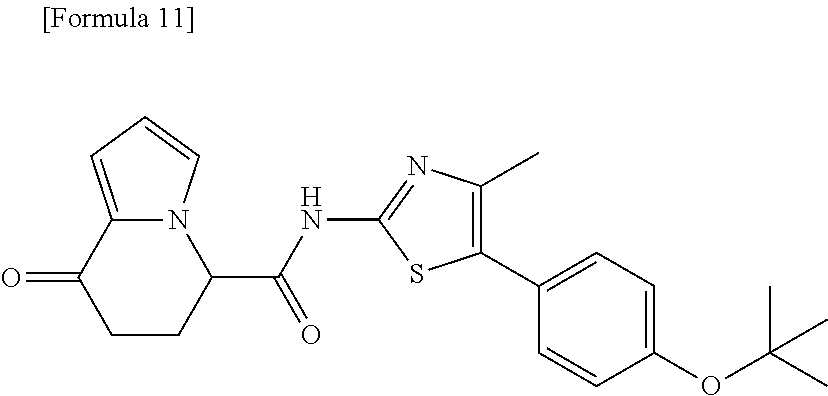

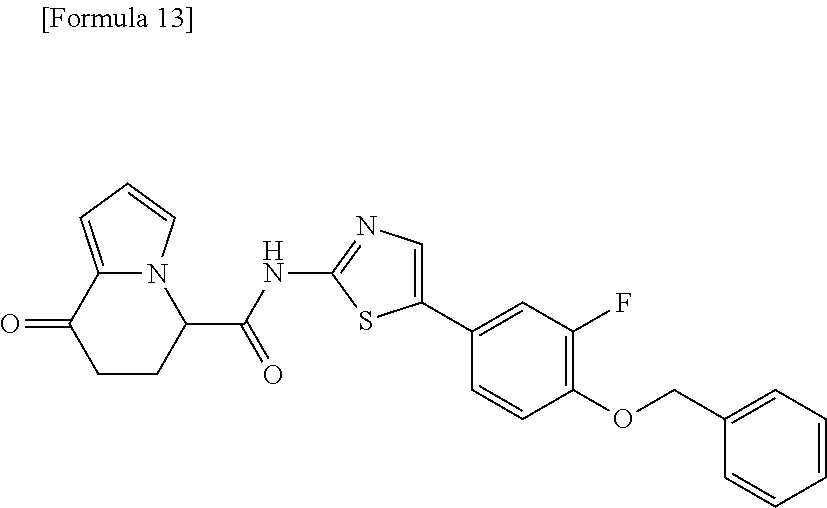
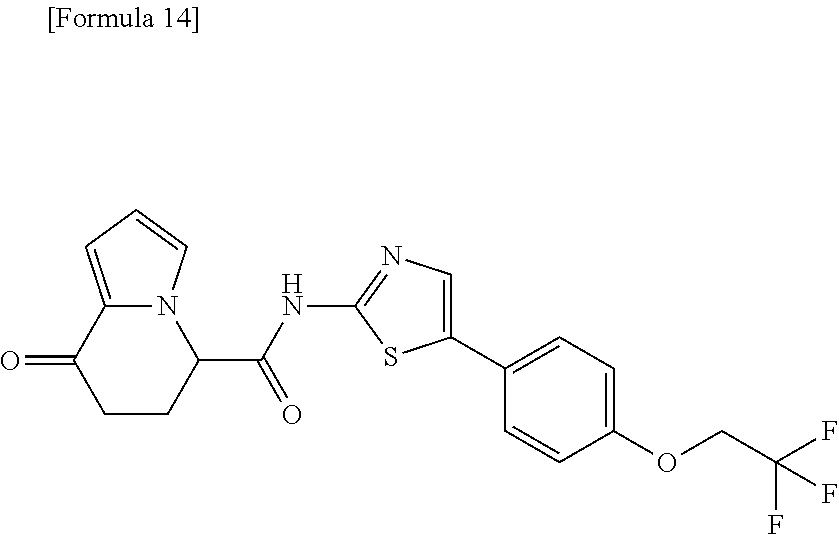
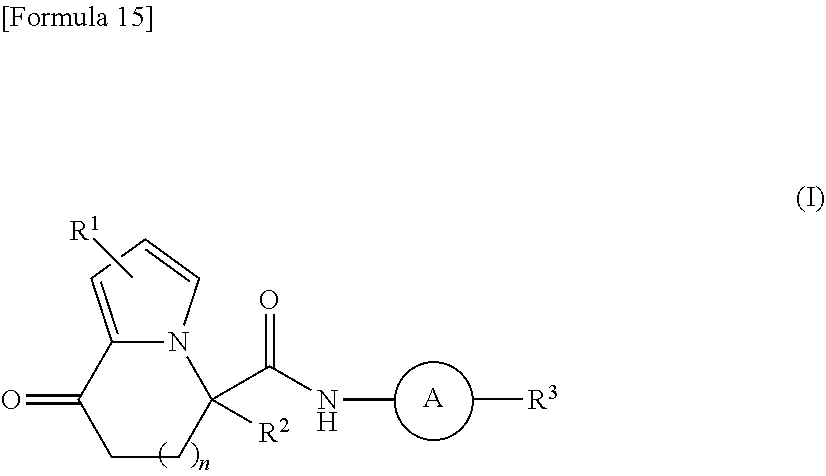
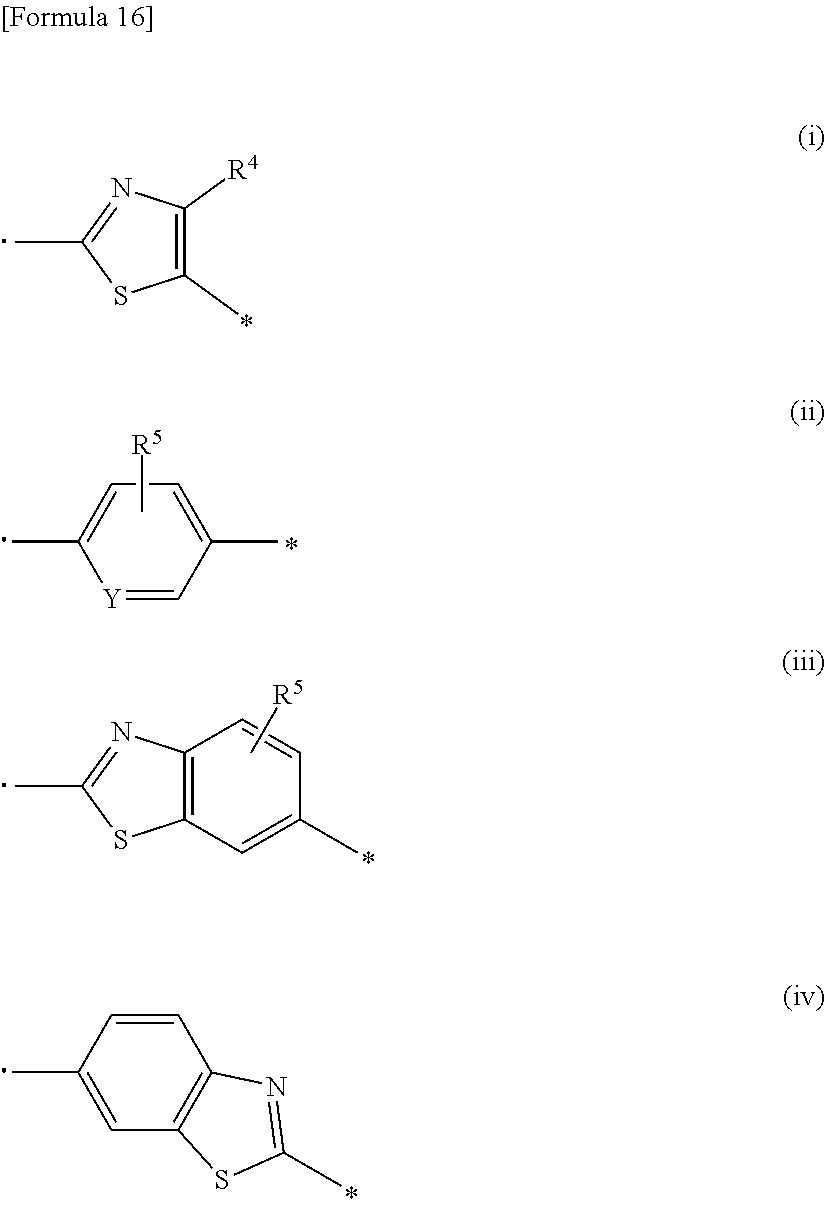

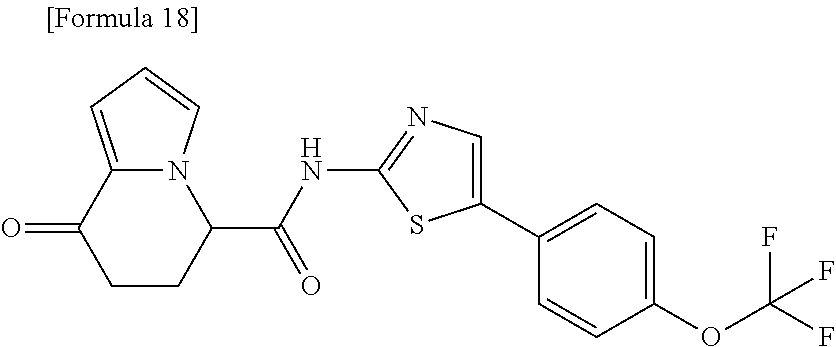
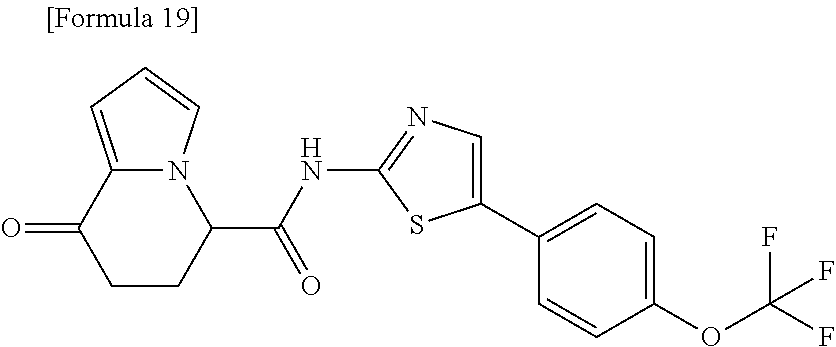
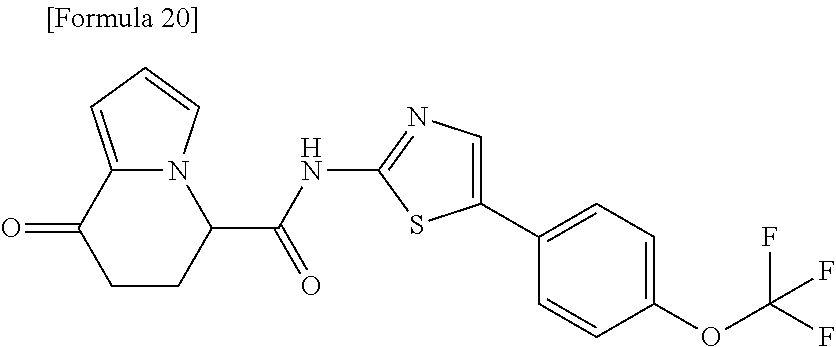
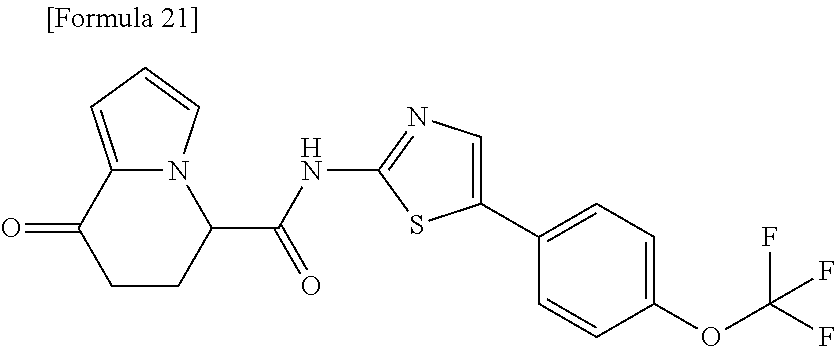

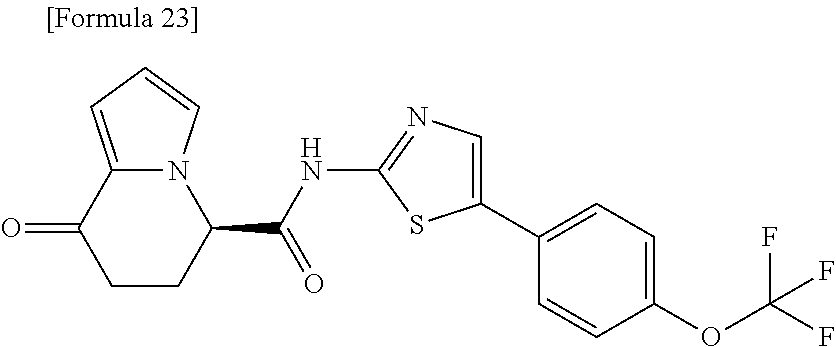

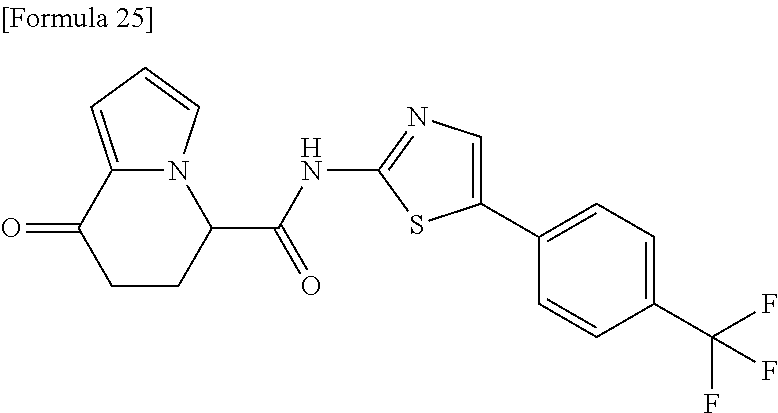



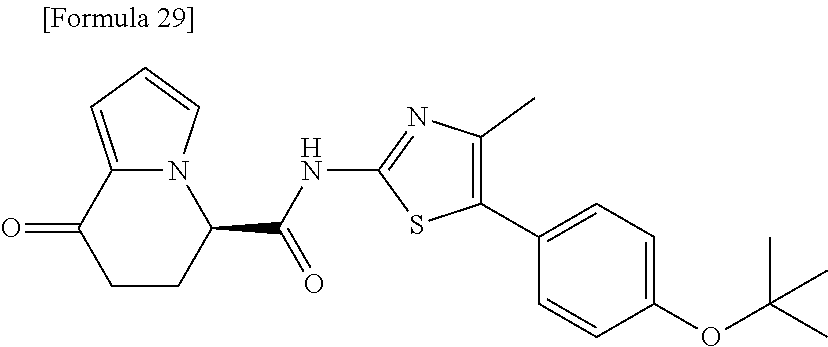

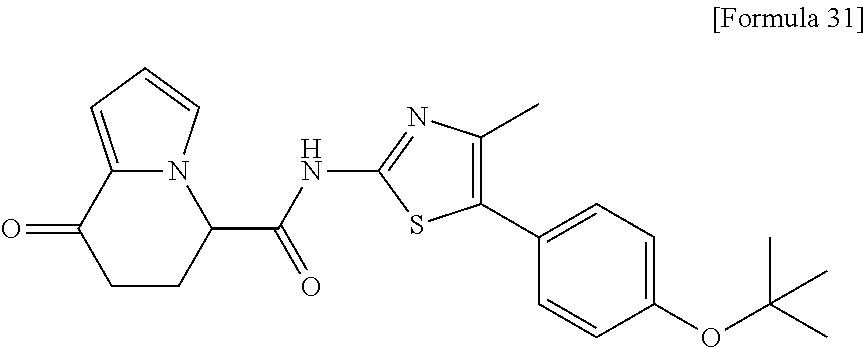

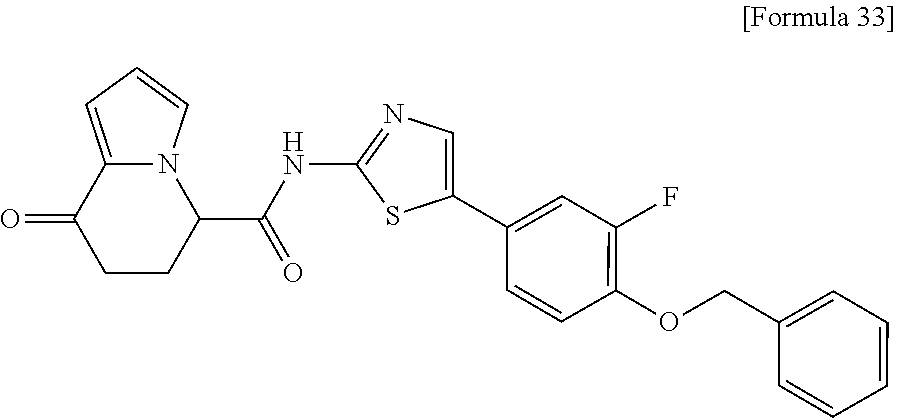
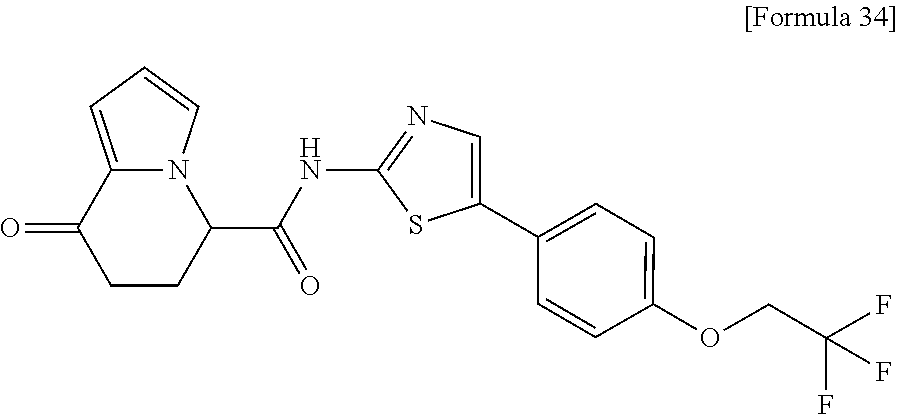
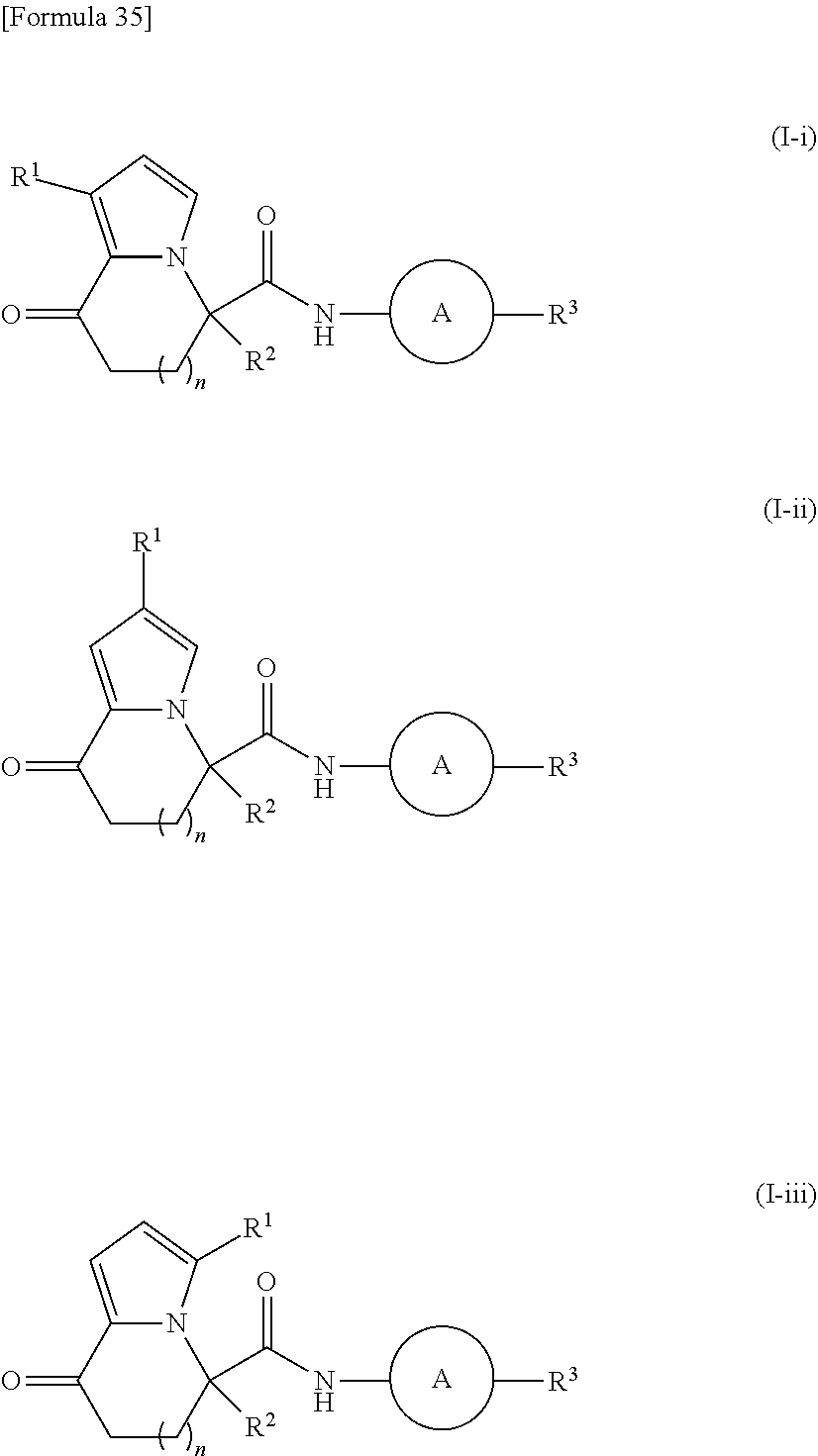

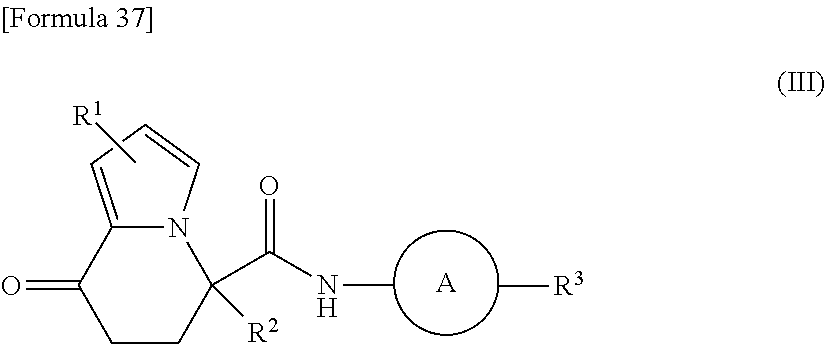


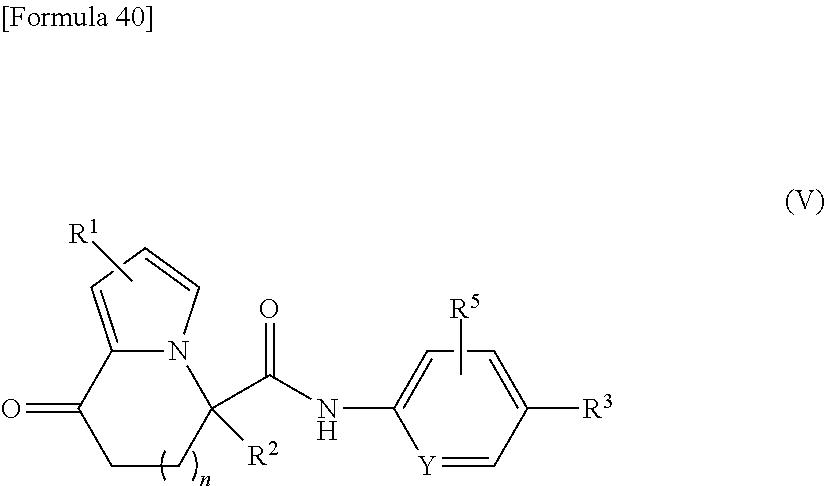



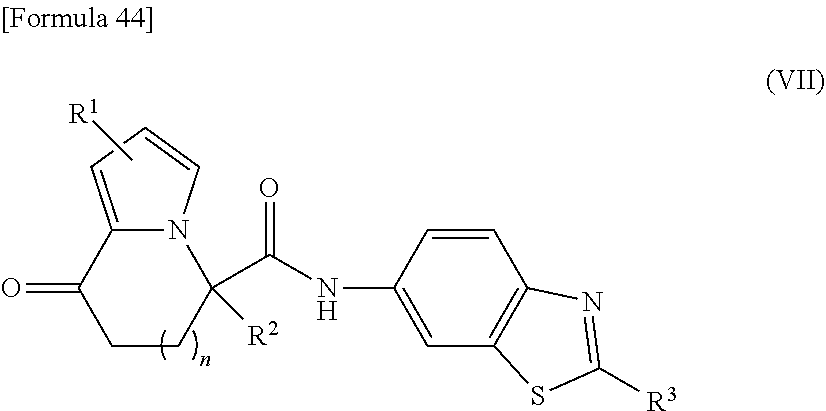



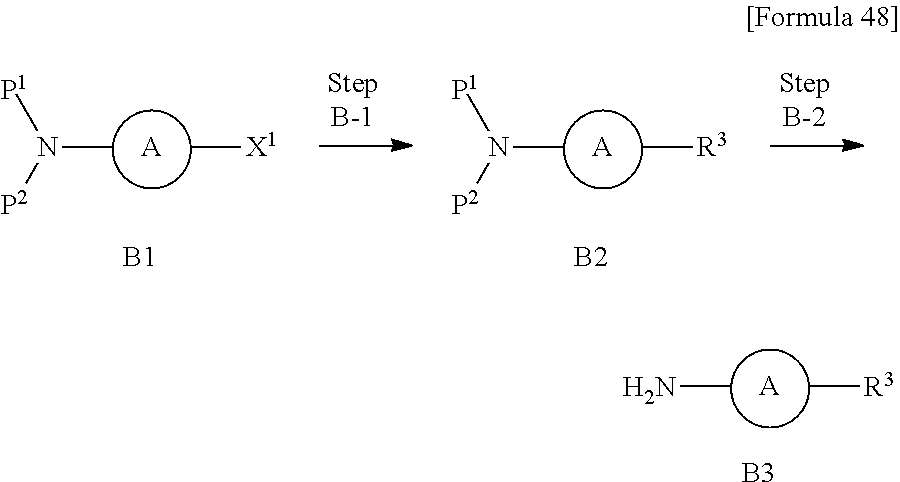
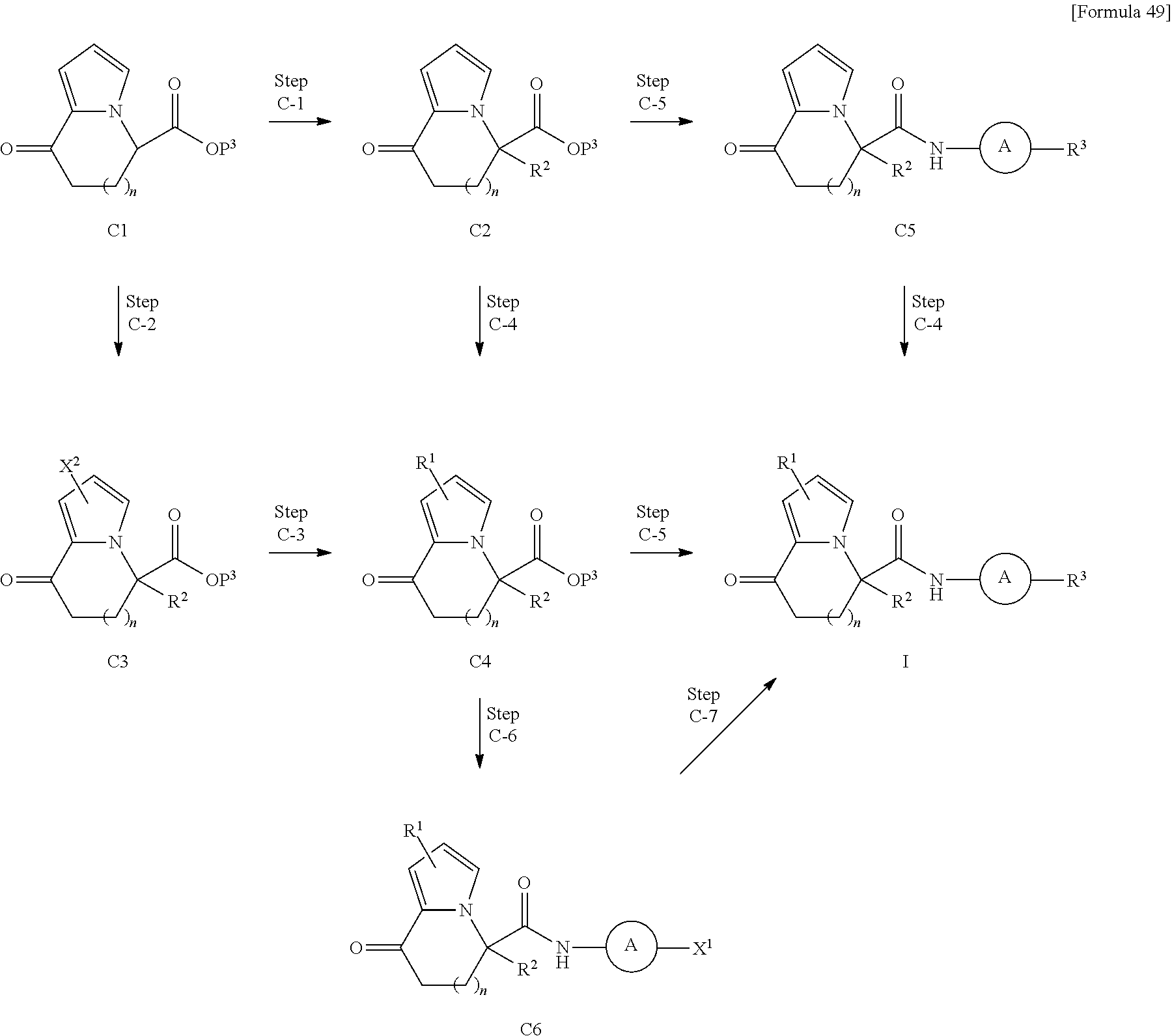
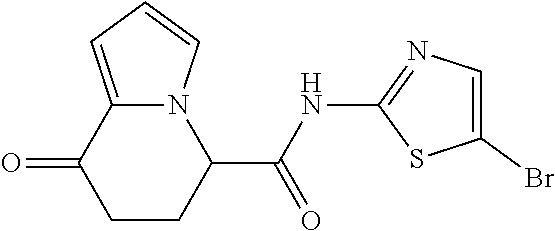


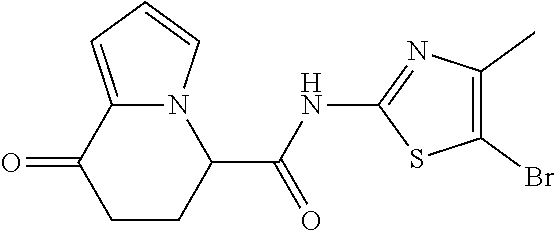
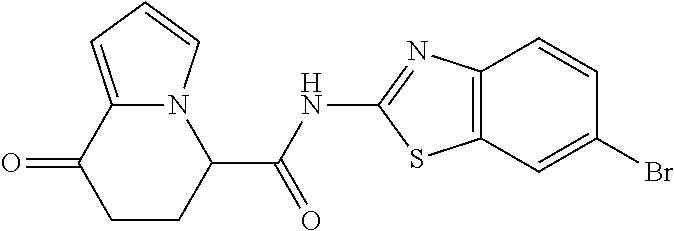

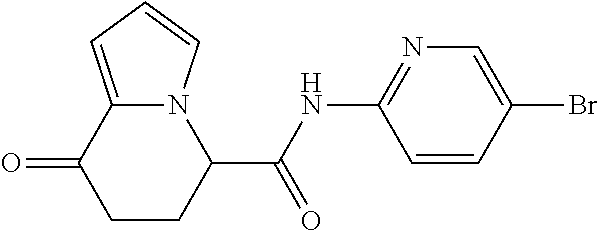

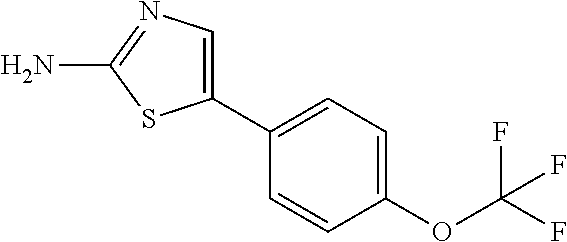
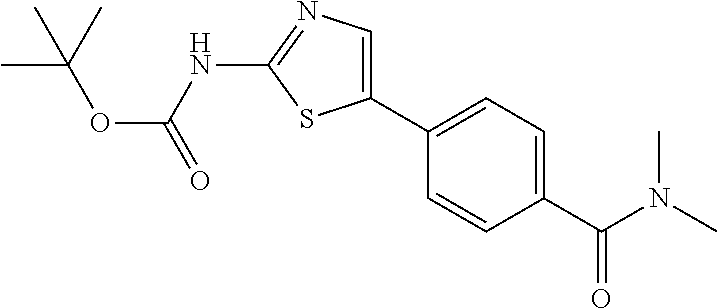
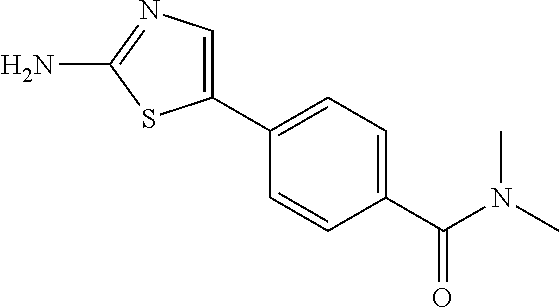
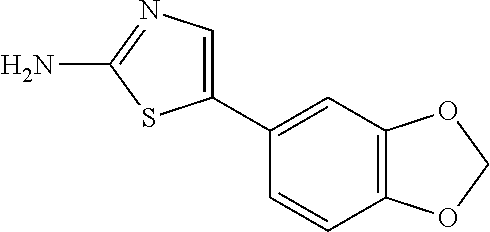

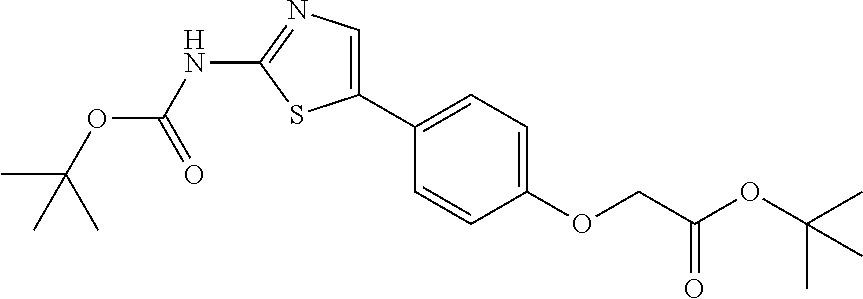
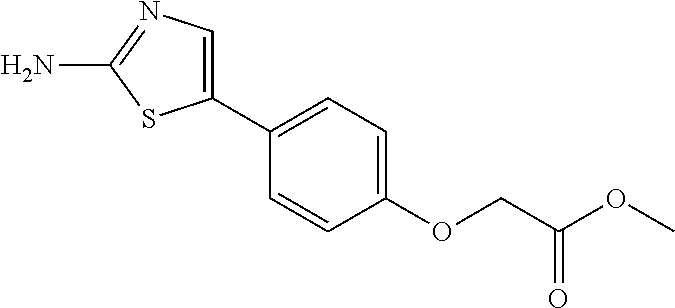

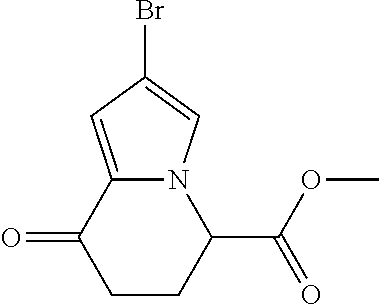

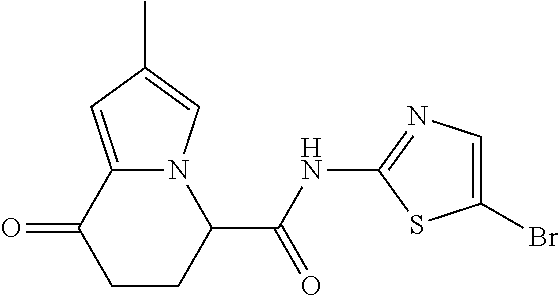

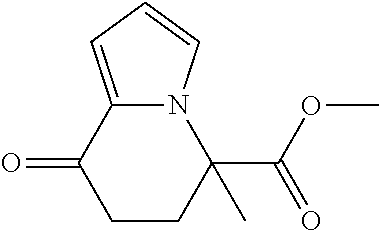
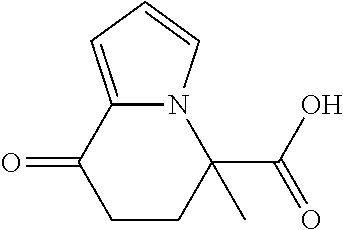

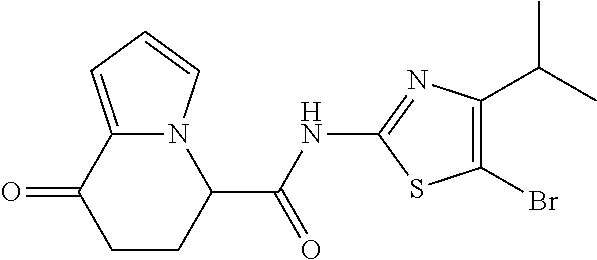

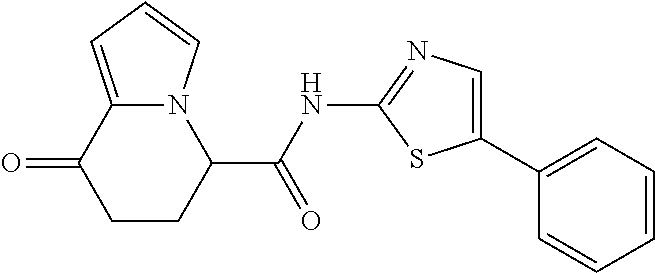
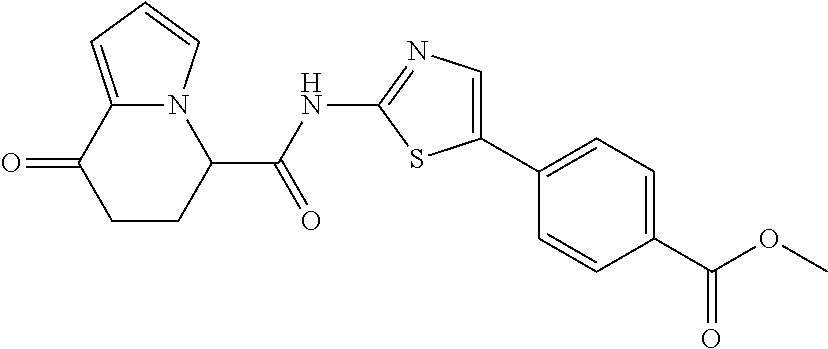
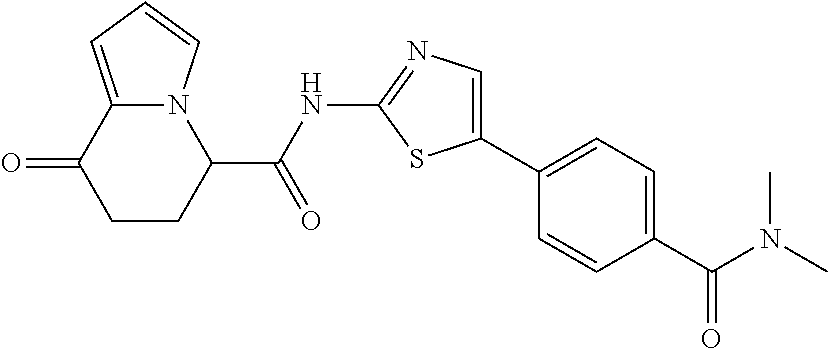
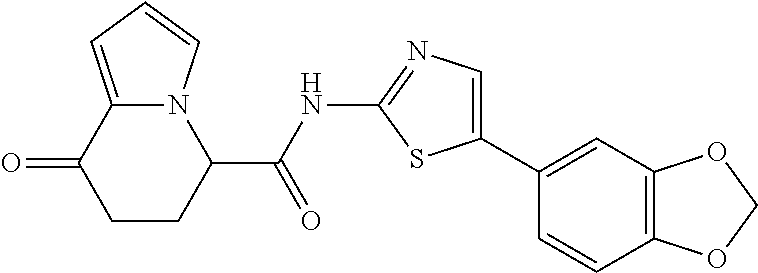

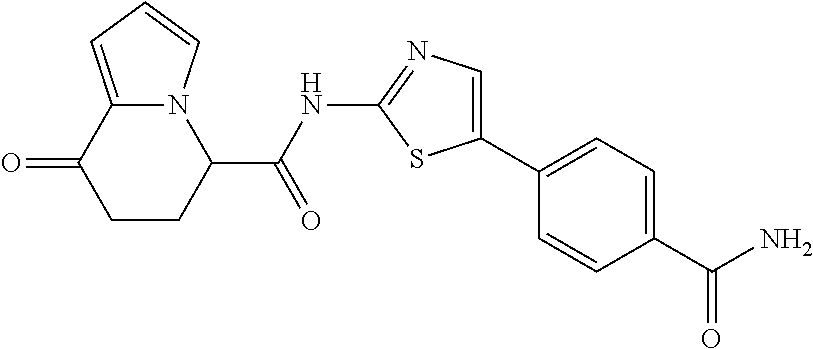
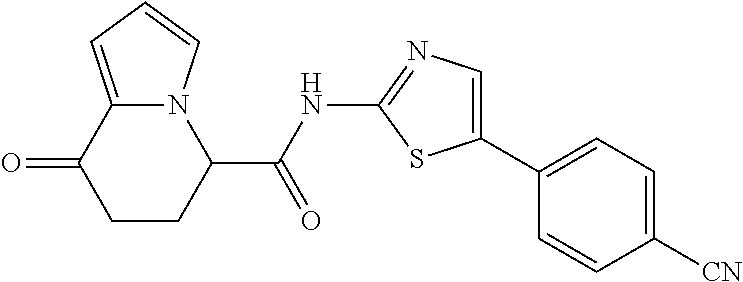



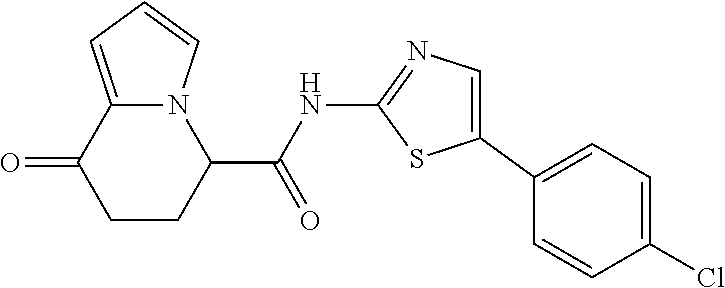

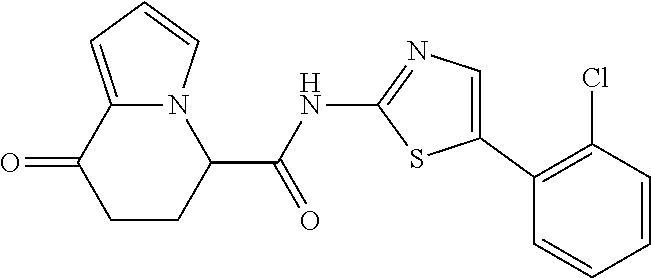

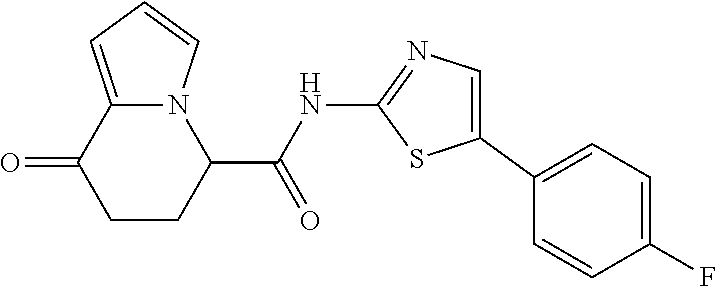
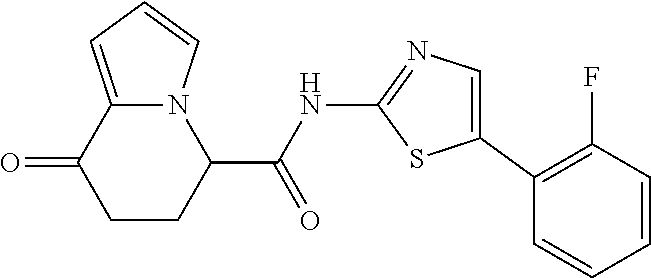

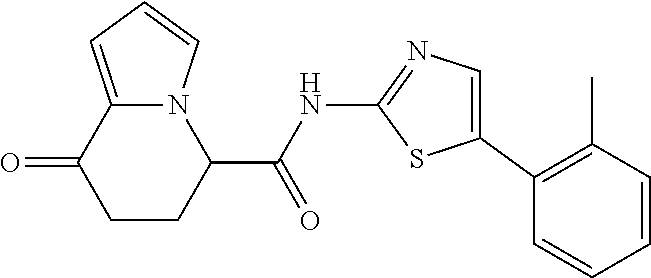


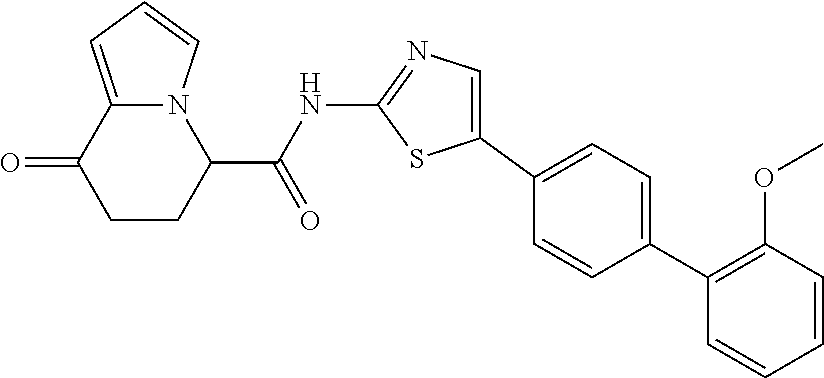
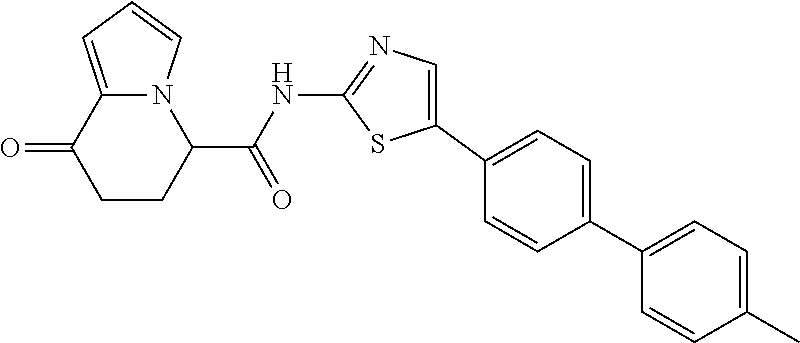



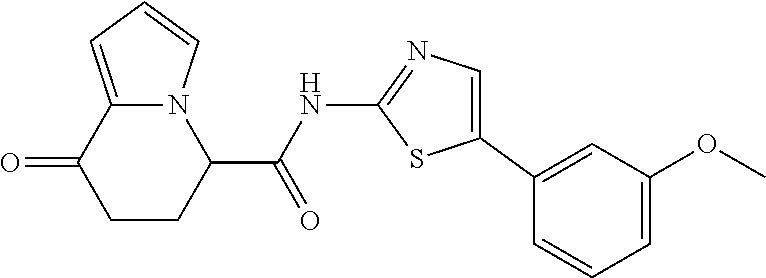

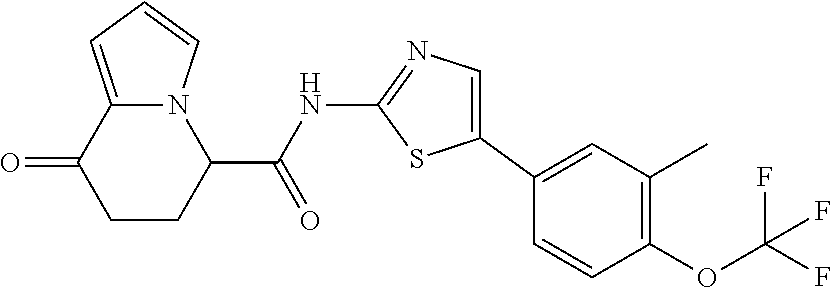
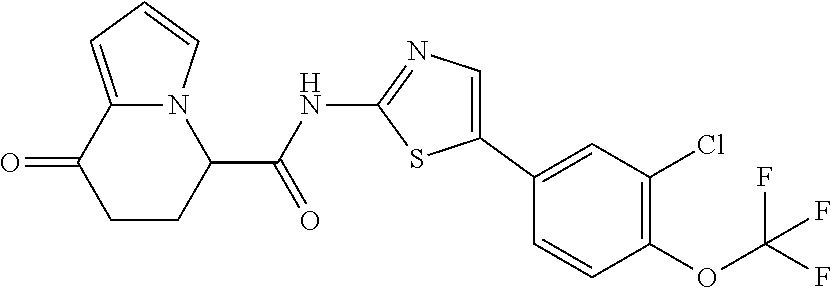

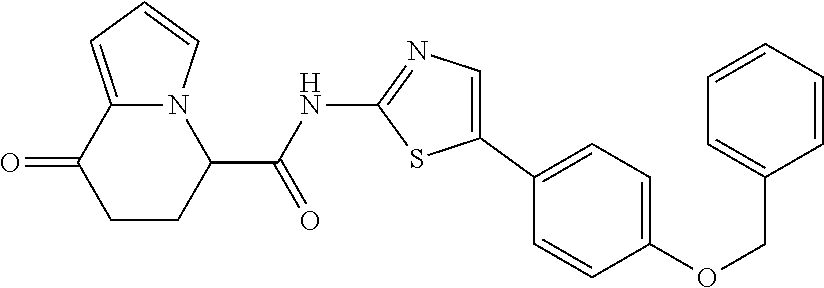
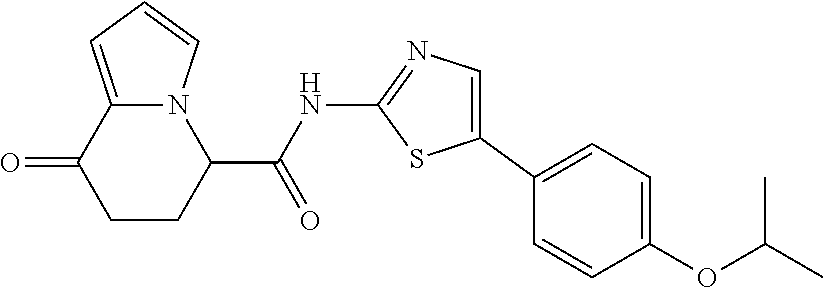
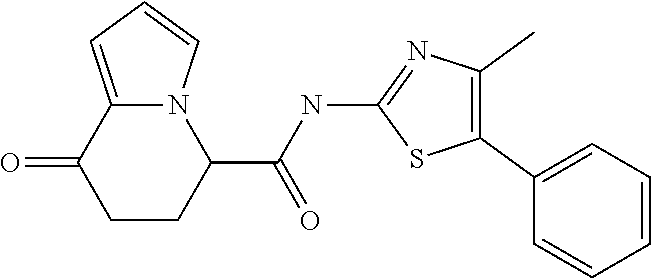
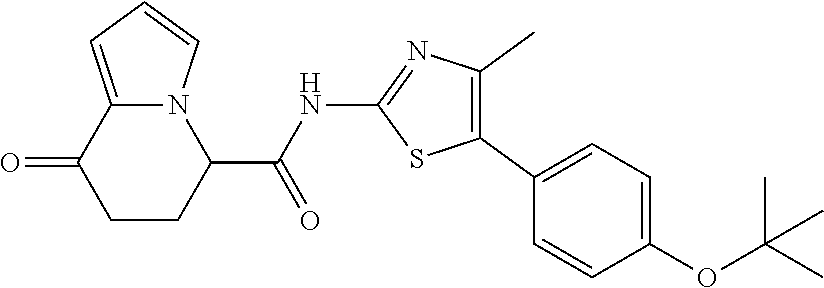
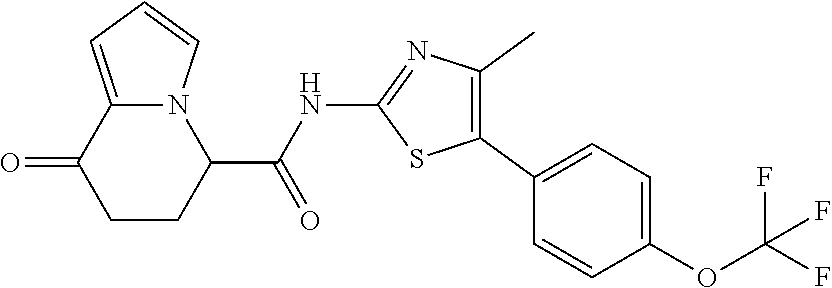
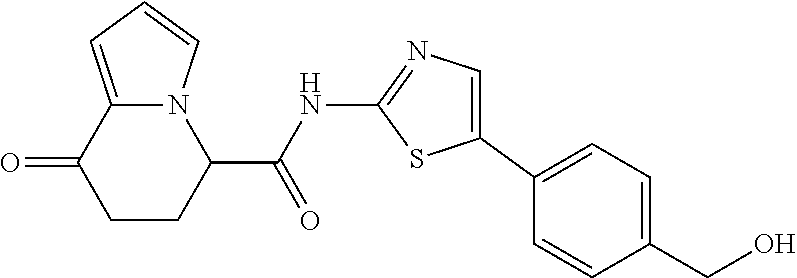

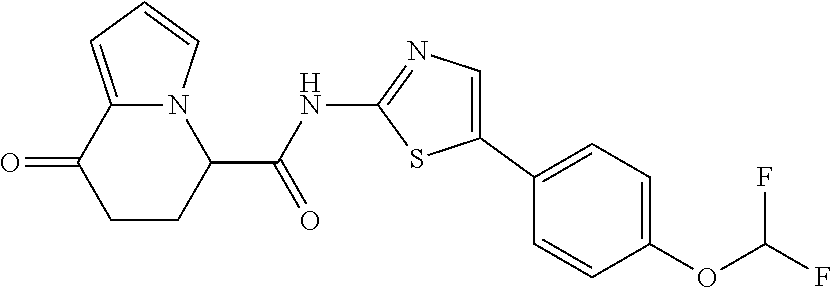
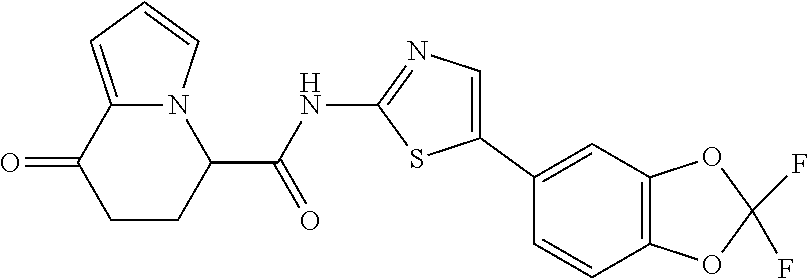
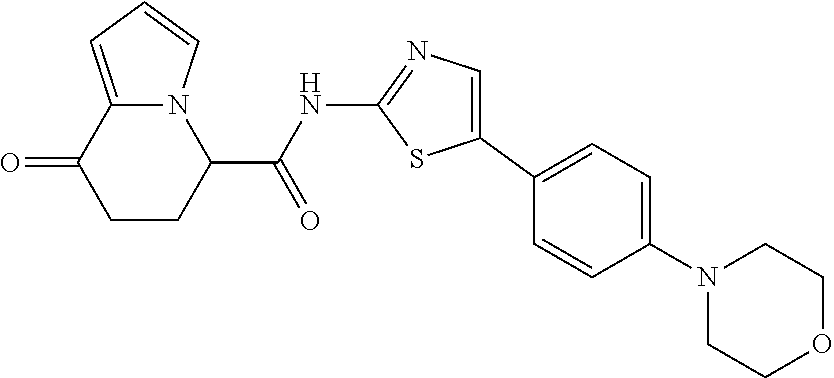


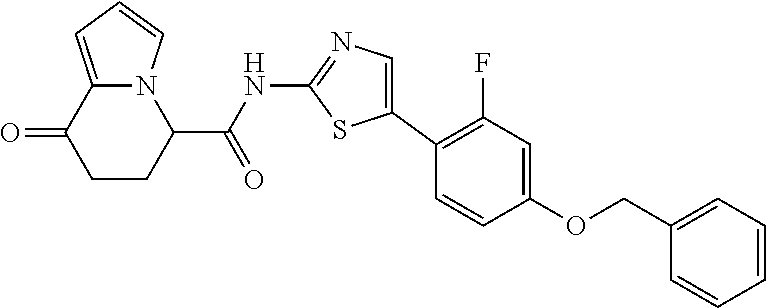
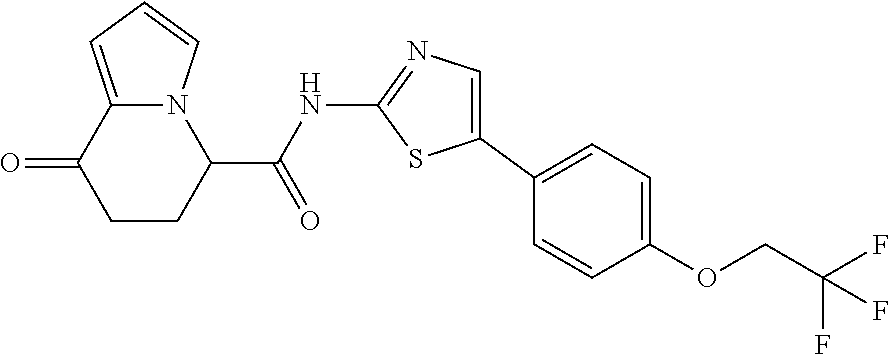



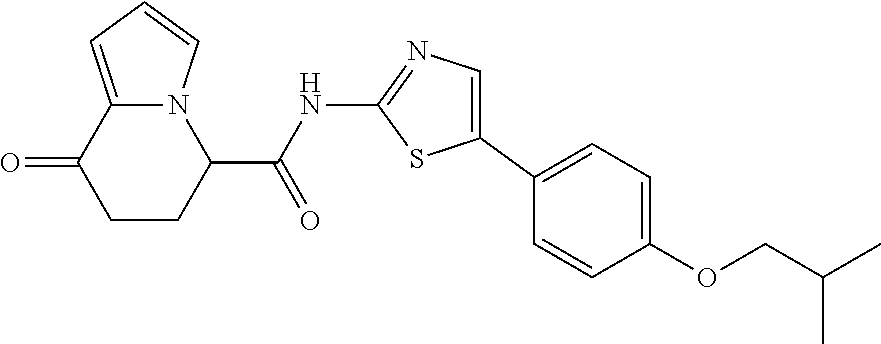
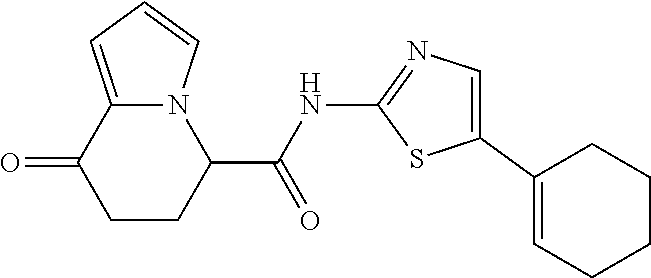
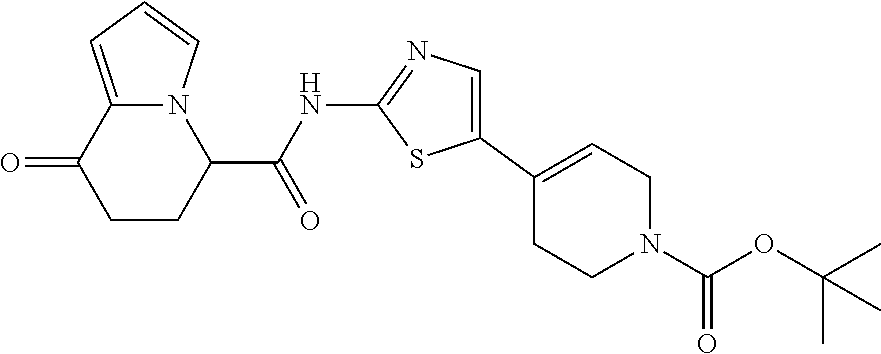
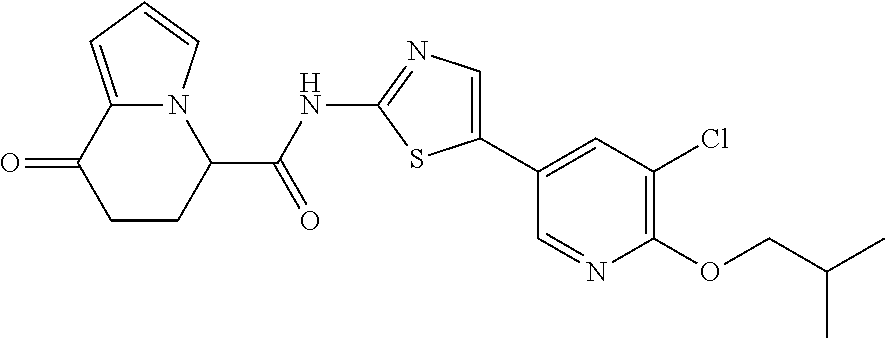


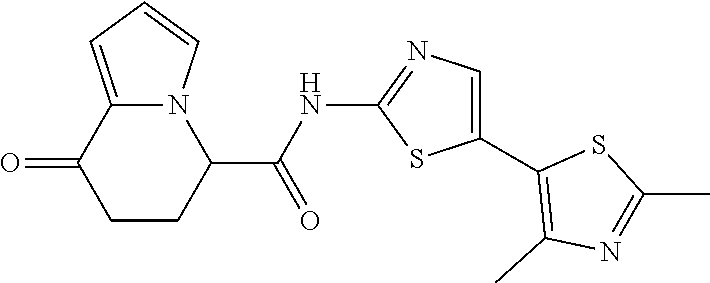
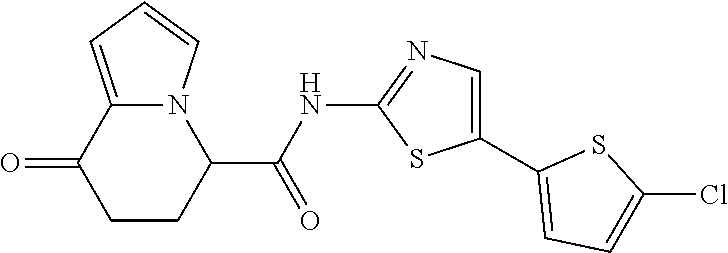
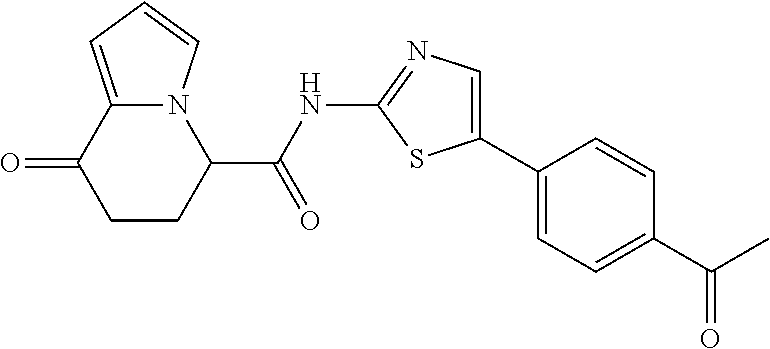
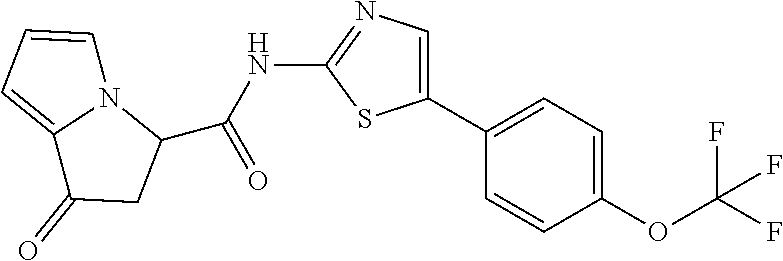







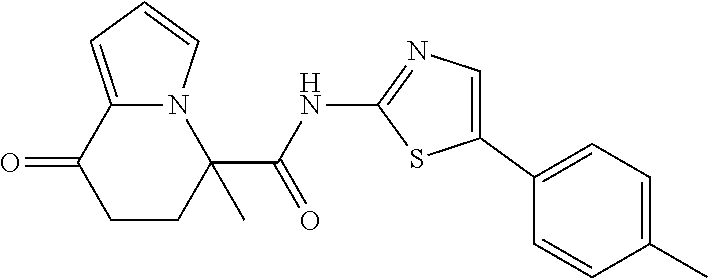


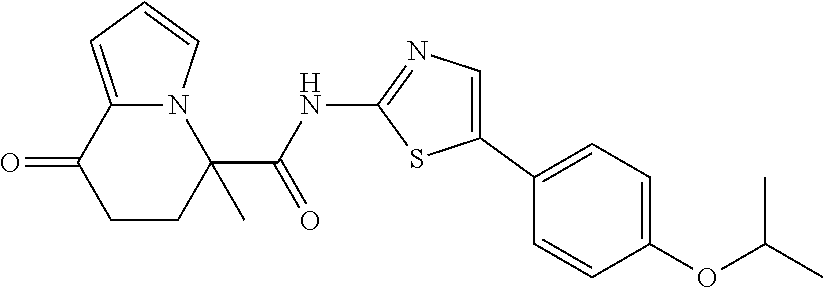

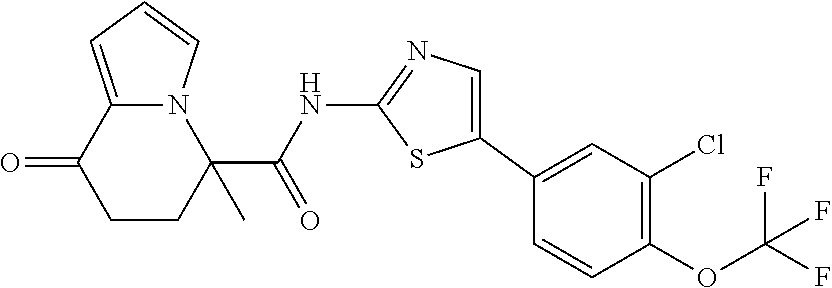













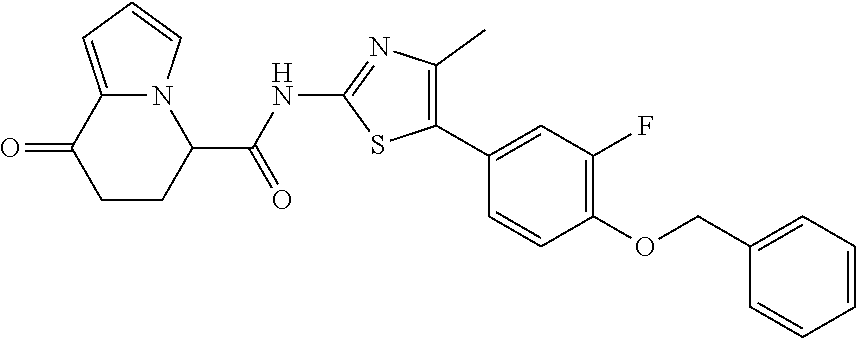
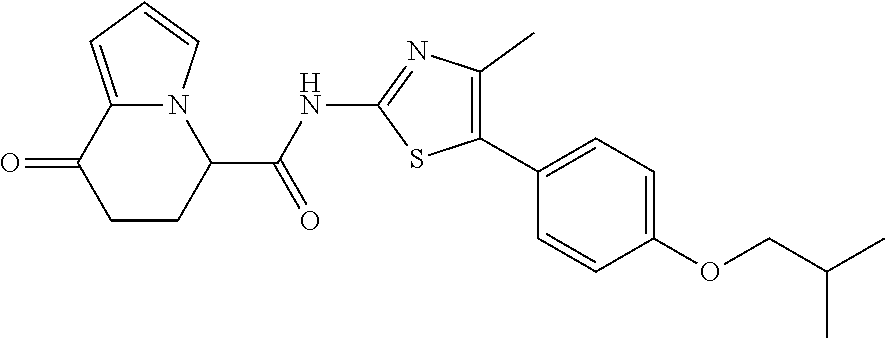
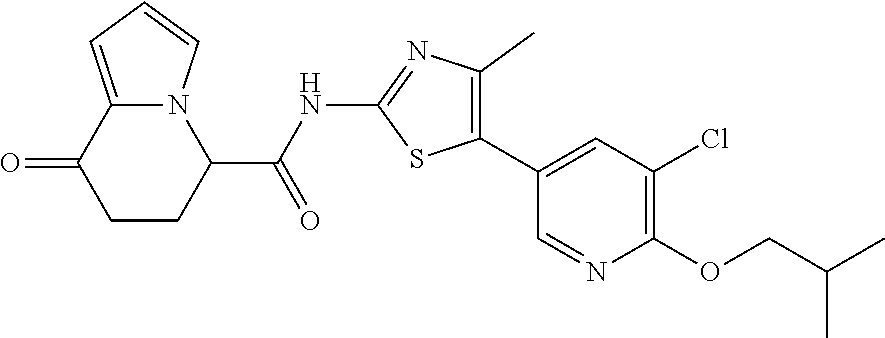
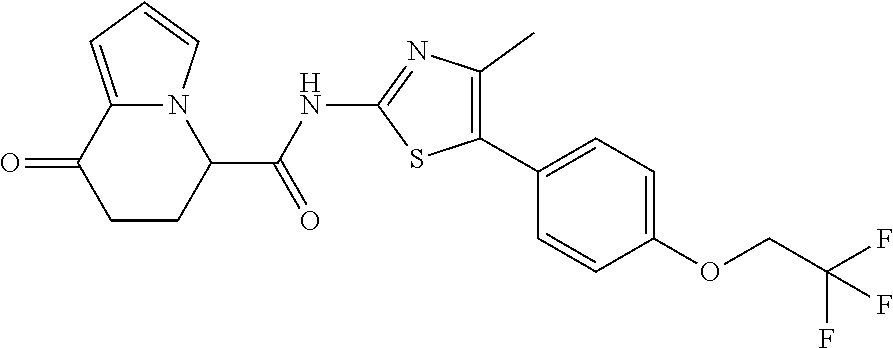
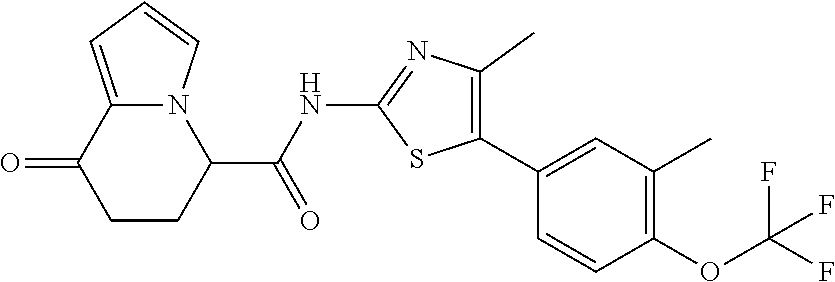

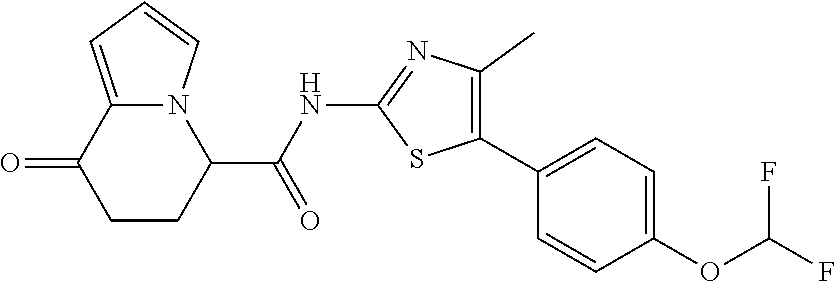

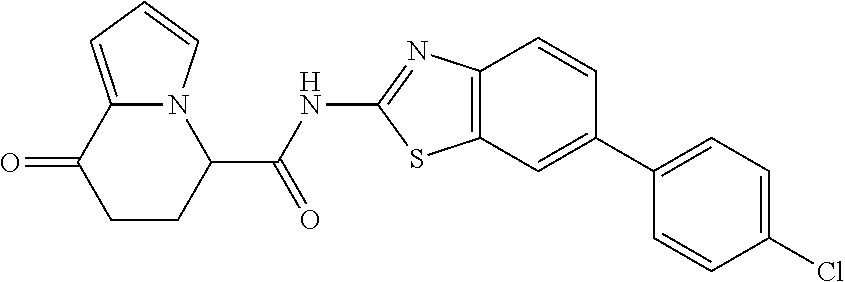

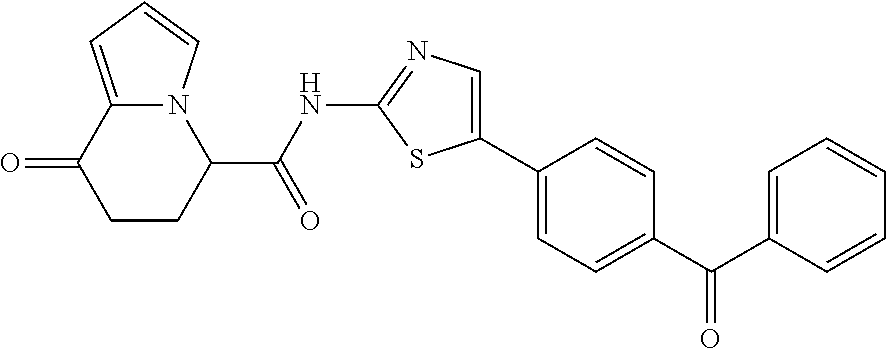

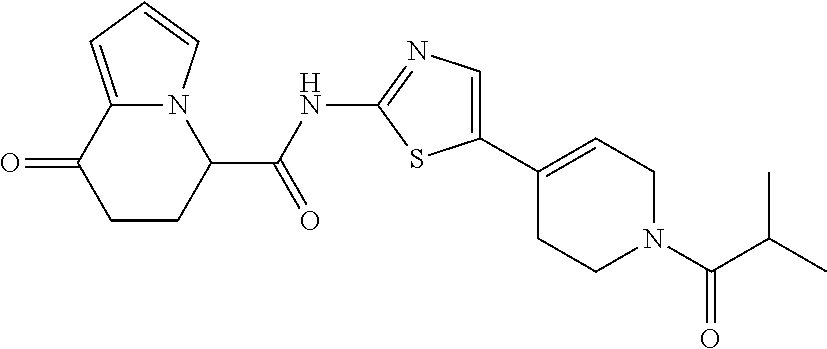


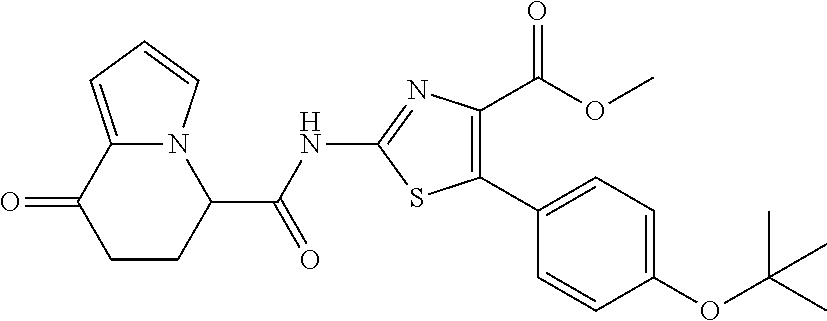

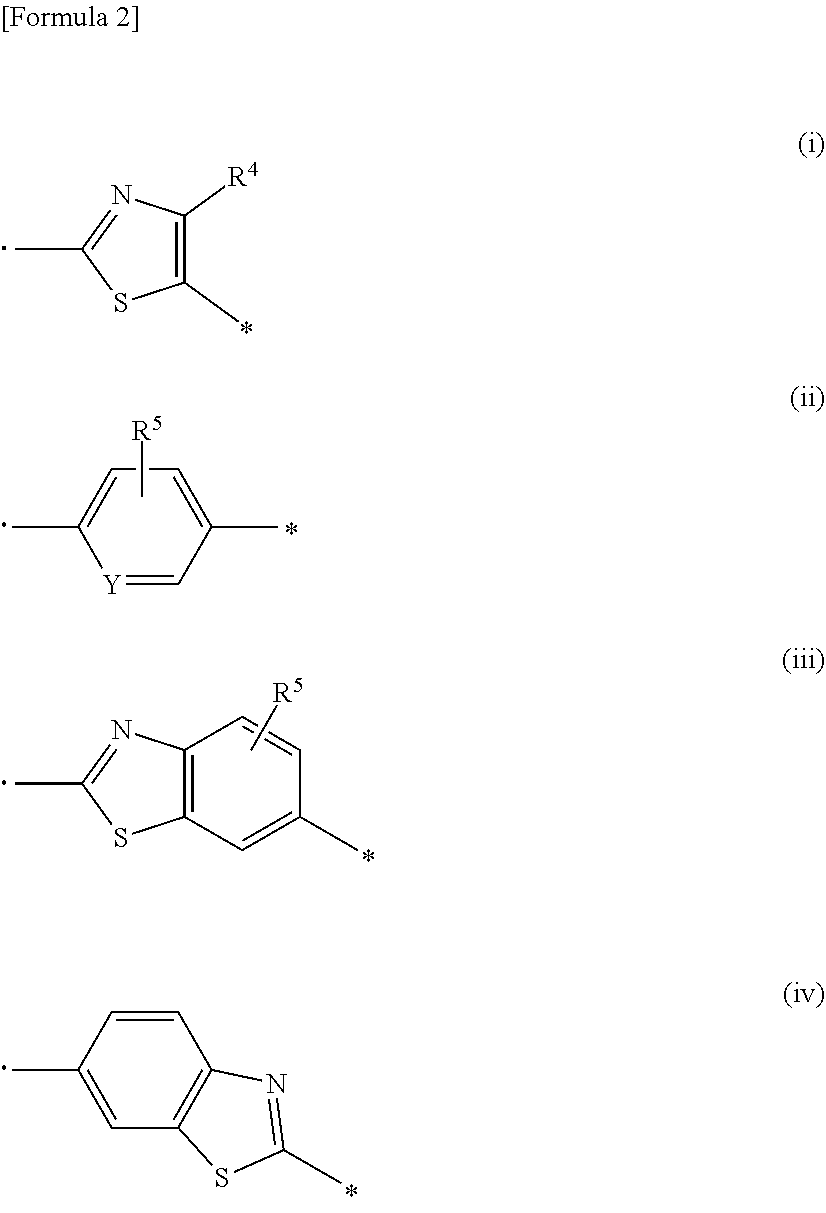

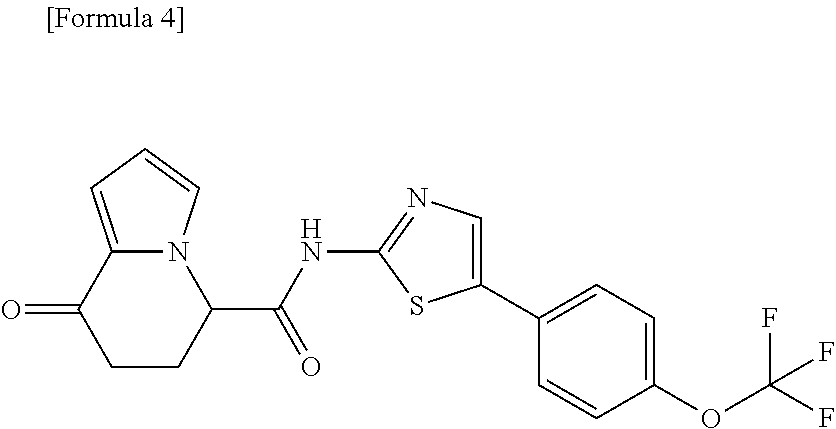
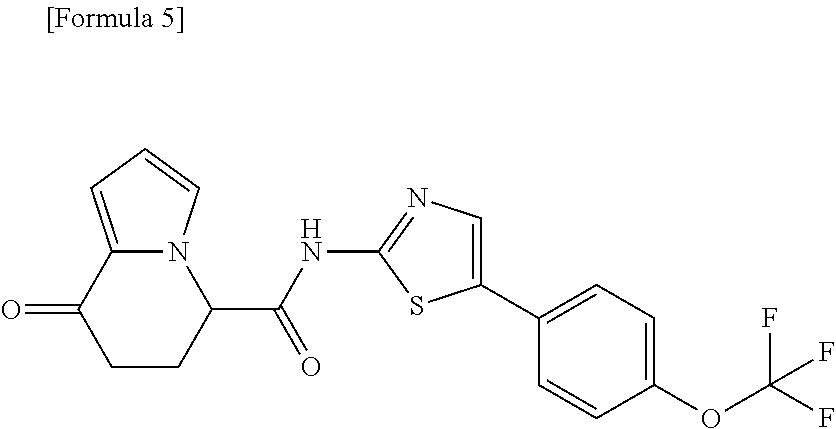
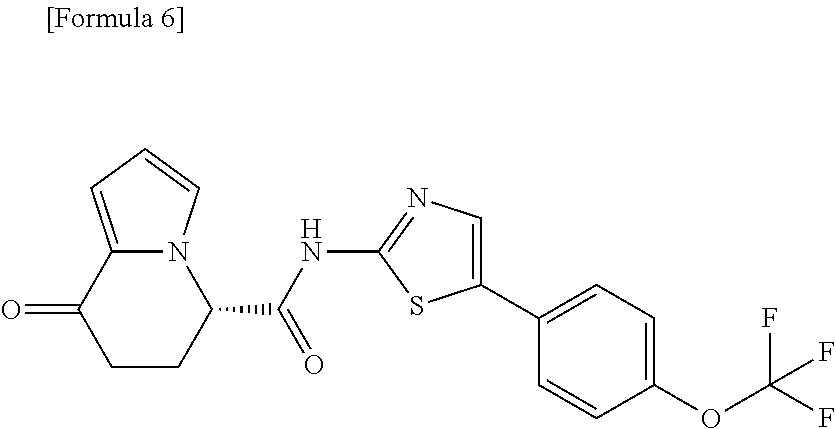
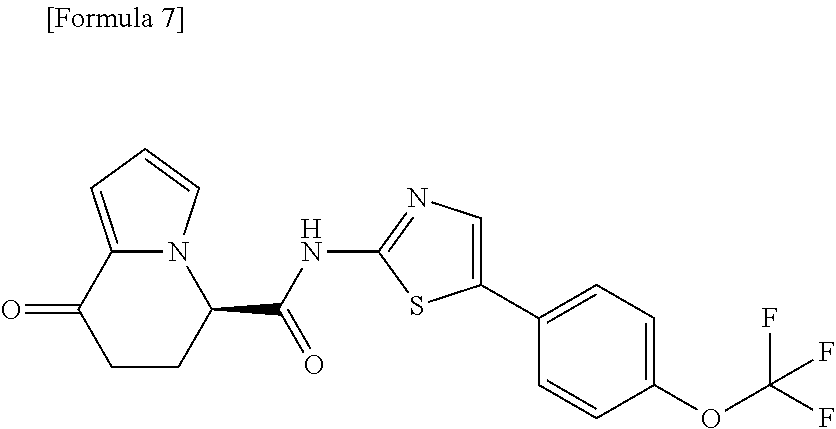


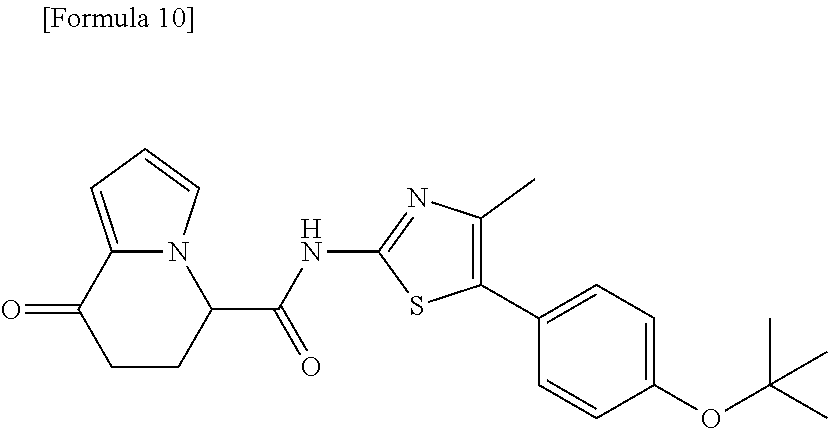

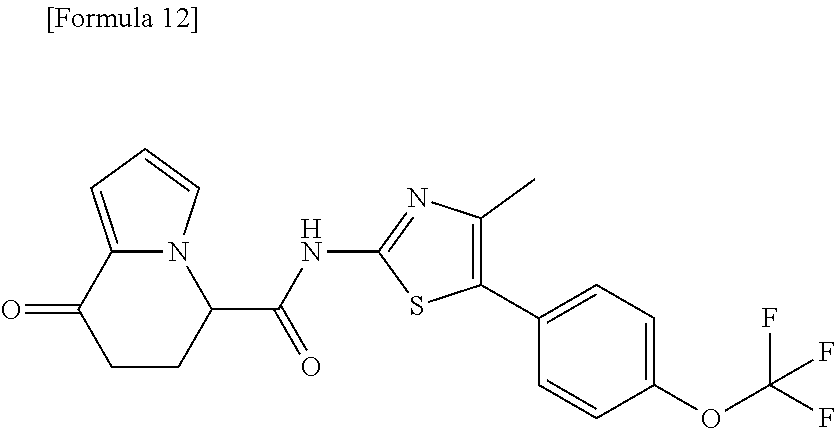
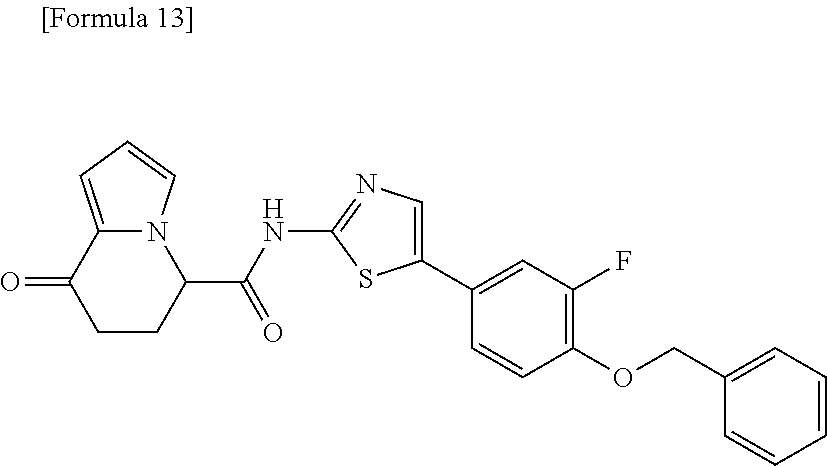
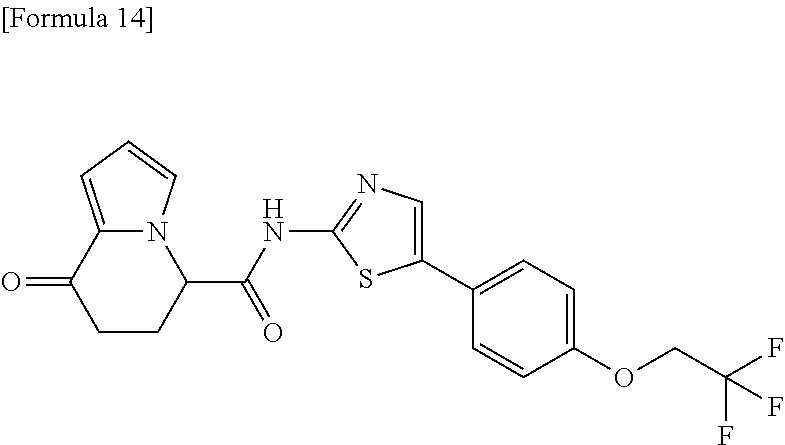
XML
uspto.report is an independent third-party trademark research tool that is not affiliated, endorsed, or sponsored by the United States Patent and Trademark Office (USPTO) or any other governmental organization. The information provided by uspto.report is based on publicly available data at the time of writing and is intended for informational purposes only.
While we strive to provide accurate and up-to-date information, we do not guarantee the accuracy, completeness, reliability, or suitability of the information displayed on this site. The use of this site is at your own risk. Any reliance you place on such information is therefore strictly at your own risk.
All official trademark data, including owner information, should be verified by visiting the official USPTO website at www.uspto.gov. This site is not intended to replace professional legal advice and should not be used as a substitute for consulting with a legal professional who is knowledgeable about trademark law.